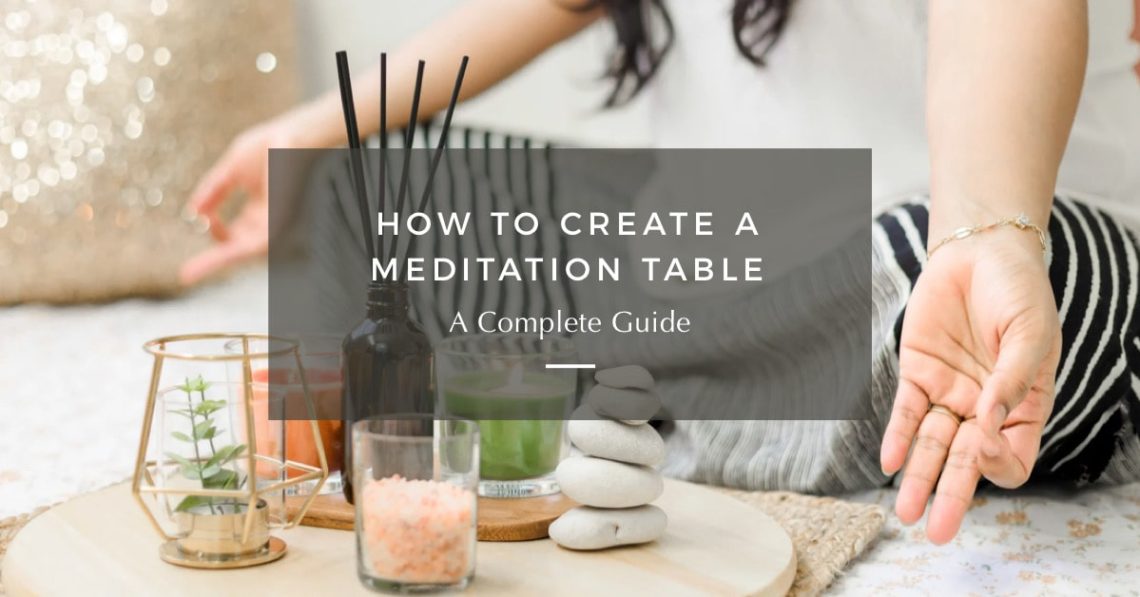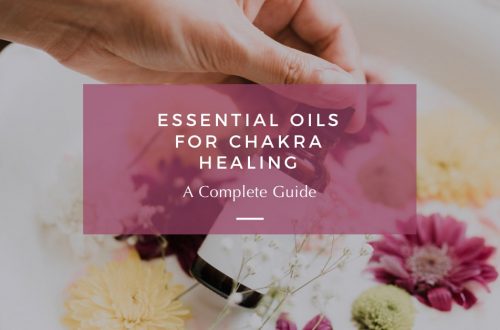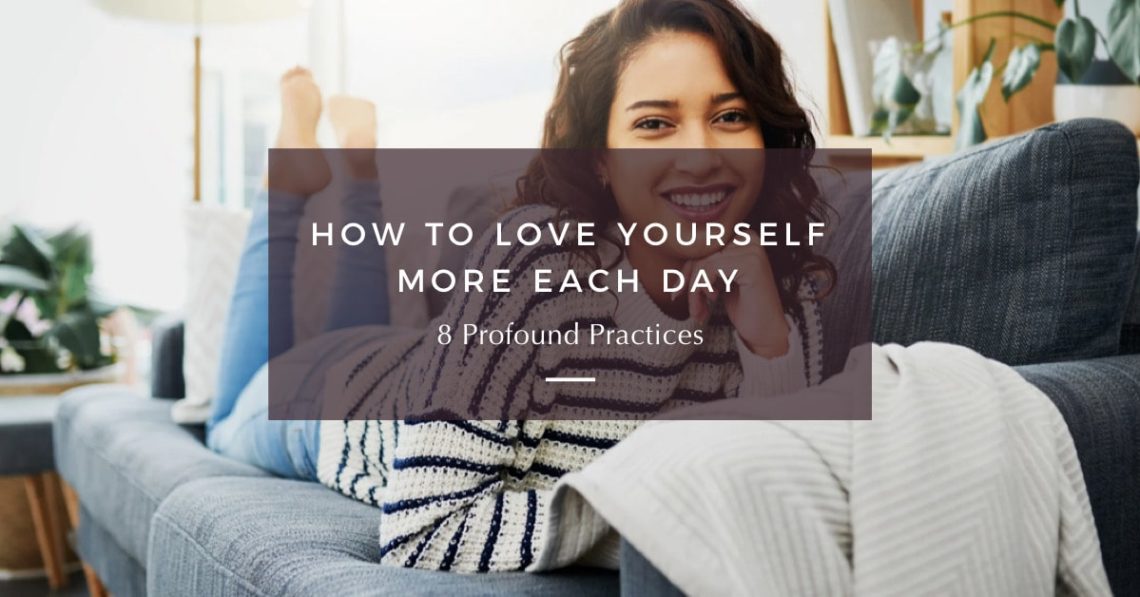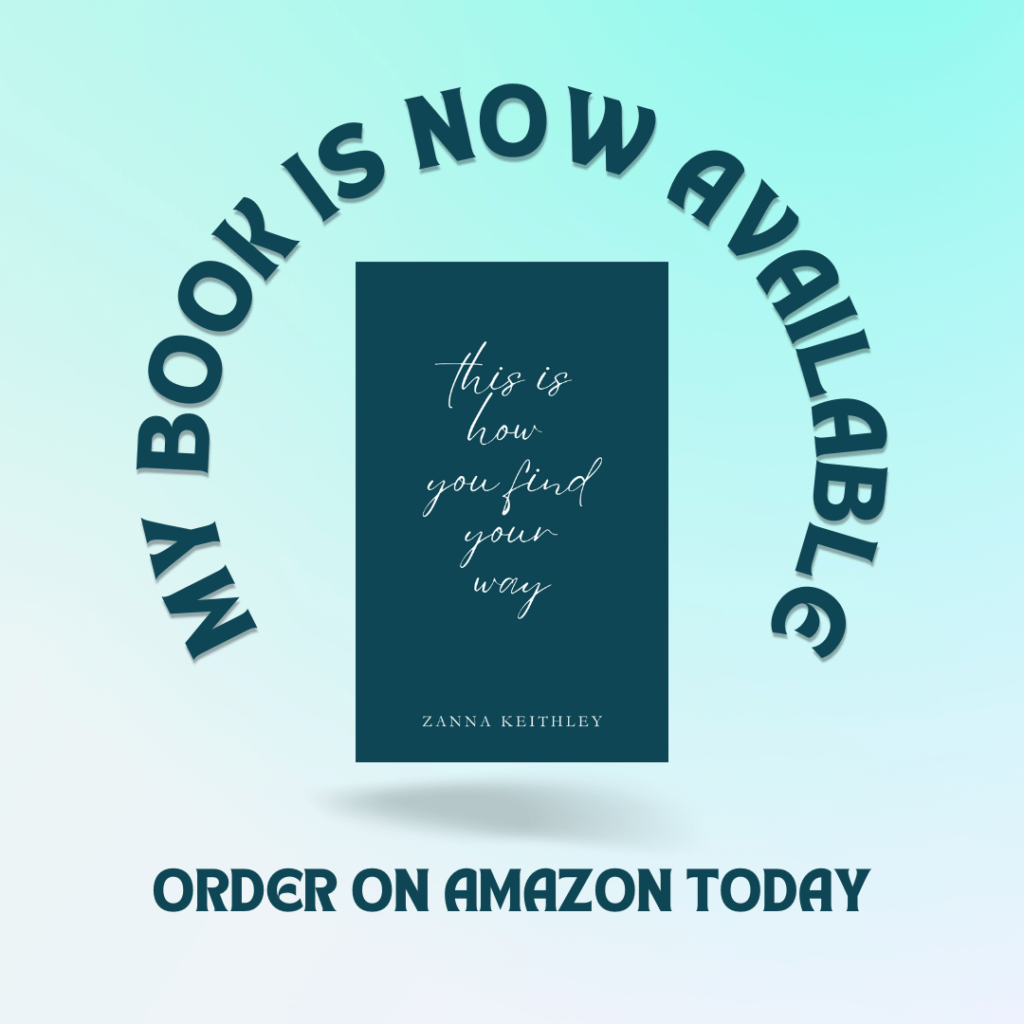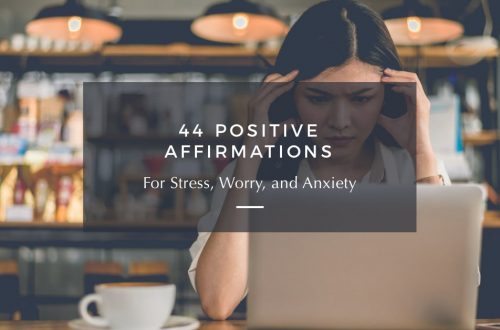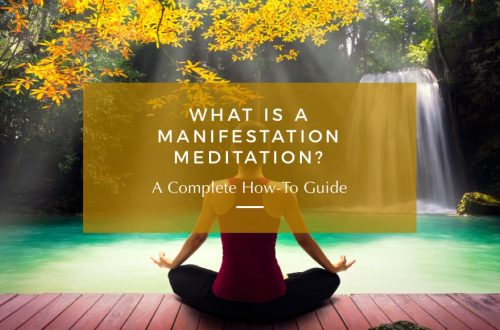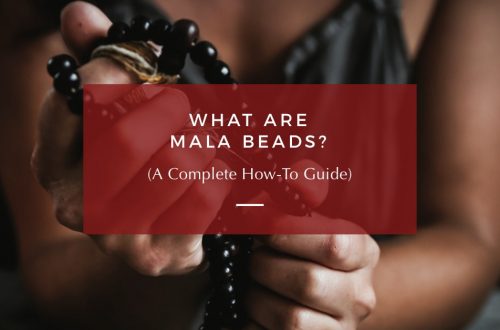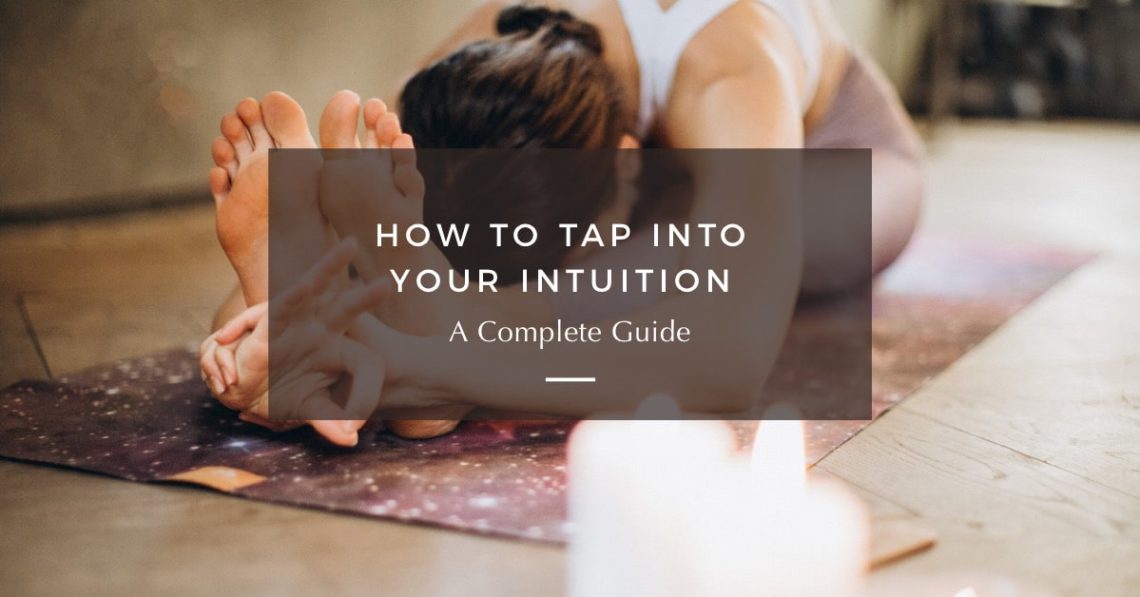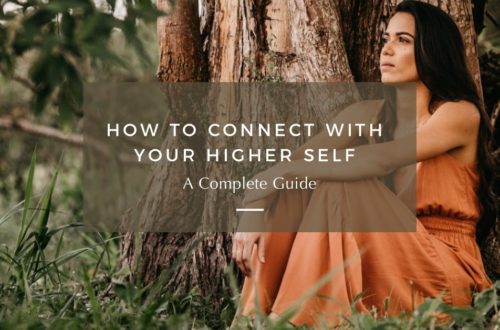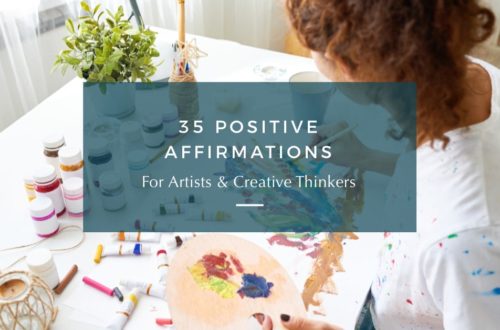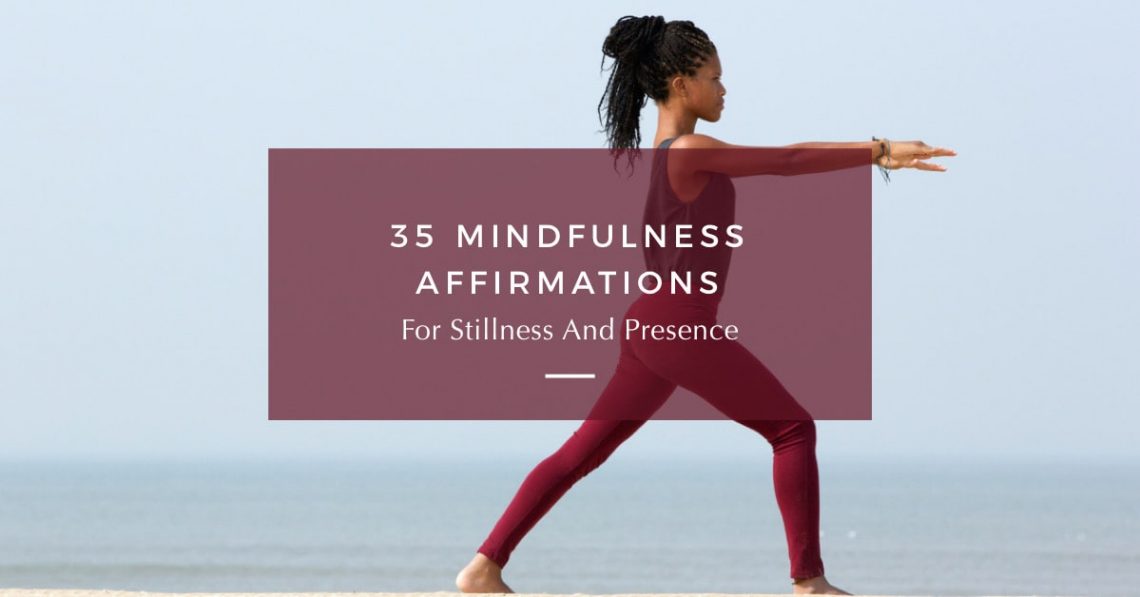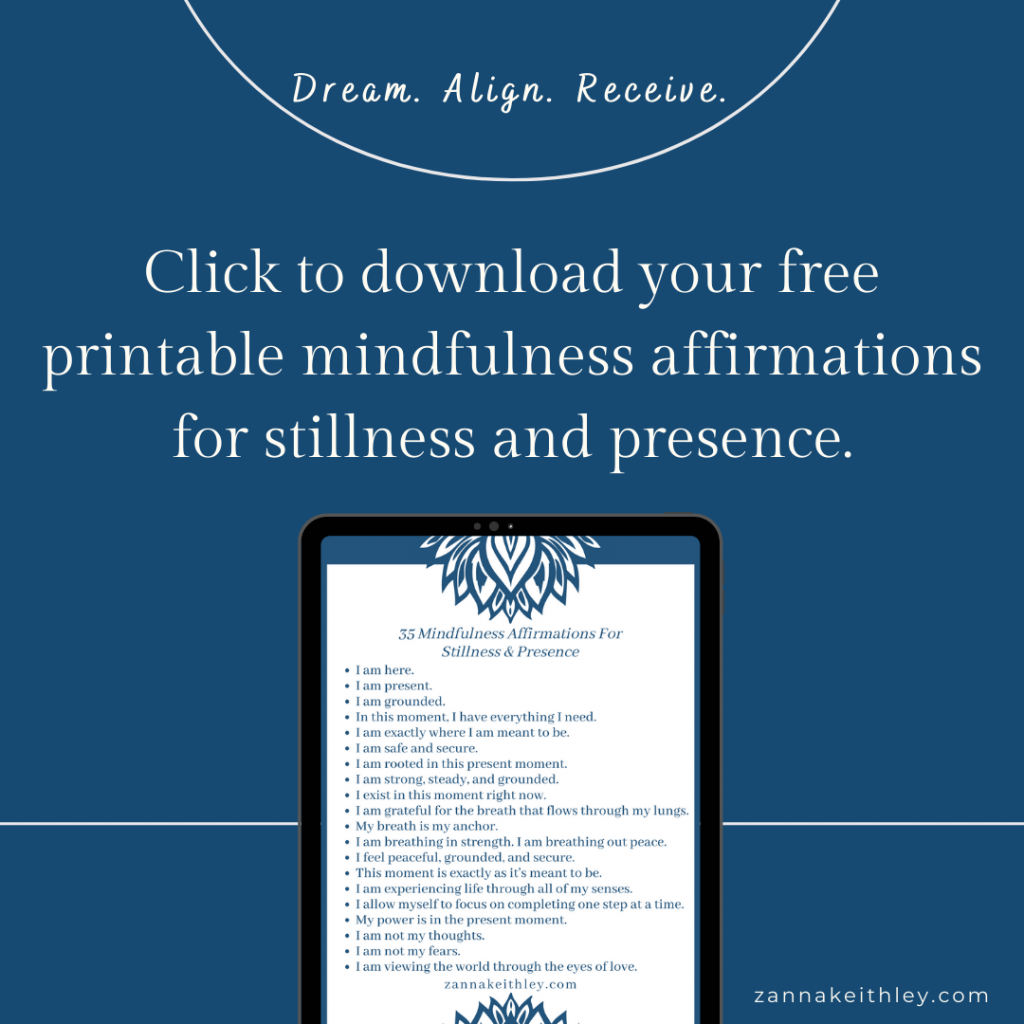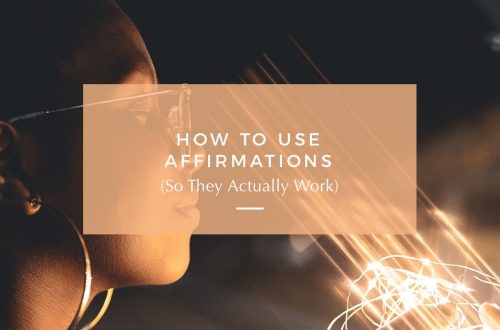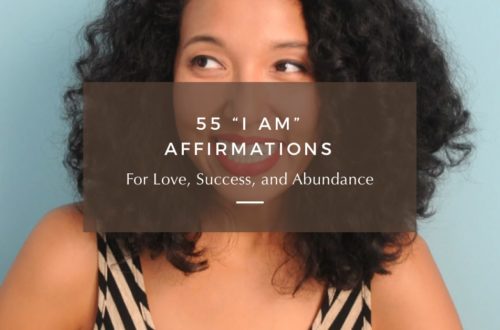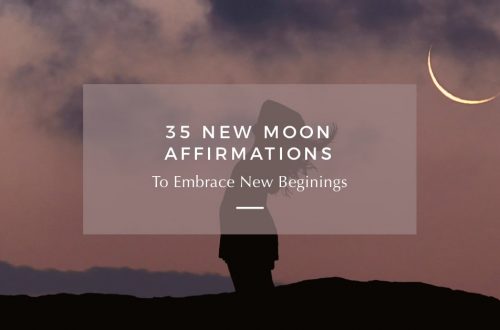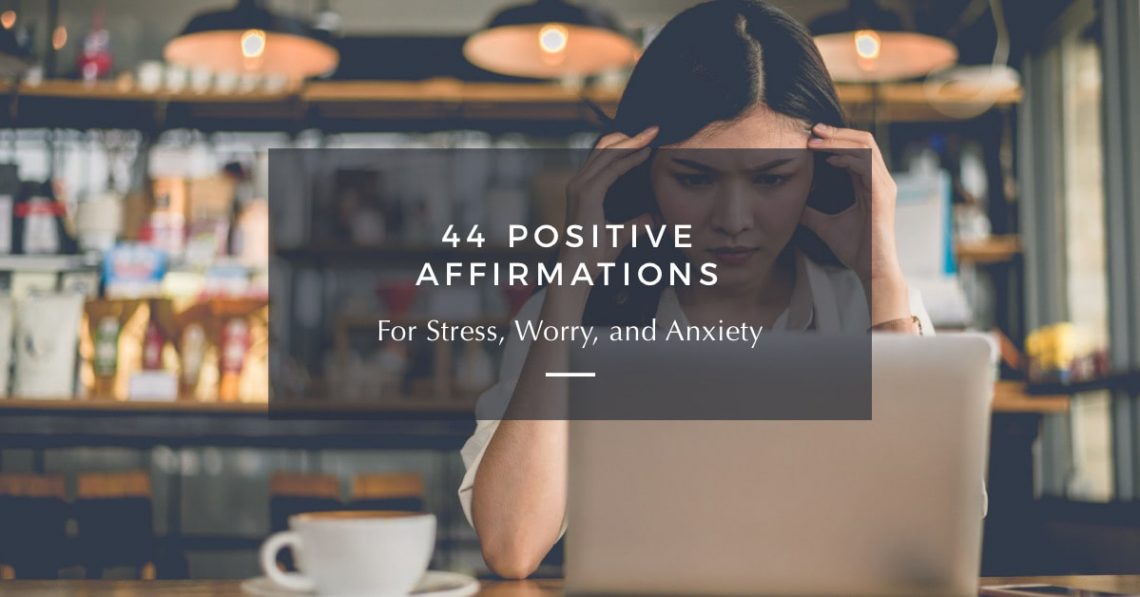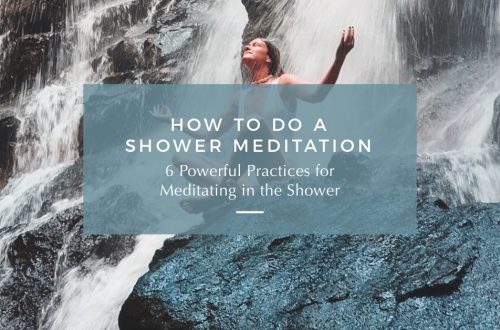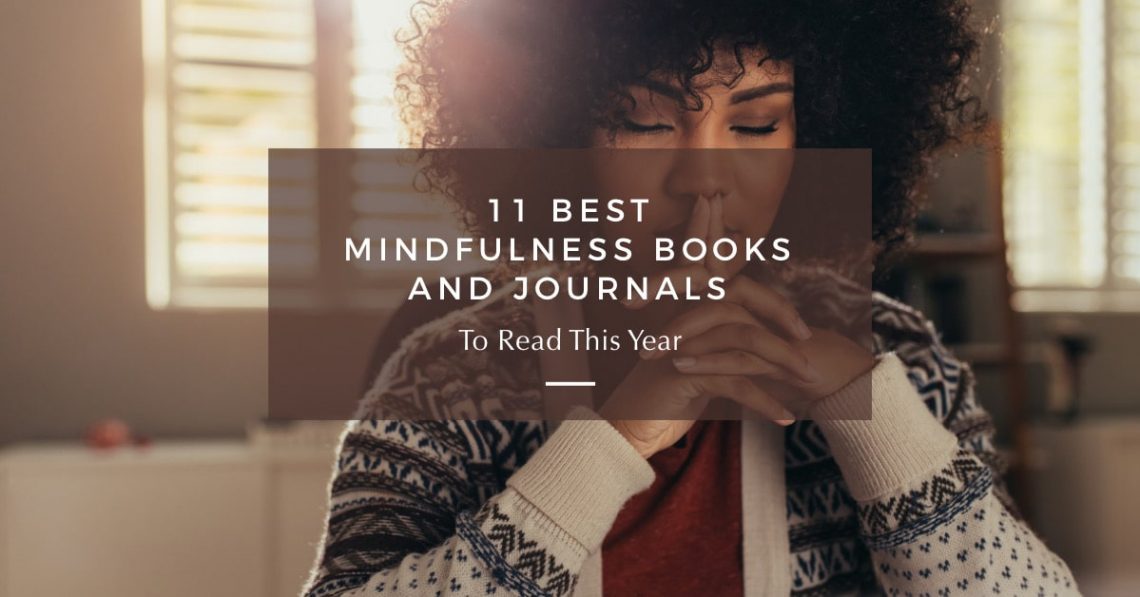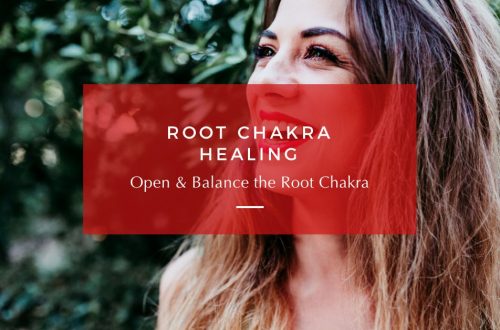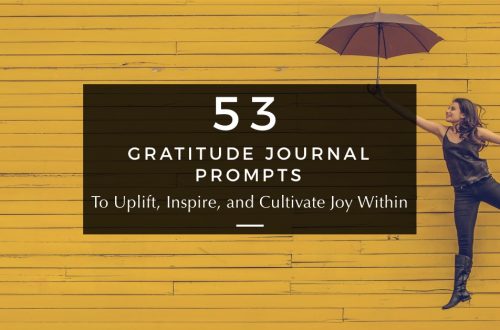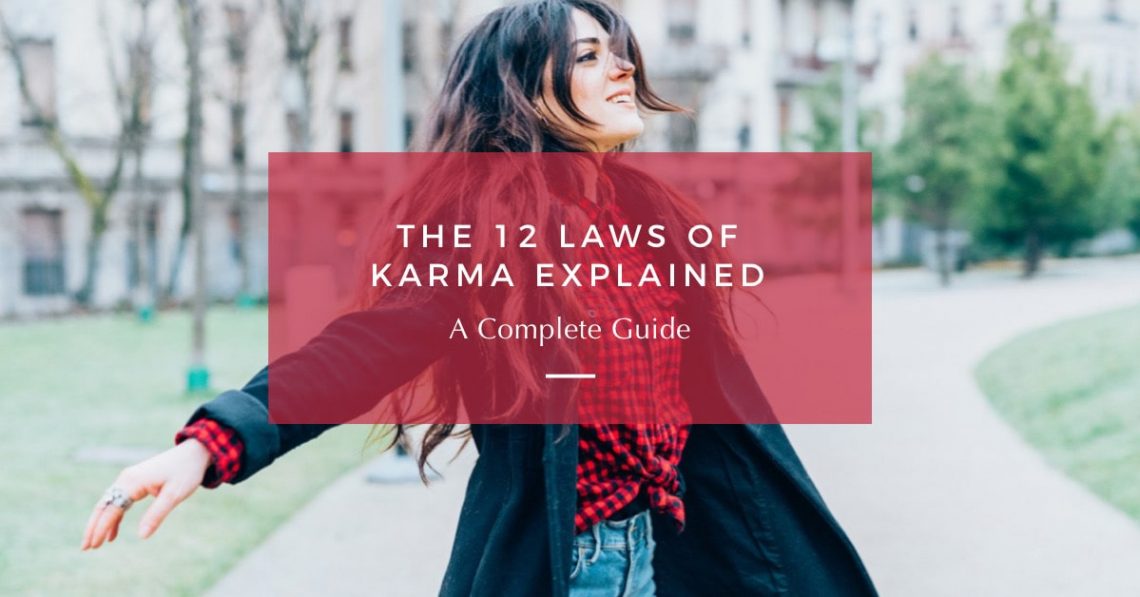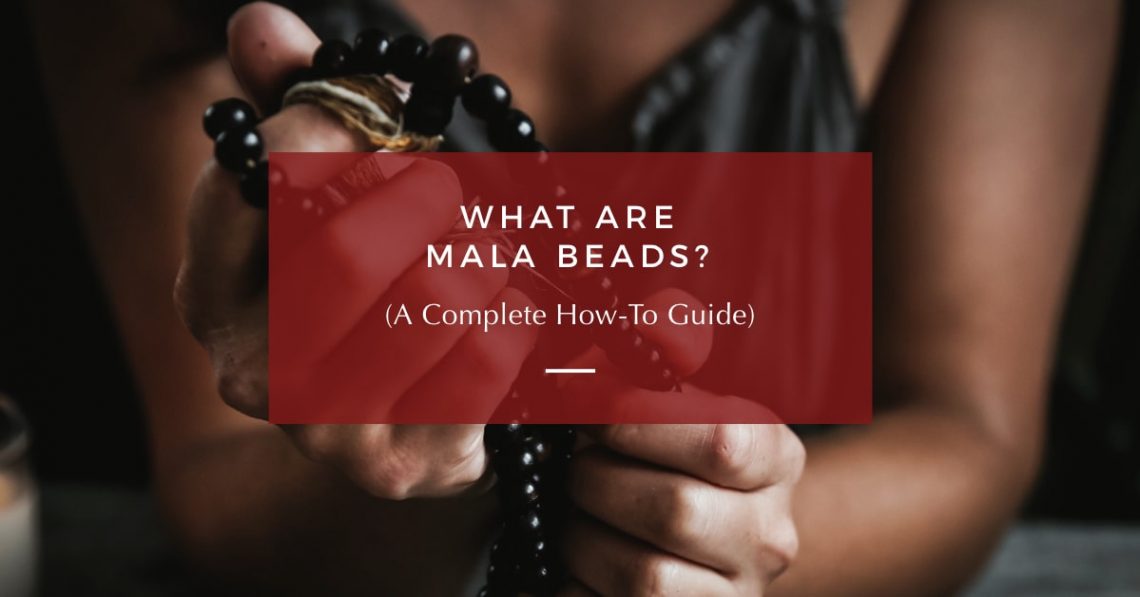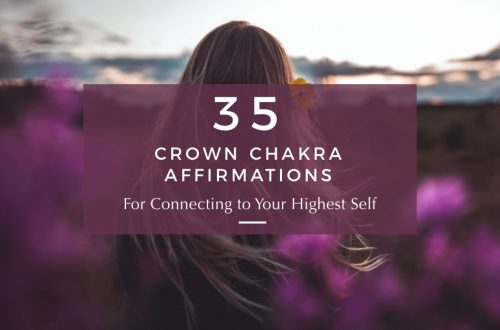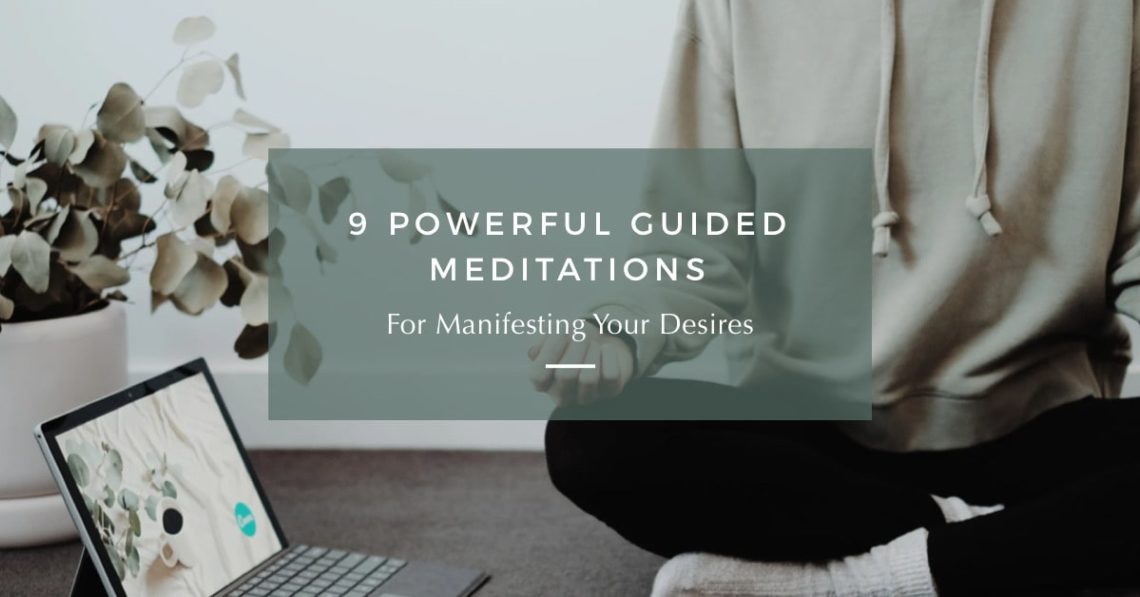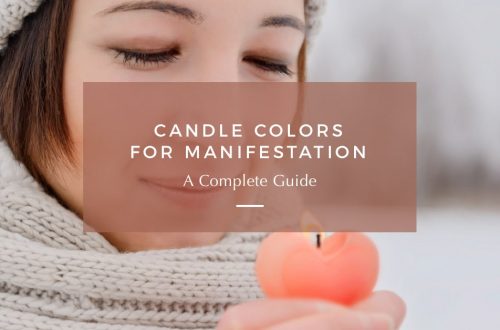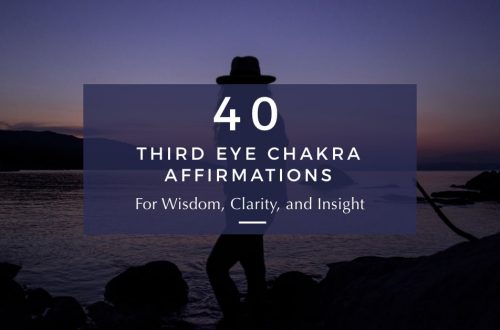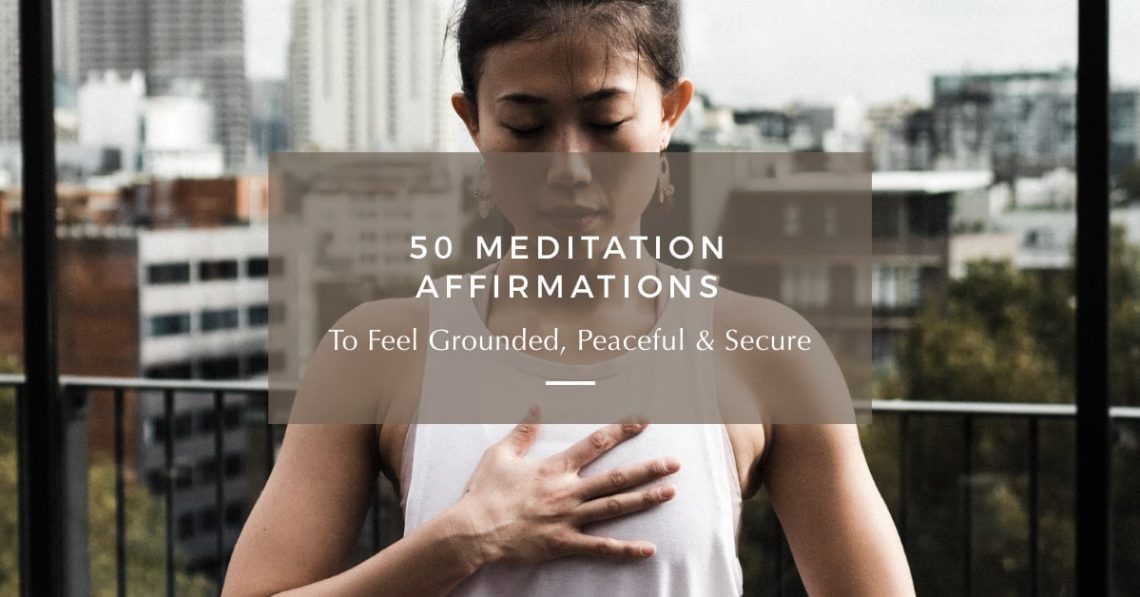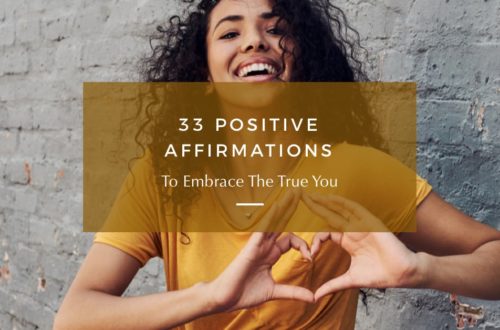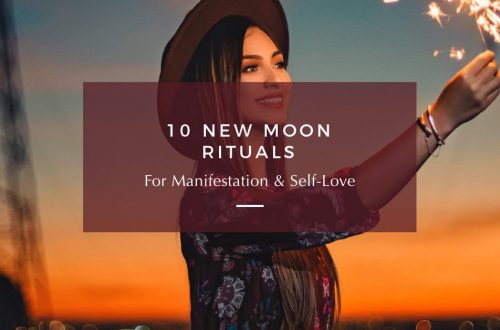-
How to Create a Meditation Table (A Complete Guide)
Are you looking to create a sacred space of your own that promotes feelings of tranquility and supports your total well-being? Discover everything you need to create your own meditation table, with over 50 links to tables and decor so you can start creating your perfect meditation table today.
Disclaimer: This post contains Amazon links. As an Amazon associate, I earn from qualifying purchases. If you purchase a product using my link, I may receive a small commission at no extra cost to you. You can read my full disclosure policy here.
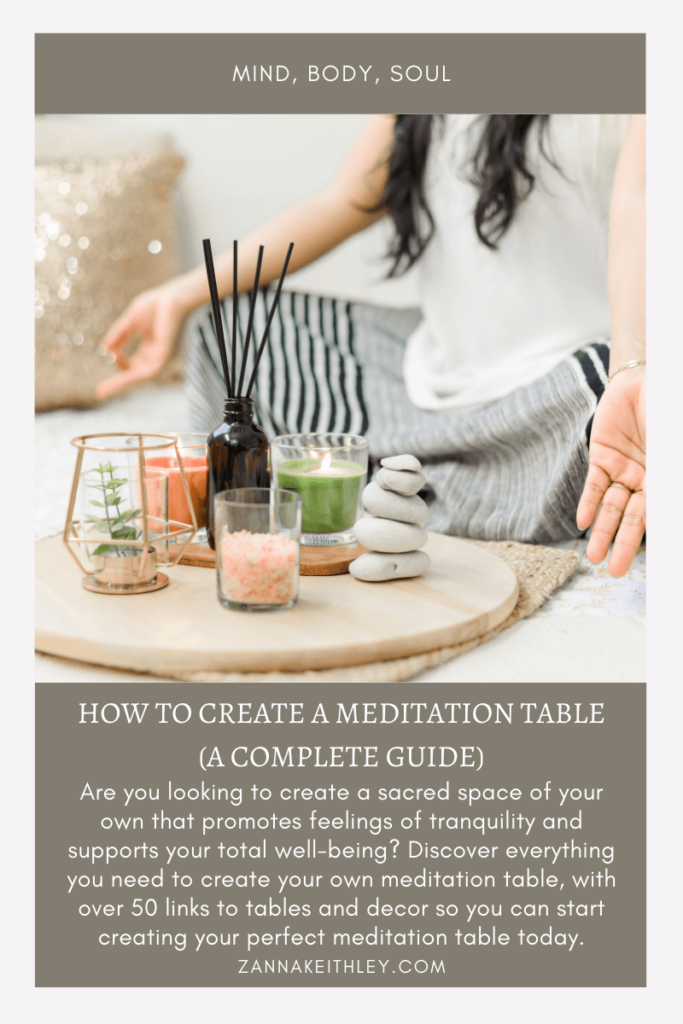
Pin this for later! How to Create a Meditation Table (A Complete Guide) How To Create A Meditation Table
A meditation table is a dedicated sacred space that promotes feelings of peace, calm, and tranquility within. The table itself is usually a small flat surface (i.e. a table, desk, or bench) with space around it for you to sit, meditate, and connect to your innermost self.
But the physical surface you choose is only half of what makes a meditation table such a profound tool for your spiritual growth.
Just as important are the objects you choose to set on and around the table.
I keep my meditation space pretty simple with just a meditation cushion to sit on and some of my favorite crystals and stones (Amethyst, Blue Lace Agate, Celestite, and Clear Quartz) on a small table nearby.
However, you can add as much or as little as you want here; crystals, candles, dried flowers, books, affirmation cards, and objects that hold significant personal meaning to you are just a start.
You can also add rugs, cushions, and other textiles to create the feeling of a complete, dedicated sacred space designed to serve and support your total well-being: mind, body, and soul.
So really, it doesn’t matter what you choose as long as it feels good to you.
What nourishes your soul? What feeds your spirit? What helps you connect with your truest, most authentic self?
Think about it this way:
You spend hours every day living externally–running errands and answering emails and completing to-do lists. Imagine that at the end of the day, you have a safe place where you can pause, breathe, and come home to yourself.
What does this look like?
Because that’s what this is really about. Yes, of course, this is a place to meditate. But it’s also so much more.
You can set your daily intentions here. You can pull affirmation cards. You can write in your gratitude journal.
Or you can just come here to take a deep breath and place your hand on your heart and breathe.
The important thing, really, is that it’s yours. Your space to feel safe. Your space to laugh or cry or whatever you need in the moment. Your space to continually come back to yourself, over and over again.
To help you get started, I’ve linked to items you can use to create your sacred space. I’ve also included answers to frequently asked questions regarding setting up and using meditation tables. You can use the links below to jump to the section you want to learn more about.
In This Article
Meditation Table FAQ
Does my meditation table have to be a certain size or shape?
Definitely not! Your meditation table can be as big or as small as you choose. Remember, bigger doesn’t always mean better. If you have only a small corner to dedicate to your sacred space, that’s more than enough. Choose a meditation table that fits your needs; dimensions and aesthetics are completely up to you.
What do I put on my meditation table?
Choose items that resonate with you. This meditation table belongs solely to you, and all that matters is the feeling the items bring when you look at and/or touch them.
You can put as much or as little on your table as you’d like; in fact, you don’t have to put anything on it at all if your soul desires a clean, empty space.
The most important thing is to choose items that help you to connect with your innermost self and that bring a sense of peace, calm, security, love, and connection with yourself and the world around you.
How do I set up my meditation table?
Set up your table in a way that feels calming to you. If you like everything neat and organized, then you might set it up so it looks balanced and orderly. If you think a little messiness is kind of beautiful, then you might let your inner creative take the reins and place items wherever your heart wants them to go. You might also test out a few different setups and pay attention to how each setup makes you feel.
Ultimately, do what makes you feel good. That’s it. Nothing else matters here.
How do I use my meditation table?
When you create your meditation table, take some time to set a purpose and intention for how you want to use this space. You can, of course, meditate in front of your table. You might also choose to come here in the morning to set intentions, recite affirmations, and express gratitude. When you’re seeking answers, this might be a place to look for them within. You might also like to sit at your meditation table after work to release the day and invite a sense of calm and peace into your evening.
Meditation Tables
To create your serene meditation table, you first want to start with the foundation on which you’ll be building upon: the table itself.
You may already have a piece of furniture in your home that would work perfectly for this function. If you’re a DIYer, this is a great opportunity to get creative as you check out local yard sales and thrift stores for the inspiring piece that speaks to you. Sand, stain, paint, or leave it perfectly imperfect: whatever feels right to you.
If you’re looking for something beautiful and new, the links below offer an array of styles to fit every price range. Just make sure to double check the dimensions to ensure the table fits your space!
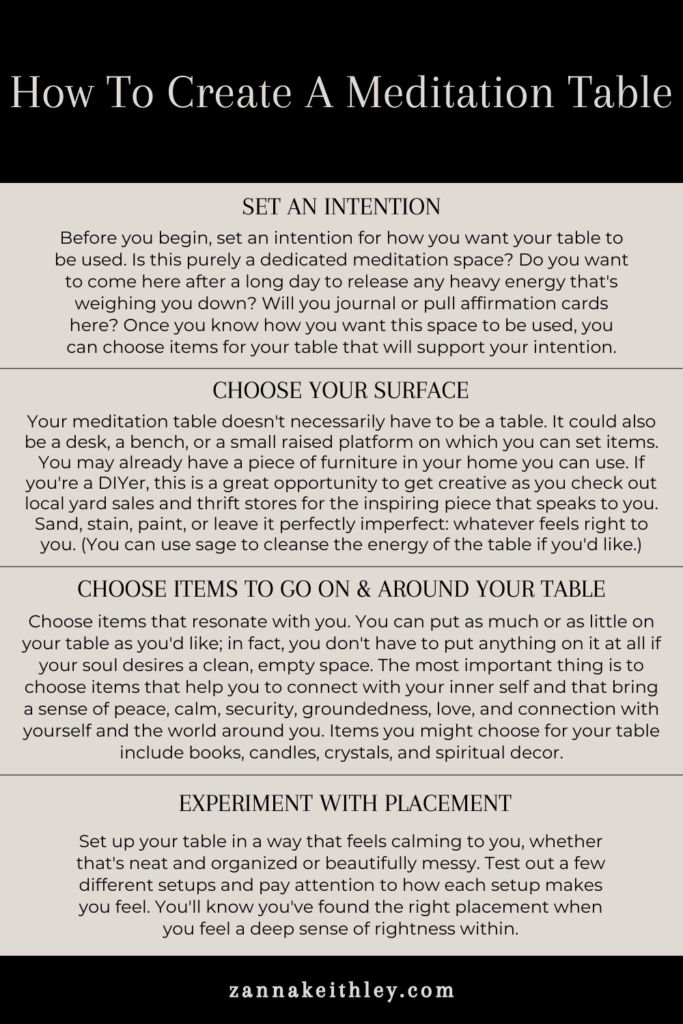
Items For Your Meditation Table
Books
There’s something special about being surrounded by books filled with beautiful words that soothe your spirit or delight your imagination. Even just setting a few books on your meditation table can fill you with serenity, inspiration, and creativity. Choose books that reach deep into your soul and speak to you. Below are a few options to get you started. For more inspiration, check out my article on the 11 best mindfulness books and journals to support your journey.
Signs: The Secret Language of the Universe by Laura Lynne Jackson
Inward by Yung Pueblo
The Four Agreements by Don Miguel Ruiz
Daily Rituals: Positive Affirmations to Attract Love, Happiness, and Peace by Phoebe Garnsworthy
Sacred Woman by Queen Afua
Dear Universe by Sarah Prout
Candles
If you’re a candle lover like me, then the concept of “too many candles” doesn’t exist. Candles bring a deep sense of calm, tranquility, and peace within. It’s also a powerful meditation practice to stare into the dancing flame of a candle and let it wash over your being.
Crystals and Stones
Another thing I’m pretty sure you can never have too many of? Beautiful crystals and healing stones. When choosing crystals and gemstones, you can either pick ones that have specific meanings, or you can simply choose ones that speak to you. If you see a crystal and feel pulled to it, trust your gut. To help you get started, check out these guides on crystals for new beginnings and crystals for manifestation.
Affirmation Cards
Affirmation cards are a truly powerful addition to your meditation table or sacred space. One profound practice is to sit at your table every morning, surrounded by quiet and stillness, and pick one card from your affirmation card deck. Read the affirmation, and feel the positive words in every cell of your body. You can also spend a few minutes reflecting on what the words mean to you. I love that this is a practice you can do in five minutes or less that will have a meaningful impact on your entire day.
Below are a few of my favorite affirmation card decks to help you get started. And for more ideas on what you can do with your deck, check out my guide on how to use affirmation cards.
Moon Decor
This is for anyone who feels a deep connection with the moon. If you’d like, you can print out or purchase a moon calendar for the year and incorporate rituals into your routine that correlate with the moon’s phases. (For instance, setting new intentions during the New Moon.) To help you get started, you can check out this moon phase calendar from moonconnection.com.
Meditation Materials & Decor
Everyone’s meditation and spirituality practice looks different, so there isn’t a one-size-fits-all product here that will suit everyone. Once again, choose what calls to you.
Spiritual Decor
Again, everyone’s spiritual practice looks different. So once again, choose items that feel right to you. Whether that’s a Buddha figurine or a Mother Gaia statue, or something else completely, open your heart to what resonates most to you.
Cushions, Rugs, and Textiles
Finally, this last category is all about what’s surrounding your meditation table: meditation cushions and benches, rugs, tapestries, canopies, and anything else you fill your space with. You can turn your meditation table into a loving sacred space where you nurture your mind, body, and spirit.
And for anyone who might be skeptical of meditation cushions: So. Was. I. And then I tried one, and within five seconds of sitting on it, I was a believer. (I own the exact Florensi meditation cushion I link to below and use it every single day.)
Have you created your own meditation table? What items do you like to place on and around it? Share your tips for how to use a meditation table to support your mind, body, and soul in the comment box below!
And for uplifting affirmations, chakra resources, meditation tools, self-love encouragement, and more, be sure to follow me on Pinterest and Instagram!
More Articles You May Like
- Sacred Self-Care For The 7 Chakras (A Complete Guide)
- Vision Board Ideas To Visualize Your Ideal Future (With Examples)
- 8 Powerful Guided Meditations For Manifesting Your Dreams
- 30 Journal Prompts For Self Growth (& Deeper Self-Love)
- 11 Beautiful Poetry Books About Self-Love & Acceptance
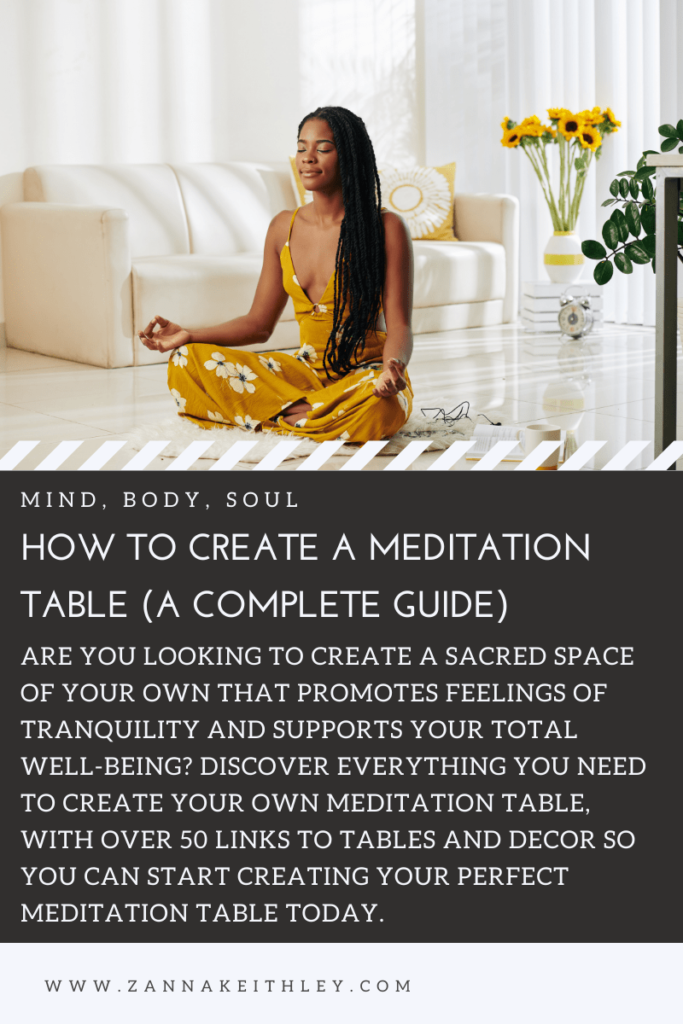
Pin this for later! How to Create a Meditation Table (A Complete Guide) 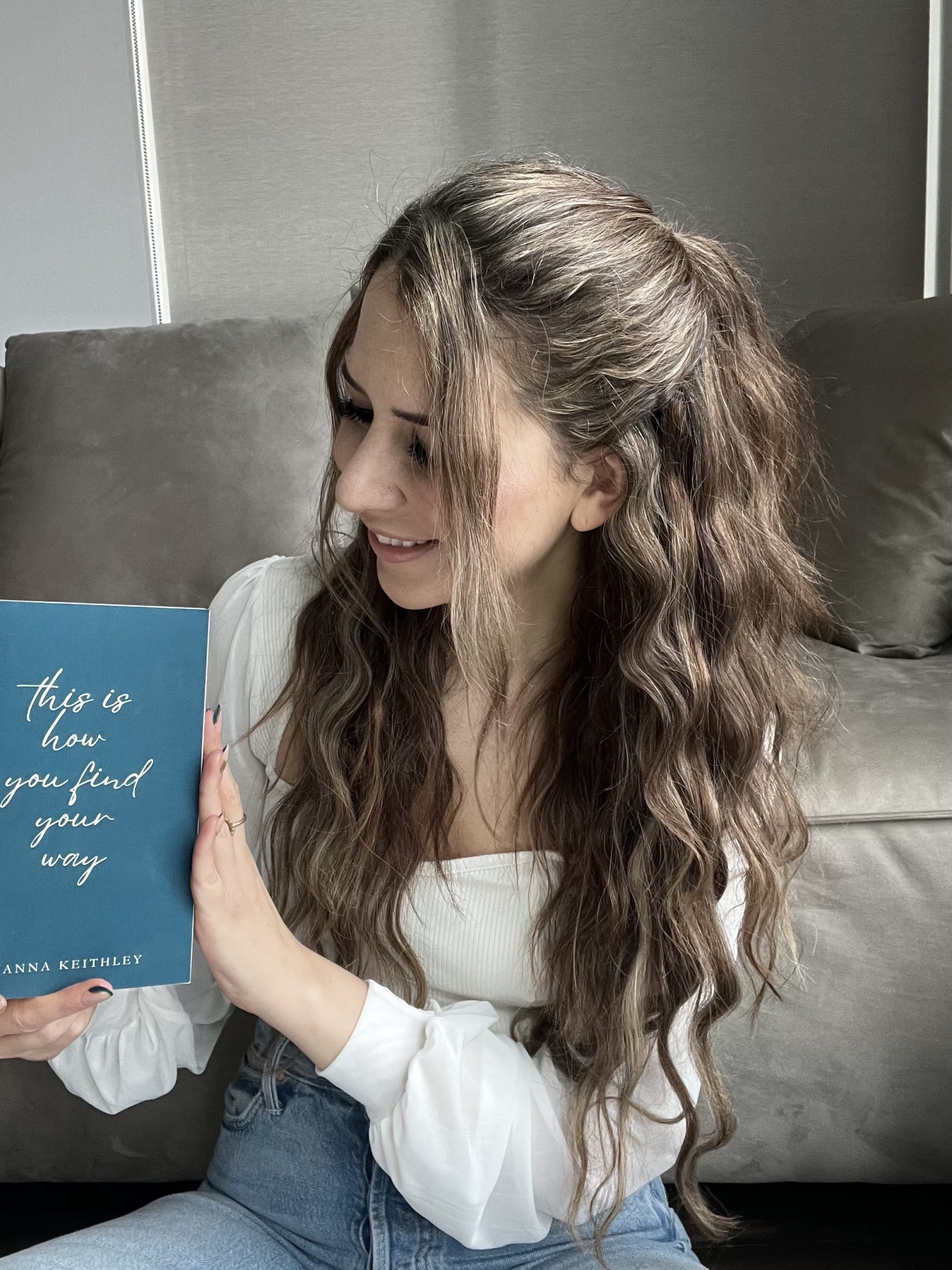
Zanna Keithley is an author, poet, and social media content creator who writes short prose dedicated to inspiring readers to follow their dreams, trust their intuition, and create beautiful and fulfilling lives. You can find her original writing on Instagram @zannakeithley.
-
How To Love Yourself More Each Day (And Make It Last)
In this article, learn the meaning of self-love, why it’s important, and how you can love yourself more each day. Plus, get tips on how to lean into self-love even on those days when loving yourself feels a little harder than most.

Pin this for later! How To Love Yourself More Each Day What Is Self-Love?
Self-love is a state in which you treat yourself with kindness, compassion, respect, and appreciation.
It means forgiving yourself when you make a mistake and speaking to yourself with care and kindness in the privacy of your own mind.
It also means nurturing your personal growth and prioritizing your total well-being: mind, body, and soul.
Self-love can sometimes get mischaracterized as selfishness, and many of us have been taught to believe that prioritizing ourselves is somehow inherently wrong. But it’s actually this belief that’s misguided.
You see, when you practice self-love, you’re first and foremost taking care of your own energy. Metaphorically speaking, you’re filling your own cup. You’re giving yourself what you need instead of constantly searching for it from outside sources.
And because of this, you’re able to better show up for the people in your life who matter to you. You’re able to give more of yourself to others. If someone needs to borrow from your cup, you can give easily and willingly, because you know you have the power to replenish it yourself.
And maybe even more importantly, when you cultivate deep and unconditional self-love, your inner light glows. You become a shining light for others, unconsciously giving others permission to shine their own light, too.
So self-love is the furthest thing from selfishness. Self-love is necessary.
It’s how we begin lifting the vibration of the world.
But first, it starts within.
By cultivating deep and unconditional self-love, you emit the vibration that you are open to receiving even more love in your life. You also release that desperate feeling of always looking for validation and acceptance from outside of yourself. And because this desperate energy is no longer within you, you can more easily lean into the flow of the universe. Walking your authentic path becomes easier. The energy of the entire universe moves effortlessly through you.
Self-love is a bridge. It takes you from a state of constantly striving and hustling to simply being, knowing, trusting, and aligning. It allows you to take risks, make mistakes, and grow, knowing that no matter the outcome, you are always deeply worthy of unconditional kindness from yourself.
So how do you begin to cultivate deep, profound self-love?
Below, you’ll find eight practices for how to love yourself more each day. None of these practices require much more than your own conscious time and attention. And each practice is meant to serve your entire well-being: mind, body, and soul. You’ll also learn how to cultivate self-love on even those heavier days, when loving yourself may feel a little more difficult.
Because no matter what, whether you’re feeling good or bad, whether you have or haven’t been your highest self, you are always worthy of unconditional love, kindness, respect, and compassion—both from others and (especially) from yourself.
- You May Also Like: 30 Journal Prompts For Self-Growth (& Deeper Self-Love)

How To Love Yourself More Each Day
Practice Self-Compassion
Self-compassion means to be kind, loving, and gentle to yourself, even through your perceived failures, mistakes, and shortcomings.
Kristin Neff, pioneer in the field of self-compassion research, says, “Instead of mercilessly judging and criticizing yourself for various inadequacies or shortcomings, self-compassion means you are kind and understanding when confronted with personal failings—after all, who ever said you were supposed to be perfect?”
And that simple question right there is the key to unlocking deep, meaningful, lifelong self-compassion.
Who ever said you were supposed to be perfect?
You, probably.
I’m guessing you’re your own worst critic. You may tear yourself apart over things that nobody else even notices. And those errors and blunders you’ve made? While others have long forgotten them, you’re still carrying with you mistakes you made years ago—collecting them and storing them in a pocket of your mind where you can go back and replay them over and over again.
It’s not going to be an overnight process to turn this mindset around. You have to intentionally choose compassion every single day, and then you have to keep choosing it, even when it isn’t easy.
So how do you begin this journey?
One practice that really helped me was thinking about people I love. Whenever I started to criticize myself for my own perceived shortcomings, I’d step back and ask myself whether I’d have these same thoughts about the people I love. Would I tell my best friend that she isn’t enough? What about my nieces and nephews? What about my parents, sister, brothers, cousins, and other family members?
No. I’d never say these things about any of them. And I’d never allow another person to say any of these things about them, either. I’d fight for them without hesitation.
So why was I saying all these hurtful things about myself? And why wasn’t I fighting for myself the way I would fight for someone I love?
Nobody’s perfect. We’re all just human beings trying to navigate life and figure things out as we go. So give yourself grace during this journey. Know that you can be imperfect and make mistakes and still be worthy of your own love and compassion.
Make A Self-Love Gratitude List
You likely know what a gratitude list is: a list of people, things, and experiences in your life that you feel truly and deeply grateful for. A common practice is to write down one to three things you’re grateful for in a journal every morning.
But how often do you write your own name on this list?
How often do you allow yourself to simply appreciate you?
What about yourself do you love?
Do you love your courage? Your inner strength? Do you love the way you stand up for the people you care about? Do you love your inherent kindness? Is there a specific act you’ve done that you feel really proud of? Are you simply grateful that you get to be you?
Start acknowledging yourself every single day by creating a gratitude list entirely devoted to you. Each day, write one or two things you really love about yourself. You might add a “because” statement to each item on the list, like “I’m really grateful that I give my smile freely to others because it lifts others up and adds a spark of joy to their day.”
Don’t hold back here. Freely write down all the things you love about both your inner and outer self. It’s so easy to criticize yourself and feel like you “deserve” that criticism, but how often do you actually celebrate yourself? This is a profound daily practice that will go a long way to helping you cultivate deep, unconditional self-love.
Create A Soulful Self-Care Routine
Chances are, you’re already practicing some form of self-care. Brushing your teeth, scheduling medical checkups, taking showers, and getting enough sleep at night are all forms of self-care.
But for this one, I’m talking about a deeper level of self-care: self-care for the soul.
We often associate self-care with spa days and luxurious bubble baths, and these things can definitely be part of a soulful self-care routine. But self-care is also something intrinsically more.
Self-care means asking yourself daily, “What does my soul need?”
And then, giving it to yourself.
Sometimes, your soul may need silence. Sometimes, it may crave time spent in nature. Sometimes, it might need a warm cup of tea and a good book. And other times, it may just need you to speak to yourself with a little extra kindness. To meet your own gaze in the mirror and whisper a simple yet deeply needed, “I love you.”
Self-care is an act of self-love. Whether it’s standing in the sunshine with your eyes closed for sixty seconds or packing up for a weekend getaway, you can practice self-care in both the smallest and biggest of ways. It’s a chance to nourish your soul. To feed the fading embers within so they grow back into beautiful and fierce flames dancing inside you.
It’s a chance to renew. To reenergize. To realign with the truest and deepest you.
And you are so worthy of giving the gift of self-care to yourself. You are deserving. Not just every once in a while but every single day.
Every day, ask your soul what it needs. Every day, listen for the answer. And every day, make space to receive it. To have it. To give it to yourself.
Embrace Your Inner Creative
When we’re young, we’re encouraged to create for the sake of creating. It isn’t about creating something that someone else will deem valuable. It isn’t about being productive. It isn’t even about making something that’s going to last forever. A child can create something in pure joy, then let it go and never think about it again.
But how often, as adults, do we create without any strings attached?
Embracing the creativity inside you without trying to make something beautiful or perfect or valuable is a profound act of self-love. It allows you to let go and find freedom in creating something that isn’t for anyone else but yourself.
It also allows you to fully be you—to embrace your own unique self-expression.
And what greater act of self-love is there than to allow yourself to be you without holding back?
Make space in your life for embracing your inner creative while you immerse yourself in an environment that feels really good. Maybe you’ll create something truly beautiful. Maybe you’ll create something you’ll forget about tomorrow. It doesn’t matter either way.
The beautiful creation isn’t more valuable or meaningful than the one you’re going to throw away.
It’s the act of giving yourself a chance to fully express yourself without limitations that matters.
Practice Mindfulness
Mindfulness is non-judgmental, conscious awareness in the present moment.
This means being aware of your own thoughts, feelings, and surroundings in the present moment without putting labels on any of it as right or wrong. Mindfulness is sometimes referred to as the art of noticing, as it doesn’t require anything from you except to simply notice.
And this seems really simple, but it’s actually really hard for most of us to do.
How often do you notice your thoughts without putting labels on them? It’s so easy to tell yourself that you’re bad or wrong—to constantly and persistently criticize yourself.
But what if, instead, you just noticed what’s happening within you without any of that judgment? And then, what if you took a step back and gently probed your thoughts with non-judgmental awareness?
“I’m having this thought again. That’s interesting. Why am I thinking this? What’s the source of this thought?” And then: “Is it actually true?”
Additionally, it’s common for us not to notice our thoughts at all. To simply go into autopilot mode and accept them at face value.
But mindfulness allows us to break free from the autopilot mode.
And when you do this, you can begin consciously shifting the narrative. And that’s where this gets really powerful for cultivating more self-love in your life.
Because once you start noticing your thoughts, you can consciously choose to shift them. You might notice a thought you had during autopilot mode like, “I’m not worthy,” and then you can say, “Oh. I’m having that thought again. But is it true? No, it’s not true. I am worthy. I’ve always been worthy.”
And soon, even your autopilot mode will begin to change. Instead of those persistent negative thoughts, you’ll begin having more persistent positive thoughts about yourself. And you’ll begin creating a truly deep, profound relationship with yourself based in true, authentic love and compassion.
- You May Also Like: 11 Best Mindfulness Books & Journals To Read This Year
Take Social Media Breaks
I’m actually pro-social media. I think what we get out of it is all a matter of how we interact with it. If given the chance, social media can be a beautiful platform for connecting with incredible souls, discovering daily positive messages, and creating a community based in love, kindness, compassion, and support.
But even I know we all need a break from it sometimes.
You don’t have to go on a total social media detox (unless it feels right for you to do so). But try to schedule regular social media breaks in your calendar. You might also decide that you’ll only go on apps like Instagram and Facebook between certain hours of the day, kind of like intermittent fasting but for social media.
Why is this important when it comes to self-love?
For one, it’s a meaningful way to protect your energy.
But also, the first step to tapping into your intuition and hearing the voice within is to get really quiet. You have to be able to step back from the noise of the outer world and go within. To embrace silence. We sometimes use social media as a distraction from what our hearts are trying to tell us.
But I promise—listening to what your heart has to say is the best thing you can do for the long-term health and well-being of your mind, body, and soul.
So every once in a while, give yourself a chance to step back. Take time away from social media and other outside distractions. Get really quiet. Breathe. And just listen.
Set Loving Boundaries
For many of us, this can be the most difficult one to practice. Setting boundaries isn’t easy, especially because it often leaves us feeling like we’re doing something wrong. Will I hurt someone’s feelings? What if they’re not receptive to what I tell them? What if they take it the wrong way and think it’s something against them when really, it’s about me?
Trust me, I know how hard it is. I’ve often thought many times throughout my life that my very existence is centered around not hurting another person’s feelings. It feels like it kills a little piece of my soul every time I think I might have hurt someone.
But I’ve learned that setting boundaries isn’t just an act of self-love; it actually helps to strengthen my relationships in the long-term.
Setting a boundary might mean establishing your own personal space. It might mean setting non-negotiable time during the week in which you get to dedicate all your energy to yourself. It might mean establishing boundaries regarding verbal or even non-verbal communication. Whatever your boundaries are, they’re going to be specific and personal to you.
It may feel easier at first not to verbalize your boundaries out of fear of confrontation, but holding these thoughts and feelings inside you will only build resentment and anger. It’s a detriment to both you and your relationships.
If you have difficulty setting boundaries, here are some practices you can start with:
- First, write a list of all your boundaries, both in your personal and professional life.
- Write down what each boundary means to you. Include concrete examples.
- Ask yourself, if you don’t communicate this boundary, how will you feel in the long-term? Can you live with this, or would it ultimately hurt the relationship more if this isn’t done?
- Consider how you can communicate these boundaries in a respectful way. Often, a boundary is less about the other person and more about you. For instance, I’m an extreme introvert. I need a lot of personal time during the week to renew and recharge. When I set the boundary that I need my own time and space, I make it clear that this isn’t about the other person; it’s one of my basic, foundational, soul-level needs. It might help you to write down how you can communicate your boundaries in a kind, calm, respectful way.
Connect With Your Innermost Self
I was going to put this first on the list, but I decided to put it last because I think in some ways, all of the practices above require some level of self-connection.
And that seems so simple, yet for some reason, it’s one of the hardest things for us to do.
We get so distracted by outer noise. There’s errands to run. To-do lists to check off. People to take care of. Work obligations to complete.
But what about you?
Where do you fall on this list?
And beyond that, how often do you step back from all the noise and allow yourself to go within—to connect with the truest, deepest, most authentic you?
For some people, this happens in meditation. For others, they connect through journaling. And for some, they find connection through immersing themselves in nature and going on daily walks. (Though if you do this, I encourage you to forget about your step count and leave your music and podcasts behind.)
Be present with yourself. Is there anything you’ve been suppressing lately? Gently allow it to come to the surface. Maybe someone said something that hurt your feelings, and you’ve been trying not to think about it. It if feels okay, see if you can go within and discover why it hurt you so badly. Are you able to let it go, or will these feelings linger unless you talk about them with that other person?
Whatever practices you prefer for connecting with your inner self, the most important thing is to be honest. Don’t lie to yourself.
Show your deepest feelings that they’re seen. Show your deepest hopes that they’re seen. Show your deepest beliefs that they’re seen. Show your deepest regrets that they’re seen. Show every neglected fragment of your inner being that it is seen.
Show yourself that you are seen.
How To Practice Self-Love When You’re Feeling Low
You can do everything “right” and still have days when you have a harder time loving yourself fully. And that’s okay. There’s nothing wrong with having hard days.
There are still a lot of really worthwhile practices you can try to help yourself in these situations. And maybe they won’t immediately fix everything. Maybe they won’t be the cure to all of your emotional and spiritual ailments. But they can still be truly profound and helpful if you allow yourself to lean in.
It starts with mindfulness.
Mindfulness on these really difficult days might look like this: “I”m not feeling my best right now, and that’s okay. I acknowledge that I’m having a hard time loving myself right now. I allow myself to have this experience without needing to fix or change anything. Right now, it just is. And that’s okay.”
The ironic thing here is that by not trying to fix or change anything, we often do. There’s power in acknowledging your thoughts and emotions—in showing them that they’re seen.
After you’ve recognized your thoughts and feelings as being valid, see if you can lean a little further into self-compassion. Remember Kristen Neff’s words: “Whoever said you have to be perfect?“
Can you recognize that you’re imperfect and still be kind and gentle with yourself?
Can you recognize that you may make mistakes and still give yourself grace?
Can you recognize that you’ve done the best you can—that you’re willing to learn and grow from these experiences—and let that be enough?
Finally, ask yourself, “What feels like love to me?”
Does love feel like lying on the couch watching your favorite TV show? Does it feel like going on a walk? Does it feel like eating a freshly baked chocolate chip cookie? Does it feel like calling your best friend? Does it feel like making plans for your next vacation? Does it feel like going to the gym and engaging in physical activity?
This is, essentially, self-care. It’s asking your soul what it needs and then giving it to yourself.
And even on the days when you’re having a hard time feeling that deep self-love, you can still practice self-care.
This is how you love yourself more each day. This is how you connect to the truest, most authentic you. This is how you remember who you are.
This is how you come home to yourself.
For more resources on spirituality, meditation, manifestation, and all things self-love, be sure to connect with me on Instagram and Pinterest, where I’m posting positive affirmations and empowering messages daily.
More Articles For You
- 8 Best Self-Love Workbooks To Read This Year
- 11 Beautiful Poetry Books About Self-Love & Acceptance
- 44 Spiritual Growth Quotes For Your Spiritual Journey
- 30 Profound Journal Prompts For Spiritual Growth
- 4 Undeniable Reasons Why You Are Not Broken
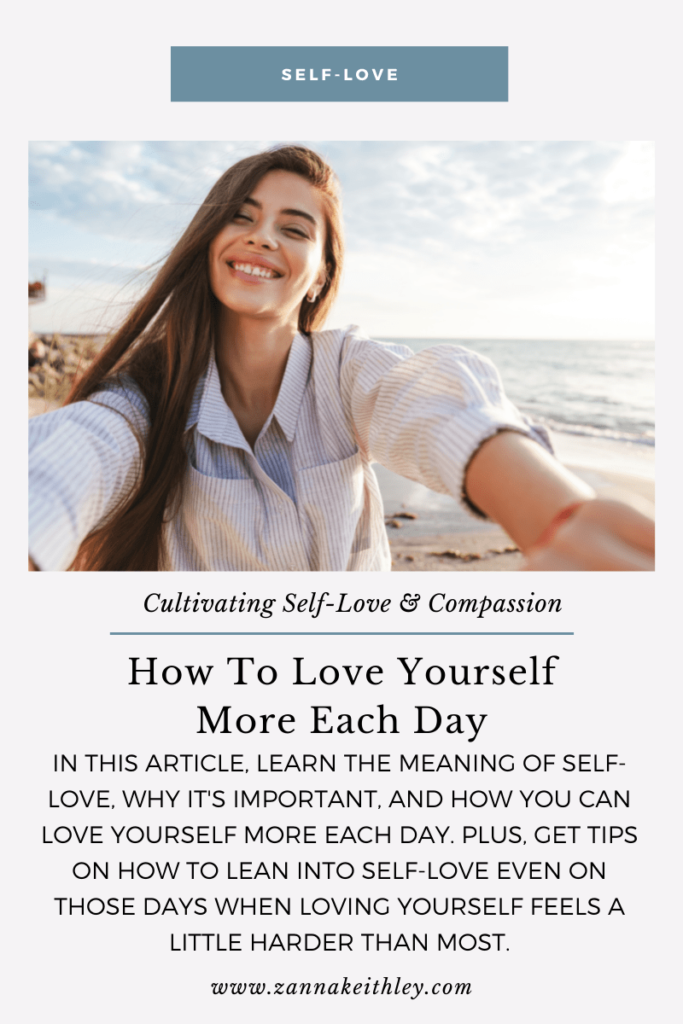
Pin this for later! How To Love Yourself More Each Day 
Zanna Keithley is an author, poet, and social media content creator who writes short prose dedicated to inspiring readers to follow their dreams, trust their intuition, and create beautiful and fulfilling lives. You can find her original writing on Instagram @zannakeithley.
-
How To Tap Into Your Intuition (The Ultimate Guide)
In this article, learn how to tap into your intuition, plus discover what your intuition should feel like, how your intuition relates to manifestation, and what to do if you don’t like what your intuition is telling you.
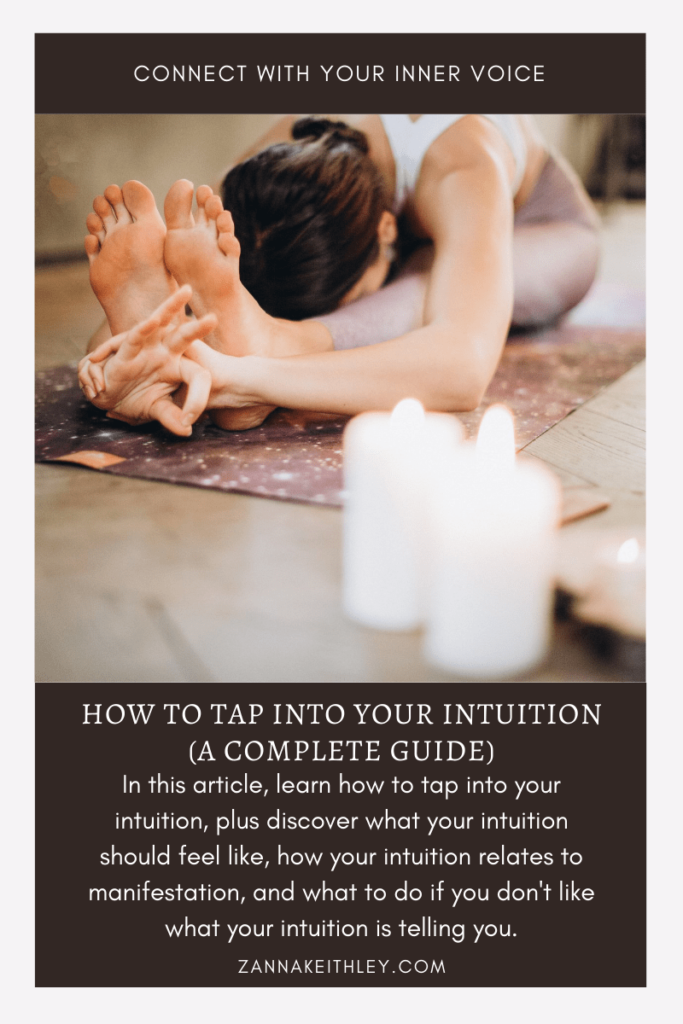
Pin this for later! How To Tap Into Your Intuition (A Complete Guide) What Is Your Intuition?
In many ways, your intuition is the least glamorous thing about you. It isn’t showy. It doesn’t like to be the center of attention. It’s so subtle, in fact, that many people question whether theirs works.
Right away, I’m here to tell you that you do have one, and it does work. You’ve probably even encountered it recently.
We all possess a deep inner knowing softly whispering inside of us—we just don’t always listen to it because our cognitive minds are so busy worrying, stressing, second-guessing, developing worst-case scenarios, and overthinking.
The second your intuition nudges you to do something out of the norm, your logical brain says, “Hold up, but what about all these 5,000 things that can go wrong?”
And sometimes, you actually hear your intuition loud and clear, but you don’t really want to listen to it.
- Your intuition may tell you it’s time to break up with your partner, but you’re terrified of change and don’t want to cause another person pain.
- Your intuition may tell you not to accept that seemingly perfect job with the great pay, but how could you turn down that money?
- Or your intuition may tell you that you need some more time to yourself before you dive into another relationship, but you really hate being alone.
If you want to strengthen your relationship with your intuition, there are some key practices you can start doing today.
In This Article
- How To Tap Into Your Intuition
- What Does Your Intuition Feel Like?
- Your Intuition & Manifestation
- What If You Don’t Like What Your Intuition Is Telling You?
How To Tap Into Your Intuition
Below, find six practices to help you tap into your intuition, plus a few additional exercises you can try. Consistently following these practices will strengthen your connection with your intuition and help you tap into this deep inner knowing with ease.
Quiet Your Mind
The first step to take to start connecting with your intuition? Listen.
You can’t hear what your inner voice is trying to tell you if you’re constantly immersed in noise.
The quickest and most profound way to start connecting with your intuition is to let silence be a normal part of your life.
If you have a daily meditation practice already, you may already be benefitting from these regular encounters with silence and stillness.
And if you don’t have a meditation practice, that’s okay. I know meditation may seem overwhelming at first. This is partially due to the myth that meditation requires you to have no thoughts. This is one of the biggest misconceptions about meditation and why many people believe meditation isn’t for them.
But if you listen to just about any meditation teacher, they’ll tell you the same thing: meditation is not about clearing your mind of thoughts. If it was, I’m not sure any of us, not even the most advanced meditators, would ever succeed. The last thing we want to do is suppress or evade our own thoughts.
At its heart, meditation (especially practices rooted in mindfulness) is about non-judgmental observation, conscious awareness, and gently rooting yourself in the present moment. It’s a chance to step away from the external noise and come home to yourself for a little while.
And this is where your intuition shines: in the quiet places where you can simply be.
The paradox of using meditation to connect with your intuition is that you’re not actively going to try to connect with your intuition during your meditation. If you sit in silence and try to force something to come forward, you’re likely going to put excess pressure on yourself; in turn, this often causes frustration and anxiety.
The key is patience. Sit in stillness for ten minutes today. Then, sit in stillness for ten minutes tomorrow. Day after day, keep sitting in stillness for ten minutes at a time. Don’t try to force anything. It will come on its own. All of the mental clutter will start to clear up, and your intuition will come forward.
- You May Also Like: Meditation Practices For Beginners
Practice Mindfulness
One of the biggest barriers to connecting with your intuition is being anywhere but where you are right now.
What do I mean by this?
As you go about your day, it’s easy to get lost in thoughts about the past or future. You might find yourself replaying yesterday’s events or worrying about the days ahead. When this happens, your mind becomes so busy with troublesome thoughts, you lose your connection with that quiet voice within.
Mindfulness is the key to returning to this moment right now and getting in touch with your inner knowing.
First, let’s take a step back and talk about mindfulness itself. What is it, and why is it so important?
Mindfulness is non-judgmental, conscious awareness in the present moment. This means being aware of what’s happening within and around you in this moment. How does your body feel? Where do your thoughts stray? Are you experiencing any anxiety or tension? What can you perceive with your five senses?
The key here is not to judge anything you notice. Don’t label any of it as right or wrong. Just notice.
So why is mindfulness important when it comes to connecting to your intuition?
Mindfulness allows you to become aware of what’s happening within and around you in this present moment.
Remember, your intuition isn’t flashy. Every once in a while, it might scream at you, like when it knows you might be walking into a dangerous situation. But for most of the daily stuff, it tends to remain soft and quiet, like a soft whisper deep inside you.
You can’t always expect it to speak up louder; instead, you must consciously step away from all the mental chatter so you can hear it.
Mindfulness quiets the noise of your worries, fears, judgments, and daily stresses so you can hear what’s really going on in the deepest parts within.
If mindfulness is new for you, you can check out some helpful mindfulness exercises you can try to start practicing mindfulness throughout your day.
Truly, I can’t emphasize enough how important mindfulness is in connecting to your intuition. It may feel like this is a slow process, but I promise, if you consistently practice mindfulness techniques for a month straight, you’ll begin noticing shifts within yourself.
This is the bridge to connecting to that quiet voice within: being consciously aware of what’s happening inside you in this present moment, without judging what’s going on. Simply listening. Breathing. Being.
Cultivate Calm
I’ll keep this one short: clarity comes with calm.
People don’t usually make good choices when they’re feeling stressed, worried, angry, or depressed.
Connecting with your intuition requires you to first do the two things I mentioned above: quiet your mind and practice mindfulness. Mindfulness will allow you to recognize that you’re feeling “low” or “off.” By recognizing your own low mental state, you can choose not to make any big decisions at that moment.
Conversely, it will help to bring clarity when you’re experiencing a more positive mental state. This is when the magic happens. When you’re experiencing a sense of calm and inner peace, that’s when you’re in greatest alignment with your inner knowing.
Start consciously working with your intuition during moments when you’re feeling really good. I started with walks around my neighborhood. During these walks, I always felt calm, grounded, and connected to my higher self. So I started asking my intuition to guide me when I should turn and where I should walk next.
Most of the time, nothing really happened. And that’s completely okay. Sometimes, when you work with your intuition, nothing will actually seem to happen around you. This is normal. Just because nothing happens around you doesn’t mean you’re doing anything wrong.
Keep practicing in these moments. This is preparing you to trust your intuition for those bigger moments when you do feel that soft nudge within.
Practice Picking Up Signals From People Around You
Think of the people you spend the most time with: family, friends, coworkers. How often have you taken one look at a person you’re close with and known that something was wrong?
What about those times when it’s less obvious? Someone may seem fine on the surface, but you can just tell that something’s off. They seem distant. Distracted. Heavy.
Start approaching your daily interactions with the intention to pick up on any underlying feelings that may be going on beneath the surface. When you begin your interaction, ask yourself, “What do I feel from this person right now?” See if you can name that underlying feeling.
As you continue to practice this, it will become easier to tap into that feeling within. In time, this will expand into other areas of your life. Not only will you be able to connect with your intuition when interacting with other people, but you’ll feel those subtle hunches when it comes to your own life path.
Take Days Off
This directly correlates with what we’ve discussed in some of the different points above: make space for stillness, step back from the noise, and give your soul a chance to take a deep sigh of relief.
If you’re currently immersed in a cycle of feeling stressed and busy all the time, you’re going to have a difficult time connecting with your inner knowing. See if you can plan days throughout your month where you don’t have anything on the to-do list. Do things that make you feel calm and at ease.
Again, you don’t have to actively try to make your intuition come forward. Let it come to you.
And to add to this, spending time in nature and taking social media breaks will also help you escape all the outer noise and connect to your inner self. You’ll often hear about these practices when it comes to self-care and taking care of your mental and emotional health, but they have the added benefit of also helping you develop and strengthen your intuition.
Connect With Your Body
You’ll experience your intuition in goosebumps, shivers, chest pressure, and inner aches. You’ll also experience it in more subtle feelings and hunches.
The better connected you are with your body, the more you’ll be able to pick up on subtle changes happening inside you.
Yoga and meditation are two practices you can use to connect with your body. You can also practice simply standing with your two feet on the ground, closing your eyes, and connecting with how you feel.
Connection also comes just by paying attention.
Take moments to pause throughout the day and ask, “How does my body feel right now?” Answer without judgment. The more you practice this, the easier it will become to pick up on any understated shifts that happen within.
A Few More Practices
In the long-term, mindfulness and meditation are the two practices that will have the most profound effect on how you connect with your intuition. However, if you want to start working with your intuition more closely right away, there are plenty of other meaningful practices you can try today. Here are a few examples:
- One of my favorite things to do is go into a store that has crystals and gemstones and let my intuition guide me to pick out a new gemstone for myself. (The small ones are often as inexpensive as $1, so this doesn’t have to cost a lot of money.) Once I pick out my stone, I’ll take it home and read about the spiritual meaning of that gemstone. Then, I’ll think about why my intuition may have led me to that stone. Is it because of the spiritual meaning, or does it simply have a feeling of positive energy? There’s no right or wrong answer here. It’s just a fun and easy practice for developing your intuition, plus you get a new crystal or gemstone from it. You also don’t exclusively have to do this practice with crystals. Pick something you like that makes you feel good, like flowers, books, jewelry, or candles.
- Working with oracle cards is also a great way to develop your intuition. Pick a card, and before you consult a guidebook, let your inner knowing interpret the meaning of the card.
- You might also start keeping a dream journal. Try to write what you remember about your dream shortly after you wake up. (The sooner, the better.) Consider if your intuition was trying to tell you something within your dream. You might also see if your intuition can help you uncover any deeper meanings or symbolism in the dream itself.
- A pendulum is another great tool for developing your intuition. It’s most often used to gain insight and clarity when there are areas of uncertainty in your life. Anytime you have a question and are looking for help or advice, you can use a pendulum to receive guidance from a higher power.
What Does Your Intuition Feel Like?
Your intuition can be so subtle, it’s often difficult to describe what it feels like.
For a situation in which you might be putting yourself in danger, the feeling will be louder and more obvious. Your heart will race, your palms will get sweaty, and that voice within will yell at you to turn around and find safety. Sometimes, your breath may quicken, and you’ll get shivers down your spine.
When you encounter these experiences, don’t question these feelings. And especially don’t question whether you’re overreacting. Err on the side of caution. Trust what you feel.
Most situations in life aren’t like this, though–especially when it comes to intuitive nudges you have about your own life path. Your intuition usually doesn’t speak in shouts but in whispers.
And often, it’s less of a feeling and more of a knowing. You’ll experience a sudden understanding: clarity that just comes to you, often unexpectedly. If something is off (maybe with a relationship or a business deal), there will be a part of you that just knows.
Your intuition comes from your heart’s consciousness, which isn’t always as easy to grasp as the logic and reason of your mind’s consciousness. Thus, you may try to talk your way out of whatever it is that you’re feeling. You may keep trying to reason with yourself and follow your logical mind.
And it’s okay; most of us have done this at some point in our lives. We’ve been taught to trust logic and reason over intuition and inner knowing. And that’s what can make following your intuition feel kind of scary—because it requires you to alter your mindset. It’s less about thinking your way forward and more about feeling your way forward.
Here are a few of the ways in which you might experience your intuition:
- An unexplainable “knowing”
- A feeling of “rightness”
- Clarity
- Ease
- Hunches
- A quiet voice within
- A recurring thought
- Goosebumps
- Shivers
- Racing heart
- An inner ache
- Pressure in your chest
- Physical discomfort
- Emotional discomfort
Your Intuition & Manifestation
So what role does your intuition play in manifestation?
First, let’s consider how manifestation works:
- You set an intention based on the authentic, deeply felt dreams that have been placed in your heart.
- You communicate this intention to the Universe. Your positive vibrations are one way of communicating this intention, as by vibrating at the frequency of your desires, you express that you’re ready to receive more of this good-feeling thing.
- The Universe works behind the scenes to set everything in motion. It communicates back to you in the form of messages, synchronicities, and most importantly, your own intuition. Being in the vibration of what you desire allows you to receive these signs and inner nudges with clarity. (In contrast, being in a state of stress, worry, and anger will cause you to miss these signs and feelings.)
- Then, you take inspired action based on the communication the Universe has given you. This leads you on your path forward.
The art of manifestation is the art of learning how to communicate with the Universe. You communicate every single day through your vibration. The Universe communicates back to you through your own intuition.
So if you’ve set an intention, that means signs, synchronicities, and inner nudges are going to come. Your job now is to listen and take inspired action. Once you do this, you’ll receive your next nudge forward. As you follow this path, you’ll be in divine flow with the Universe, and your manifestations will start to come alive.
I know this might sound like a long process, but I promise, it’s not. Depending on the specific dream, some things could come in months, weeks, days—even hours.
The key is not to worry about when it will come. Release the timeline and continue to focus on how you feel in the present moment. As you step forward on the path, the path will continue to reveal itself, one step at a time.
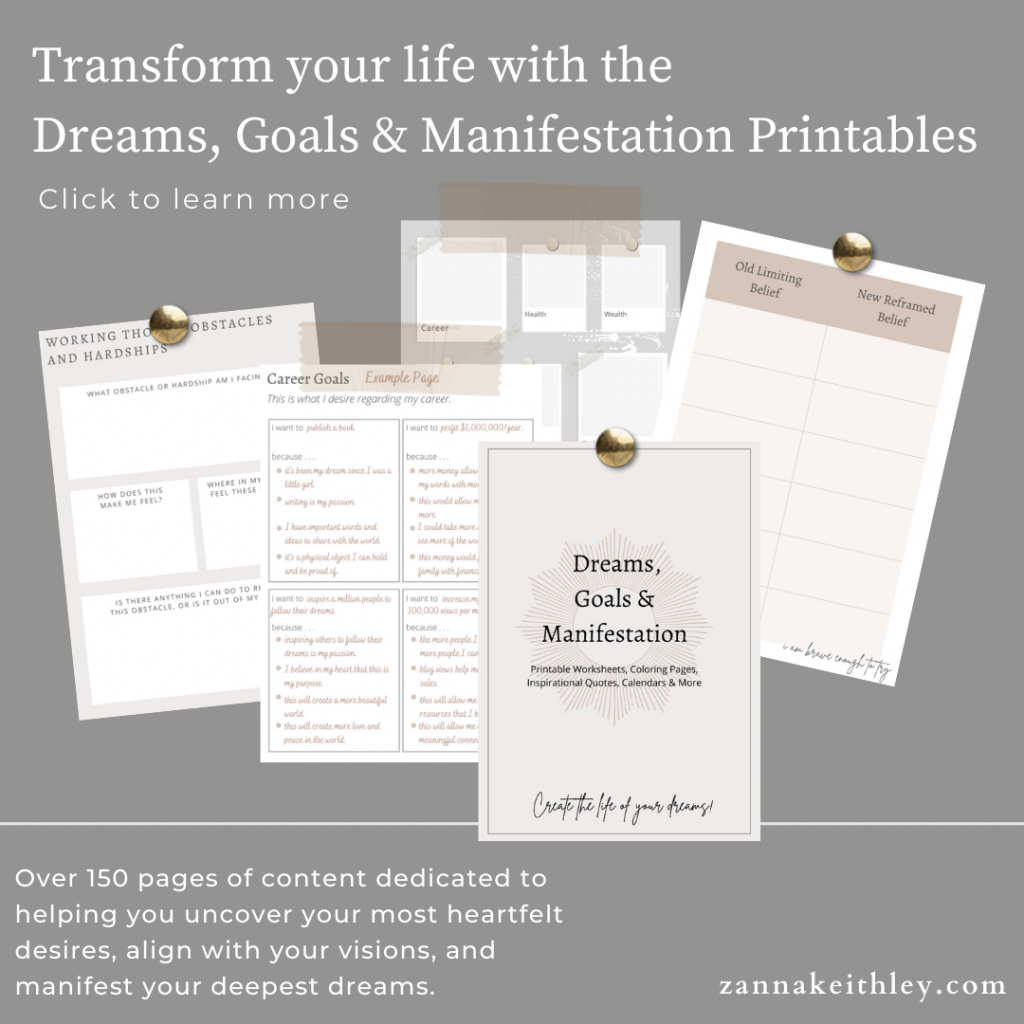
What If You Don’t Like What Your Intuition Is Telling You?
So let’s say you’re trying to manifest something, but your intuition is telling you to do the very opposite of what you think you should be doing. Often, when you want something, it’s because you imagine that outcome will make you feel a certain way.
- You may want to manifest a perfect partner, even though your intuition is telling you to take some time to be single, because you imagine the partner will make you feel loved.
- You dream of getting a prestigious position for a certain well-known company, even though your inner knowing says it’s not as perfect as it seems, because you imagine you’ll finally feel successful and worthy of your parents’ approval.
- Or you want to manifest money to live a more luxurious lifestyle, because you imagine this will make you feel like you’ve finally made it.
There’s nothing wrong with wanting these things for yourself. Nothing. It only becomes a potentially negative thing when it goes against your intuition.
This is when I urge you to step back and re-evaluate your overall goal. Take some time to pause. You can meditate, journal, or take a day off to spend time in nature. Set the intention to understand your desires and what you really want. Allow yourself to shift your vision.
Instead of going after that perfect partner, job, or lifestyle, set an intention to encompass the feelings of being loved, successful, worthy, beautiful, and empowered (or however you imagine this external thing will make you feel) right now in this present moment.
Focus on those feelings, and allow your intuition to guide you forward on your path. Trust that your inner knowing always has the right answers, and believe that the Universe will always take you where you want to go.
It may mean that your perfect partner isn’t supposed to come into your life right now, but you find that you feel so loved anyway, you’re okay waiting.
Even if what your intuition is telling you doesn’t make sense today, it will with time.
If you’re feeling lost, instead of searching for external answers to guide your path, sit in the quiet of your own mind for a little while.
You’ll often find you already have everything you need to take the next step forward.
For more resources on spirituality, meditation, manifestation, and all things self-love, be sure to connect with me on Instagram and Pinterest, where I’m posting positive affirmations and empowering messages daily.
You May Also Like:
- 30 Affirmations For Tapping Into Your Intuition
- What Are The 12 Laws Of The Universe? (A Complete Guide)
- 33 Profound Spiritual Healing Quotes To Guide Your Path
- 30 Journal Prompts For Self Growth (& Deeper Self-Love)
- What Is The Art Of Allowing? (A Complete Guide)
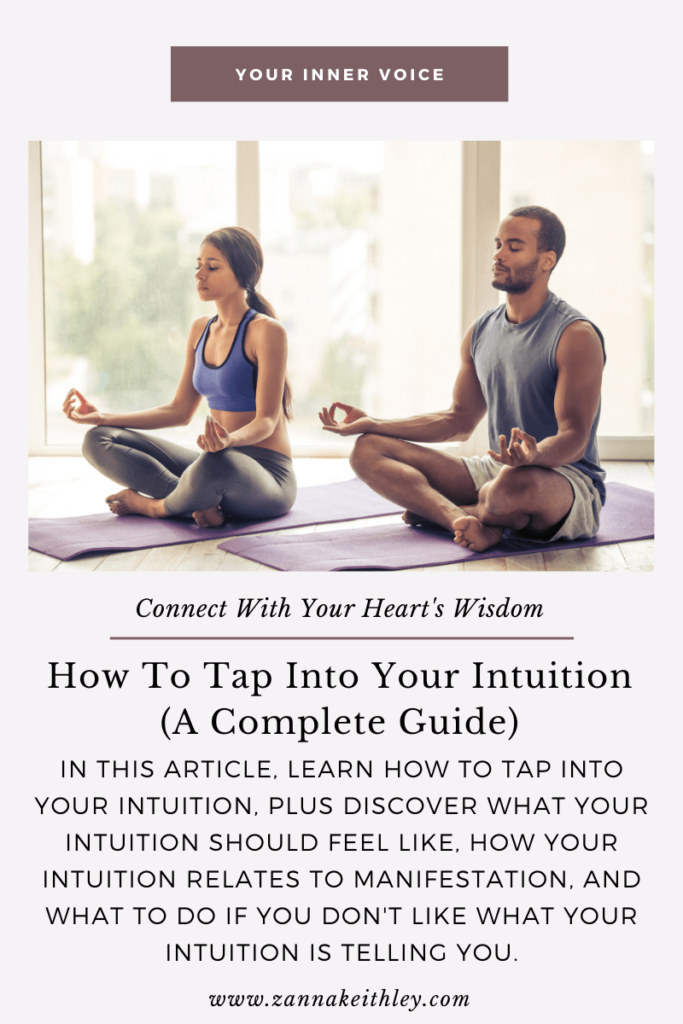
Pin this for later! How To Tap Into Your Intuition (A Complete Guide) 
Zanna Keithley is an author, poet, and social media content creator who writes short prose dedicated to inspiring readers to follow their dreams, trust their intuition, and create beautiful and fulfilling lives. You can find her original writing on Instagram @zannakeithley.
-
35 Mindfulness Affirmations For Stillness & Presence
Discover 35 mindfulness affirmations to help you remain grounded, centered, and rooted in the present moment, no matter what’s happening in your outer world. (And don’t forget to download your free printable affirmations below!)
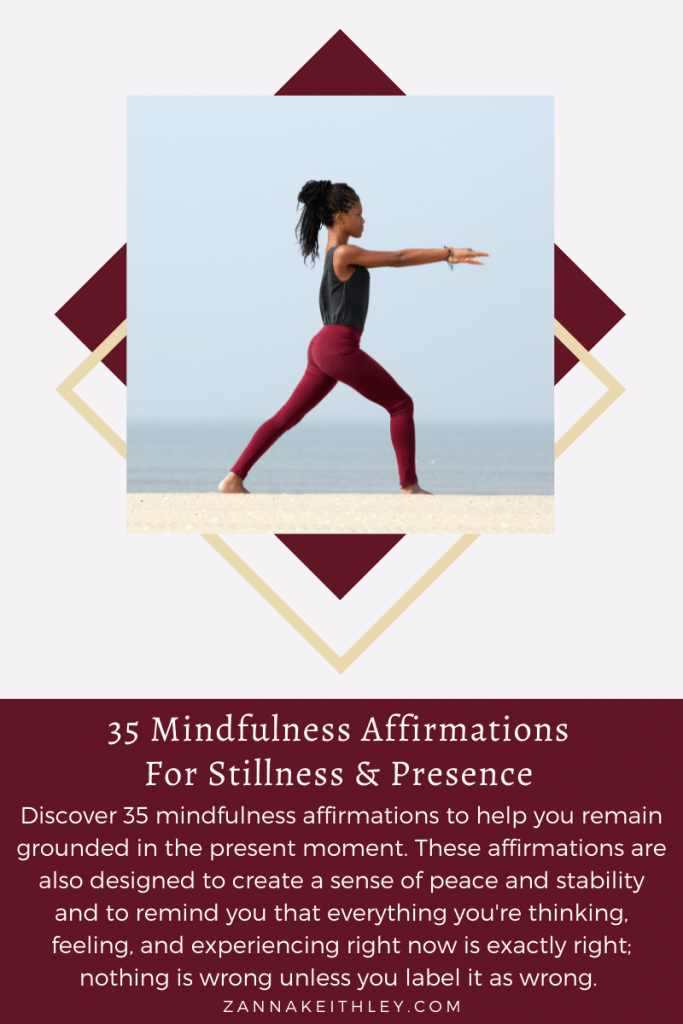
Pin this for later! 35 Mindfulness Affirmations For Stillness & Presence What Is Mindfulness?
The simplest definition for mindfulness is the art of noticing.
To live in a state of mindfulness means to be aware and present in this current moment, allowing you to notice what’s going on within and outside of you. And even more importantly, it’s rooted in non-judgment. That means that instead of forming opinions about what you see, you simply notice with objective, non-judgmental awareness.
To illustrate this, imagine you’re out on a nature walk. Remaining in the present moment, you notice the colors of the trees surrounding you. You notice the clouds hanging out in the sky above you. You notice the sounds the birds make and the coolness of the breeze against your skin.
You also notice how you’re feeling inside—maybe you feel peaceful and serene, or maybe you’re feeling a little stressed and off-center. You acknowledge how you’re feeling and keep walking, accepting these feelings as they are.
This seems simple enough, but consider how easy it is to get lost in your own thoughts: to replay events from the past or worry about the uncertain future. It could be very easy to get through the entire walk without even remembering what you saw, felt, or heard.
Mindfulness allows you to stay grounded in the present moment, but it’s also a little more; in addition to your conscious presence, it also allows you to refrain from criticism or judgment. Through mindfulness practices, you can notice things in your inner and outer worlds without labelling them as right or wrong.
For instance, if you noticed that you felt a little stressed and off-center on your walk, you wouldn’t label it as being “bad.” You would simply allow yourself to accept it, exactly as it is, without an urgent need to fix or change anything.
Mindfulness can be a profound practice for decreasing stress, improving your mood, increasing positive emotions, and improving your overall well-being. Meditation can help you cultivate more mindfulness in your daily life, but you don’t have to meditate to be mindful—mindfulness begins simply by paying attention to what’s happening inside and outside of you (again—without judgment).
Below, you’ll find 35 mindfulness affirmations to help you remain grounded in the present moment. These affirmations are designed to create a sense of peace and stability, reminding you that everything you’re thinking, feeling, and experiencing right now is exactly right; nothing is wrong unless you label it as wrong.
- You May Also Like: 11 Best Mindfulness Books & Journals To Read This Year
Mindfulness Affirmations
- I am here.
- I am present.
- I am grounded.
- In this moment, I have everything I need.
- I am exactly where I am meant to be.
- I am safe and secure.
- I am rooted in this present moment.
- I am strong, steady, and grounded.
- I exist in this moment right now.
- I am grateful for the breath that flows through my lungs.
- My breath is my anchor.
- I am breathing in strength. I am breathing out peace.
- I feel peaceful, grounded, and secure.
- This moment is exactly as it’s meant to be.
- I am experiencing life through all of my senses.
- I allow myself to focus on completing one step at a time.
- My power is in the present moment.
- I am not my thoughts.
- I am not my fears.
- I am viewing the world through the eyes of love.
- All is well in this moment.
- My heart is grateful, and my mind is at peace.
- I will not worry about things I cannot control.
- I focus on what I can control and let go of what I cannot.
- I have the power to overcome my doubts, worries, and fears.
- I allow myself to take things one moment at a time.
- I am grounded, centered, and stable.
- I know deep inner peace.
- This day is a gift, and I accept it with my full presence and undivided attention.
- I release worst case scenario thinking and choose to focus on this present moment.
- When I’m feeling overwhelmed, I allow myself to step back and breathe.
- I notice my thoughts and feelings without judgment or criticism.
- Everything I feel in this moment is exactly right.
- I take care of the future by taking care of the present moment.
- I release my worries and allow myself to find peace in life’s quiet moments.

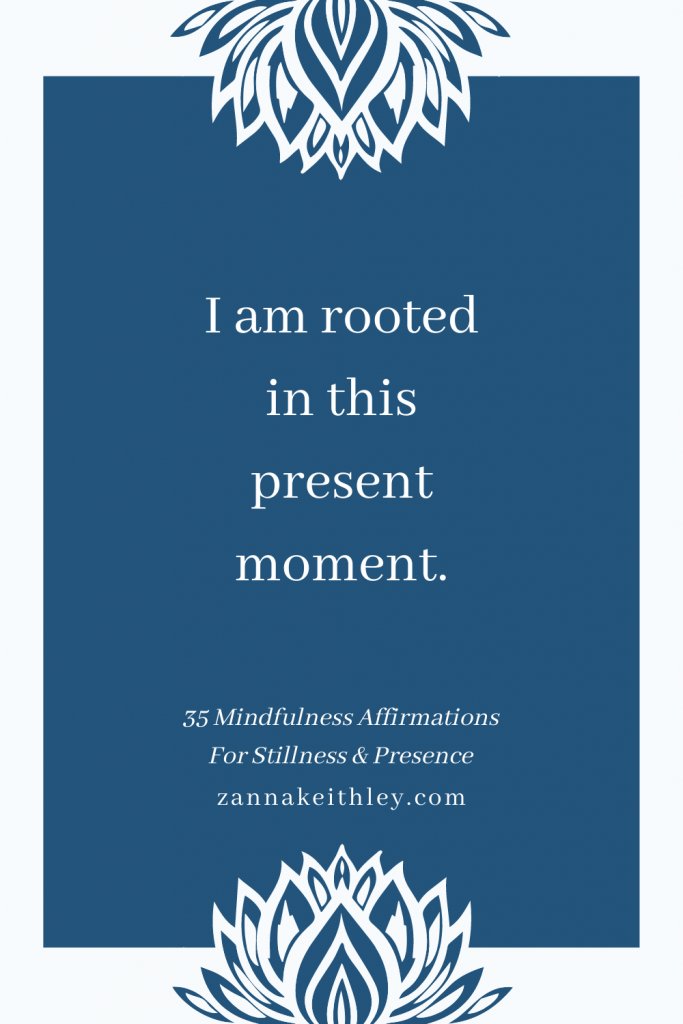
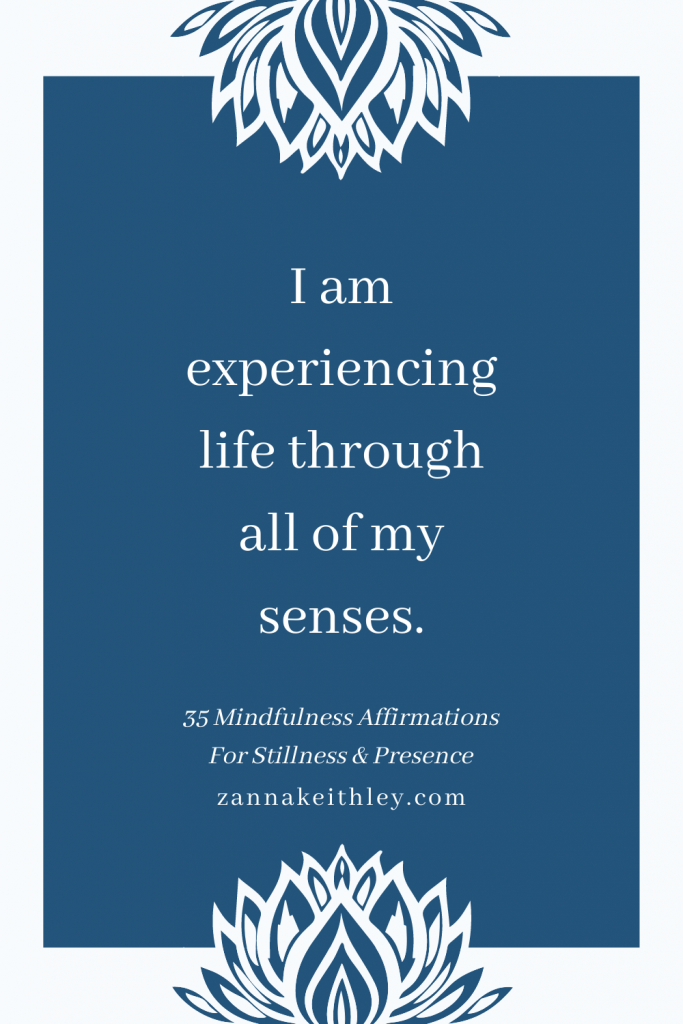
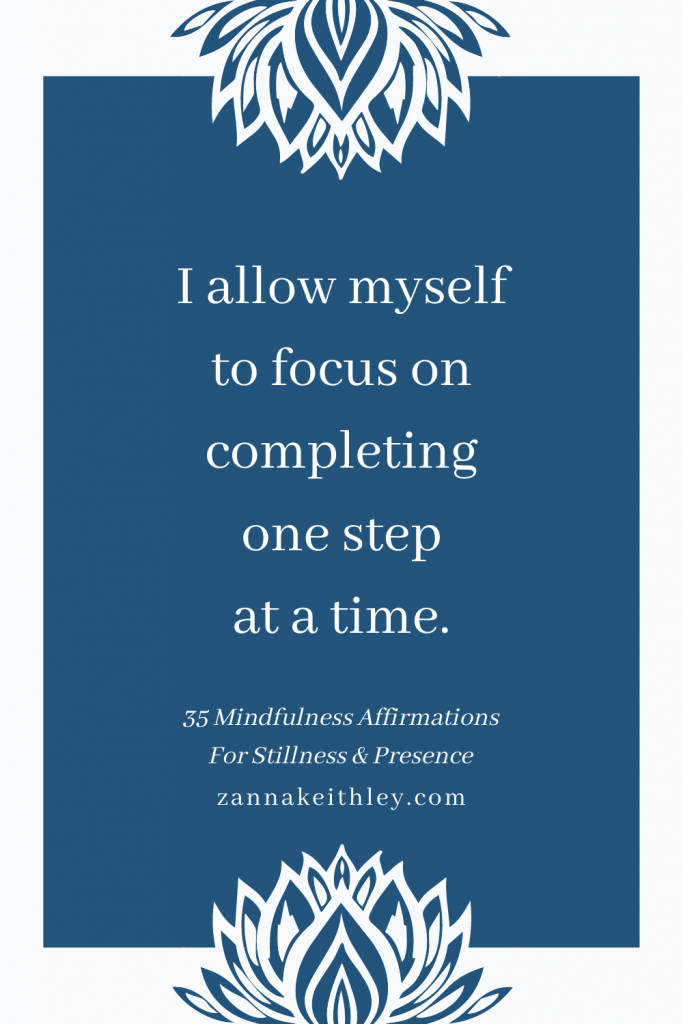
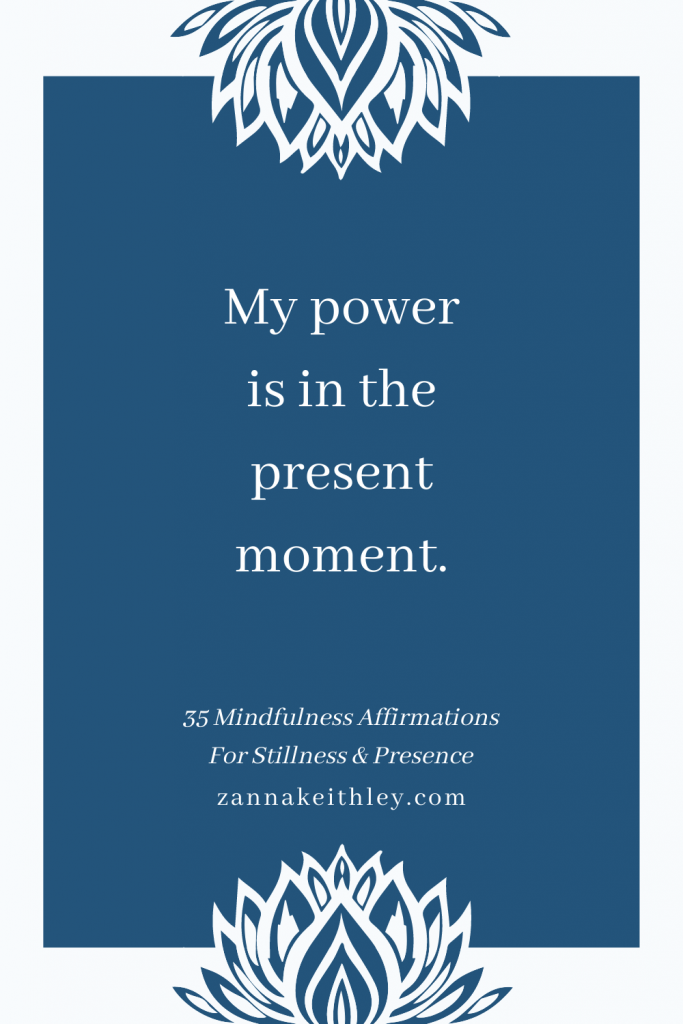
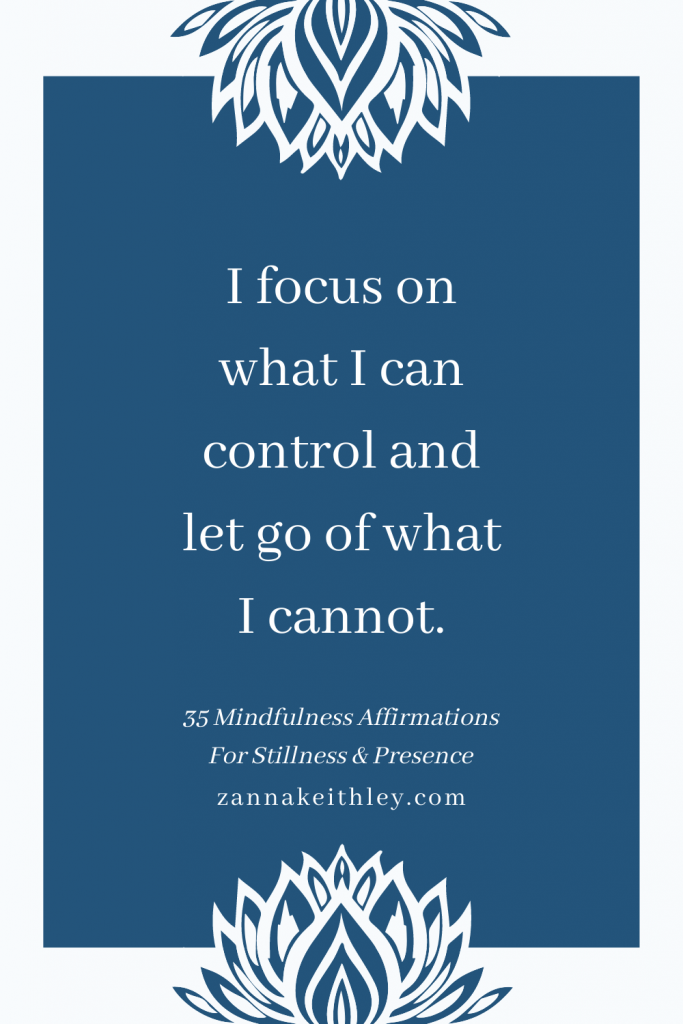
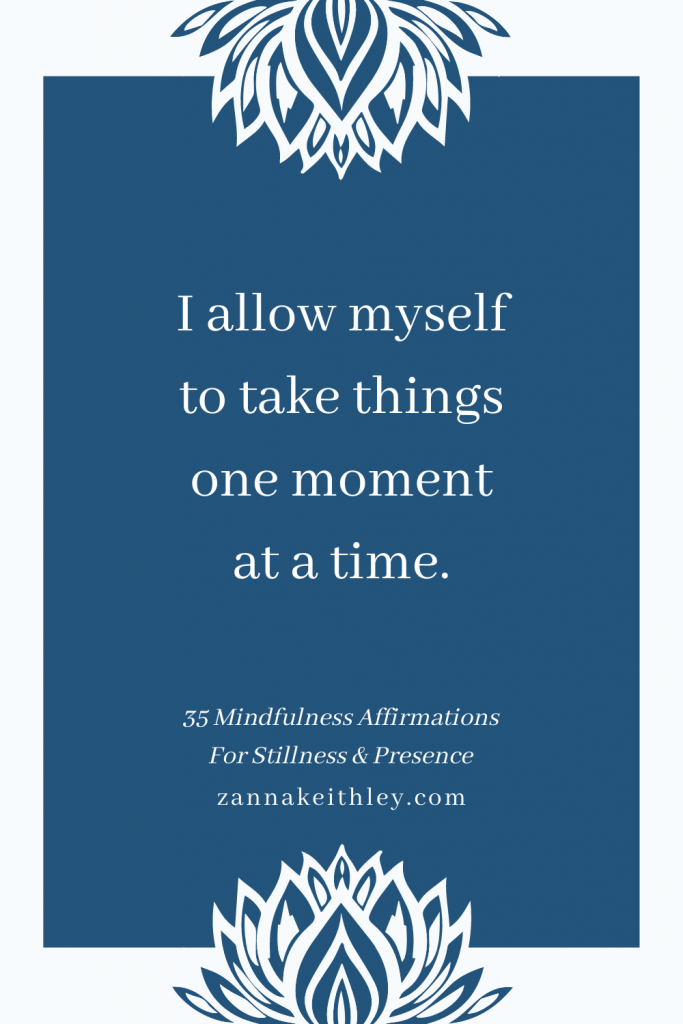
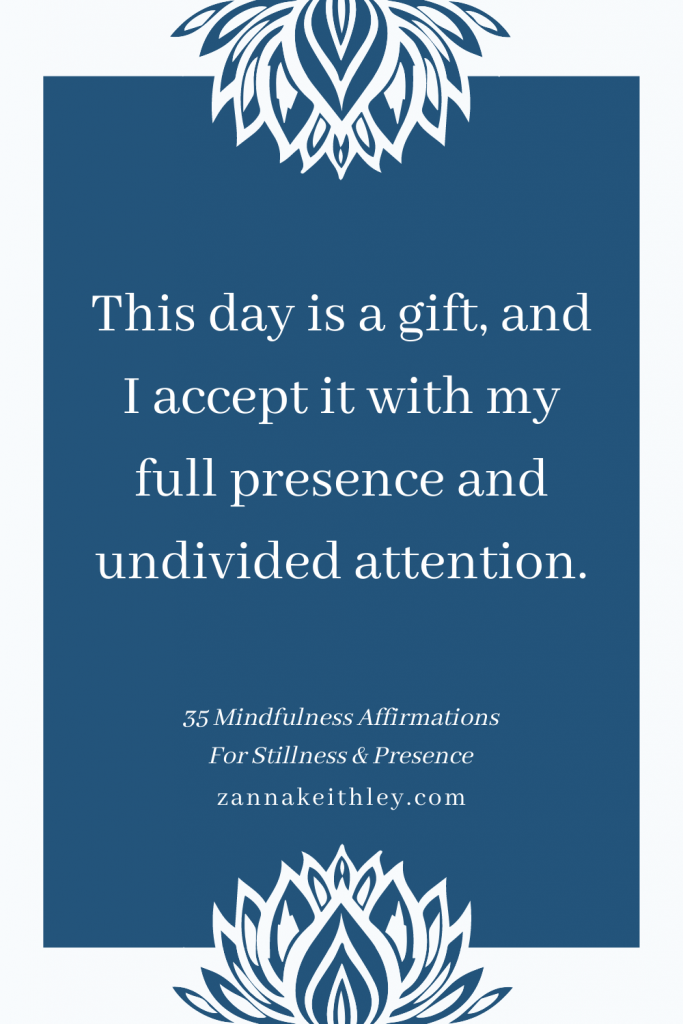
For positive affirmations, self-love tools, manifestation inspiration, and spiritual resources, be sure to follow me on Pinterest and Instagram.
Looking for more? Here are a few more posts you might like:
- How to Start a Meditation Journal (With Links)
- Alternate Nostril Breathing: Benefits & How-To Guide
- Shower Meditation: 6 Ways to Meditate in the Shower
- 50 Meditation Affirmations to Feel Grounded, Peaceful, and Secure
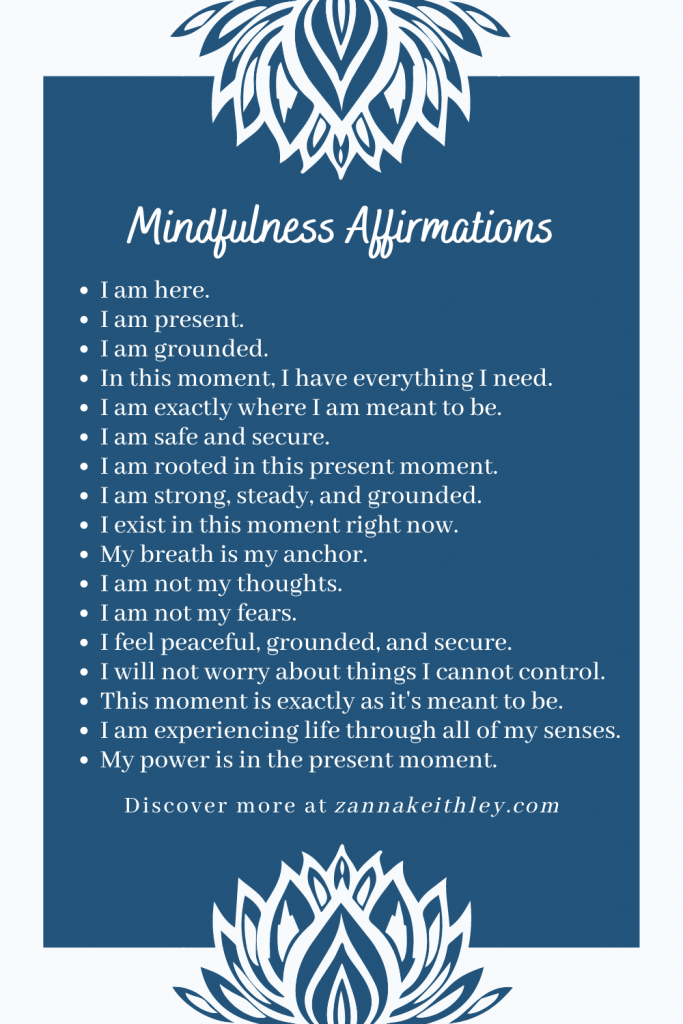
Pin this for later! 35 Mindfulness Affirmations For Stillness & Presence 
Zanna Keithley is an author, poet, and social media content creator who writes short prose dedicated to inspiring readers to follow their dreams, trust their intuition, and create beautiful and fulfilling lives. You can find her original writing on Instagram @zannakeithley.
-
44 Positive Affirmations For Stress, Worry, And Anxiety
In this post, discover 44 positive affirmations for stress, worry, anxiety, and overwhelm. Allow these uplifting affirmations to help you feel calm, strong, and empowered in all moments.
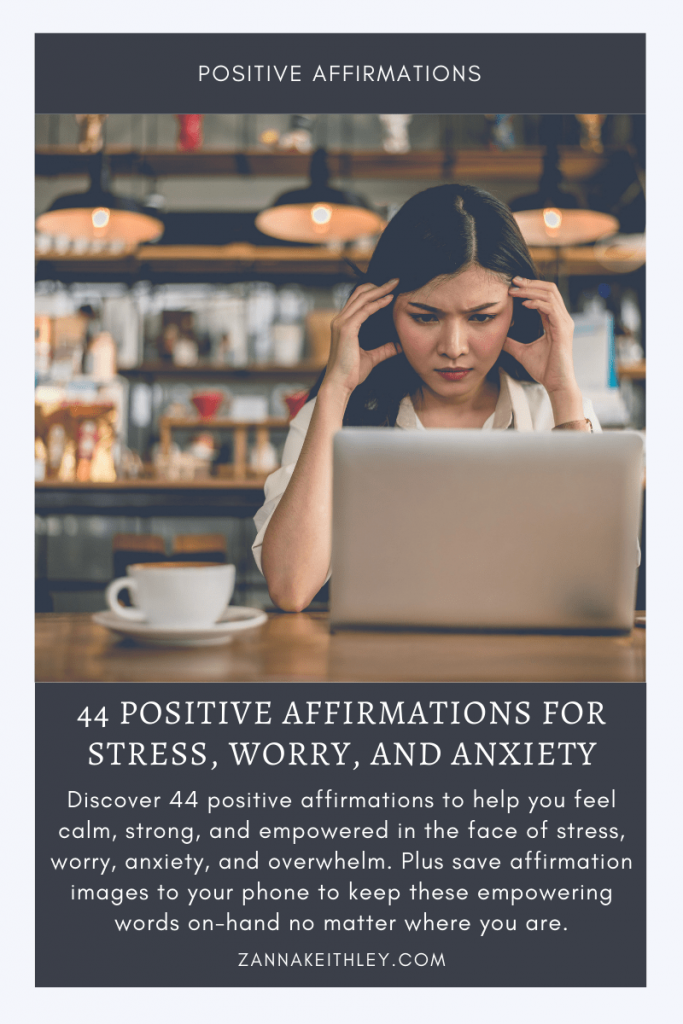
Pin this for later! 44 Positive Affirmations For Stress, Worry, And Anxiety Responding to Stress
How often do you feel stressed in your daily life? Stress might arise from work pressure, personal relationships, financial hardship, and even the pressure you put on yourself to achieve. You might even feel it so regularly, you don’t actually notice it as being somehow wrong—it just feels like a normal part of your everyday world.
You can’t always make stressful situations go away, but trying to ignore the fact that you feel stressed is never the answer. If you know a little about chakras and energy healing, you know that trying to ignore heavy feelings doesn’t make them disappear; rather, this stagnant energy remains inside you. In time, this trapped energy will begin to manifest into even heavier emotions.
For instance, when you try to bury your stress, it might manifest into anger, or it could cause you to lose your courage and confidence.
So how can you respond to stress so that it doesn’t feel so overwhelming?
First, remember that in all moments, you are in control of your own energy. You have power over how you feel. This means that you can feel stress without giving it the power to control your thoughts and emotions.
I find it helpful to acknowledge my stress while also recognizing that I am not my stress. It may be something I feel, but it doesn’t define me.
In these moments, I often take a step back, practice a breathing exercise, and say, “I recognize that I feel stressed right now, and that’s okay. I’m going to be extra compassionate with myself right now.”
Journaling about my anxiety and stress has also been super helpful, as it allows me to probe the source of these feelings with non-judgmental awareness.
Finally, positive affirmations have been instrumental in helping me to remain calm, no matter what’s happening in the world around me.
What makes positive affirmations for stress helpful is that they allow you to feel your difficult and heavy emotions while reminding you that you have the power to rise above emotions that don’t serve or support your total well-being.
They also remind you of your deep courage, strength, and resilience. You can also use positive affirmations to cultivate inner peace and serenity, no matter what’s going on in the world around you.
Below, you’ll find 44 positive affirmations for stress, worry, and anxiety. Use these affirmations to take back control of your thoughts and emotions any time stress begins to feel overwhelming.
- You May Also Like: 7 Grounding Crystals and Stones for Stability & Protection

Affirmations For Stress, Worry, And Anxiety
- I am grounded, centered, and stable.
- I am safe and supported.
- I am equipped with all the resources I need to walk through this experience with courage and strength.
- I have everything I need to overcome any obstacles that come my way.
- I will not worry about things I cannot control.
- I focus on what I can control and let go of what I cannot.
- I have the power to overcome my doubts, worries, and fears.
- I own my power and recognize the strength inside me.
- It’s okay for me to feel stressed. I respond to my stress with love and compassion.
- I allow myself to take things one moment at a time.
- I am in charge of my own energy. I’m the only one who chooses how I feel.
- I have the power to control my emotions.
- I choose to think positive thoughts.
- I am strong, capable, and resilient.
- I am far stronger than I realize.
- I am capable of handling anything that comes my way.
- Calm is my superpower.
- I am resilient. Nothing can shake me.
- I release worst case scenario thinking.
- I free myself from fear of the unknown.
- I am kind and compassionate toward myself when I make a mistake.
- Mistakes do not equal failure.
- Mistakes do not define me. I am allowed the grace of imperfection.
- I choose to view adversity as an opportunity for growth.
- I have the power to make profound positive changes.
- I rise in the face of new challenges.
- When I’m feeling overwhelmed, I allow myself to step back and breathe.
- My peace is more important.
- I inhale peace and exhale worry.
- This feeling is temporary.
- I am willing to view this experience through the eyes of love.
- I choose peace over perfection.
- I allow myself to feel all my emotions, but I have the ability to rise above anything that doesn’t serve my highest good.
- I am worthy, no matter what I do or don’t accomplish today.
- My worthiness is not defined by my achievements.
- I choose courage over fear and peace over perfection.
- I trust that the Universe gives me exactly what I need at exactly the right time.
- My energy is not reserved for worrying. I use my energy to trust, believe, and have faith.
- I cultivate deep courage and compassion within my mind, body, and spirit.
- In this moment, I am exactly where I am meant to be.
- The universe supports me in every way.
- All experiences shape me to be a stronger and braver version of myself.
- I am living a fearless life.
- All is well.
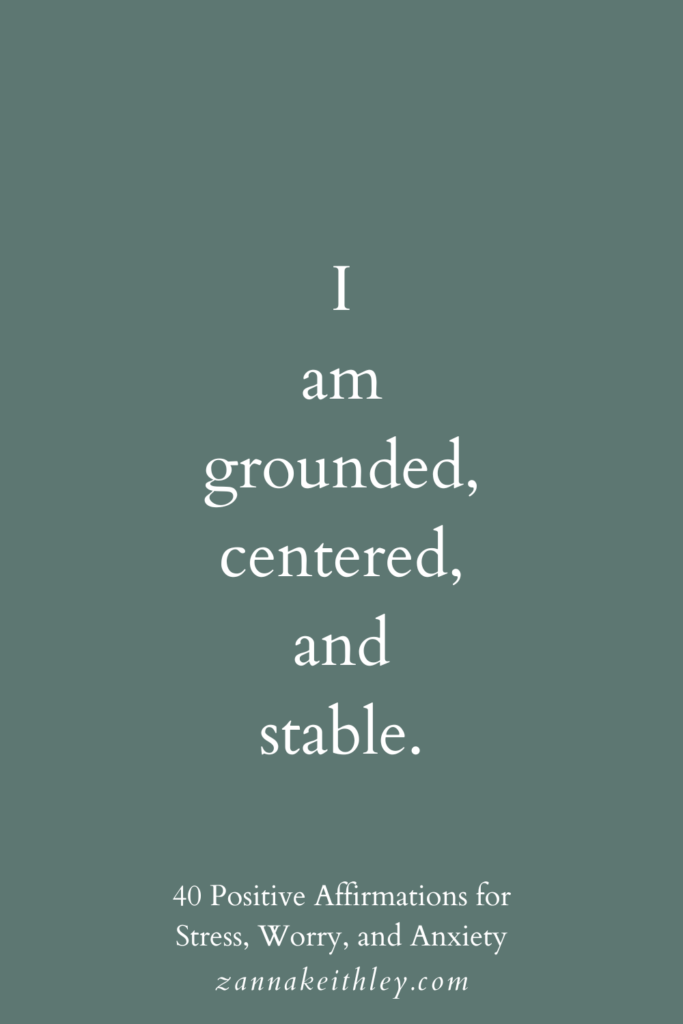
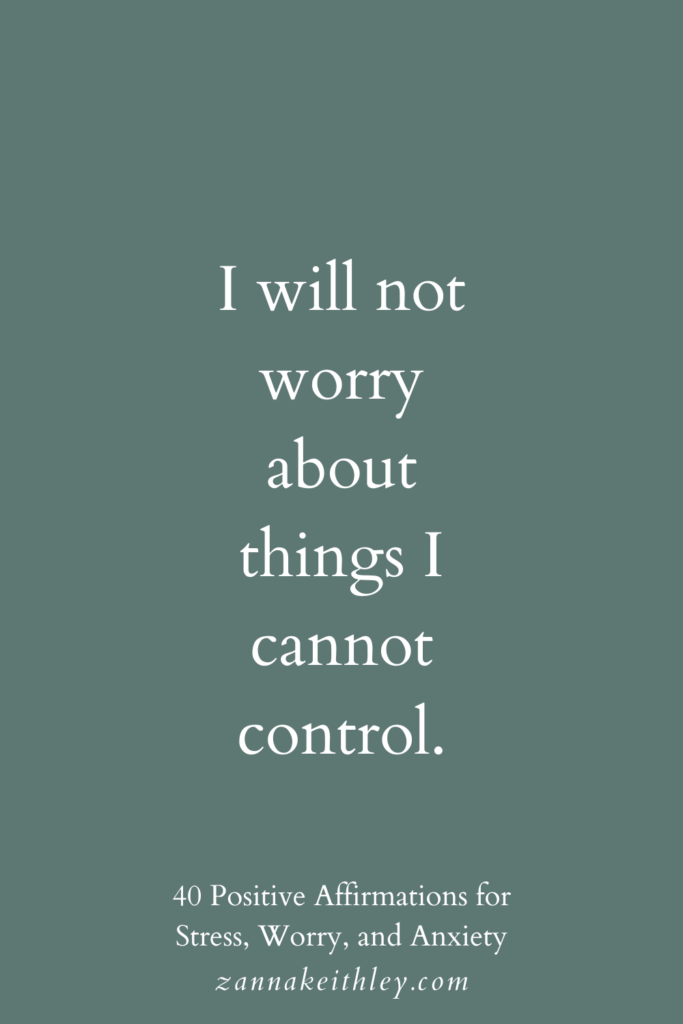
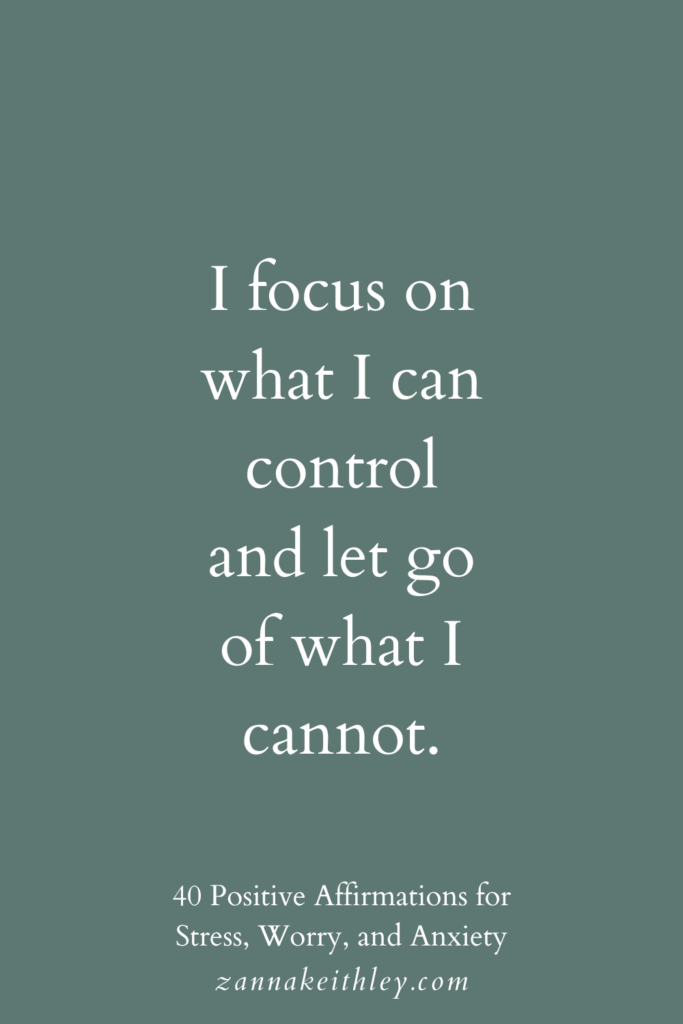
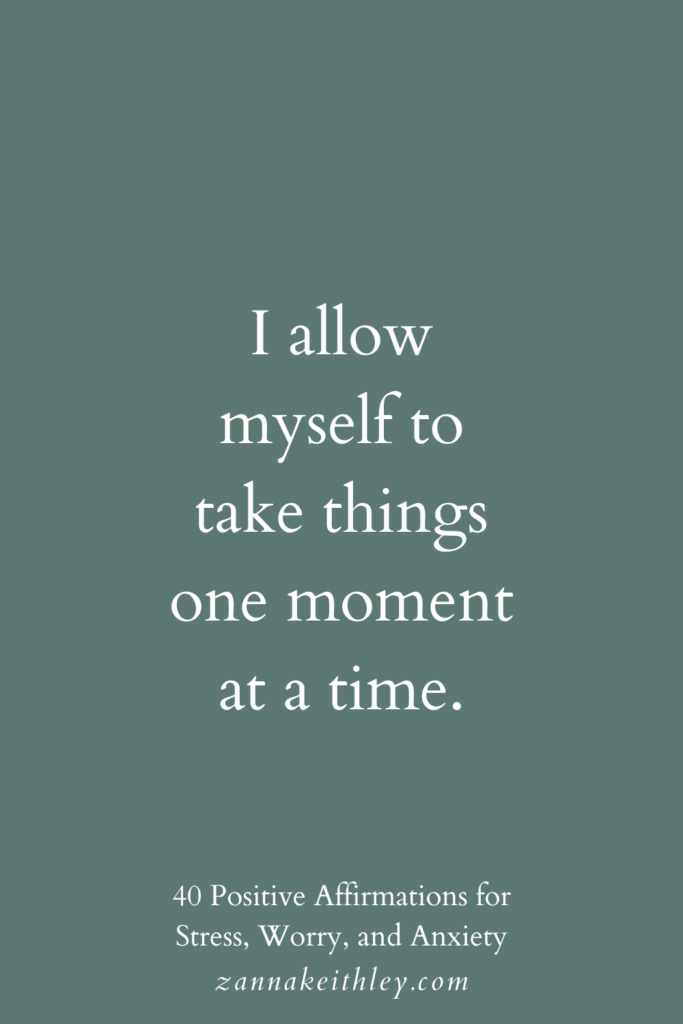

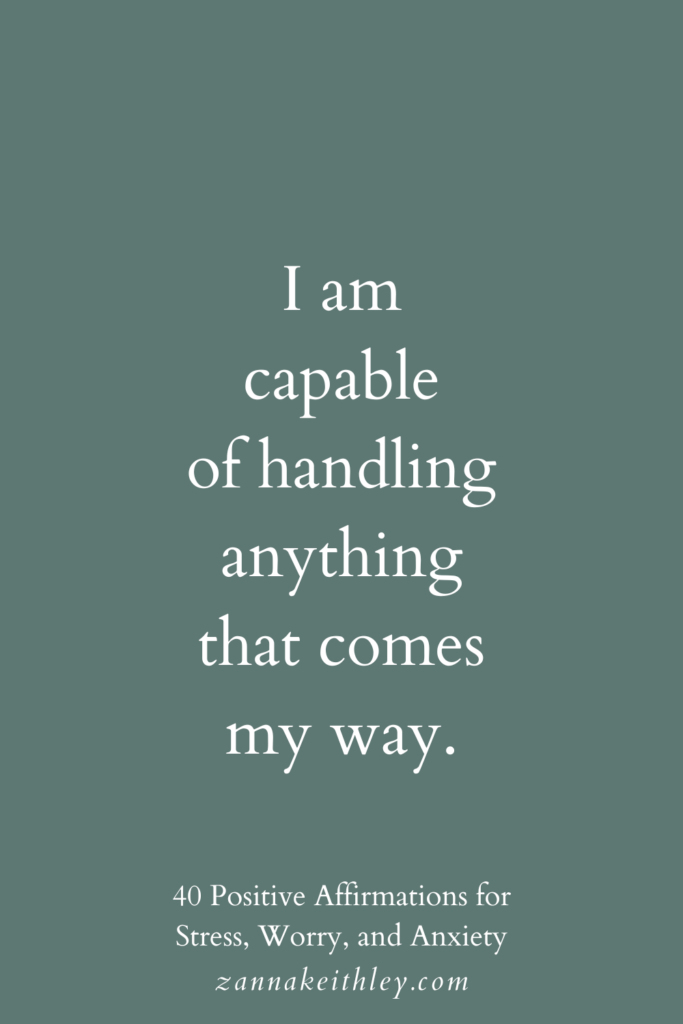
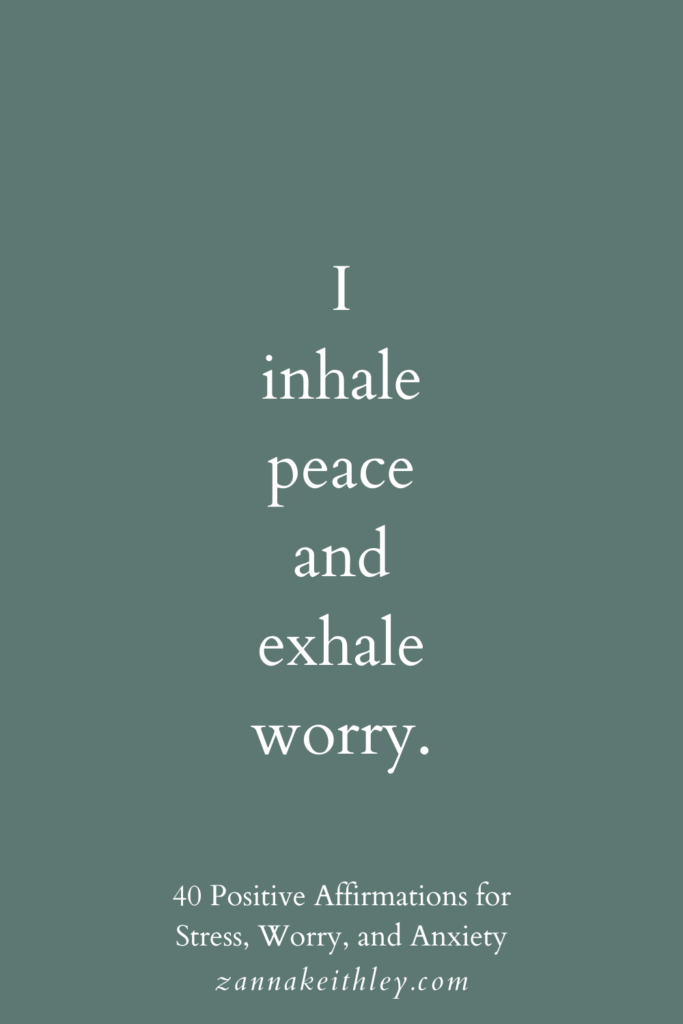
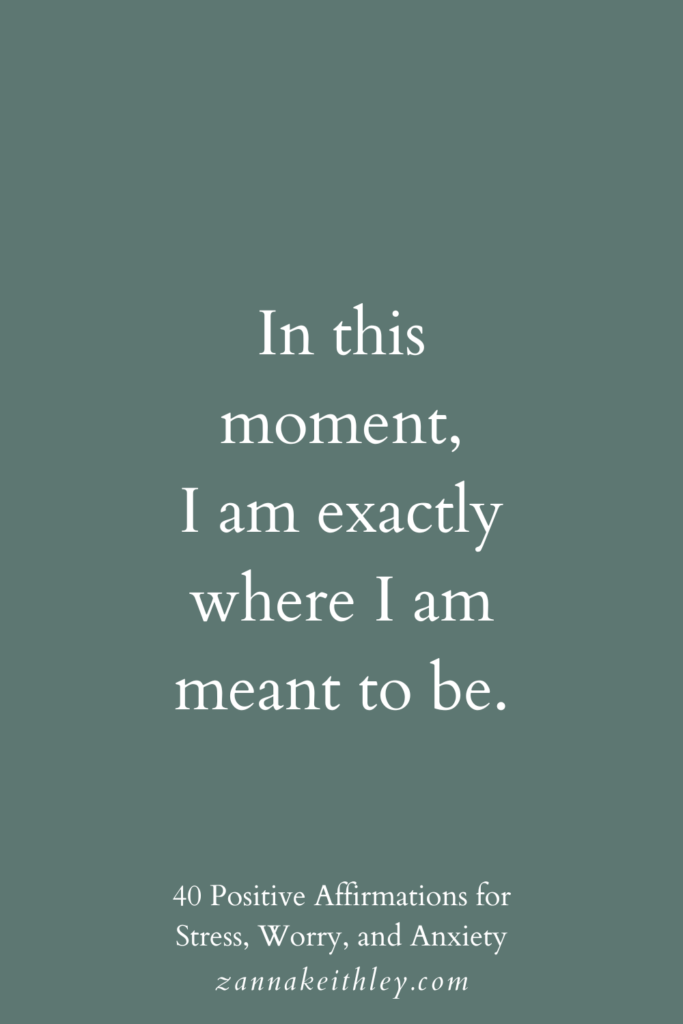
If you want to add uplifting affirmations to your daily routine, be sure to connect with me on Instagram, where I post daily affirmation stories every morning. And don’t forget to follow me on Pinterest, where I’m pinning positive affirmations and inspiring quotes every single day.
More Articles You May Like
- How To Protect Your Energy (7 Essential Practices)
- 40 Positive Affirmations for Overcoming Challenges
- 45 Personal Growth Journal Prompts To Be Your Best Self
- How To Raise Your Vibration In 30 Seconds (Or Less)
- 11 Beautiful Poetry Books About Self-Love & Acceptance
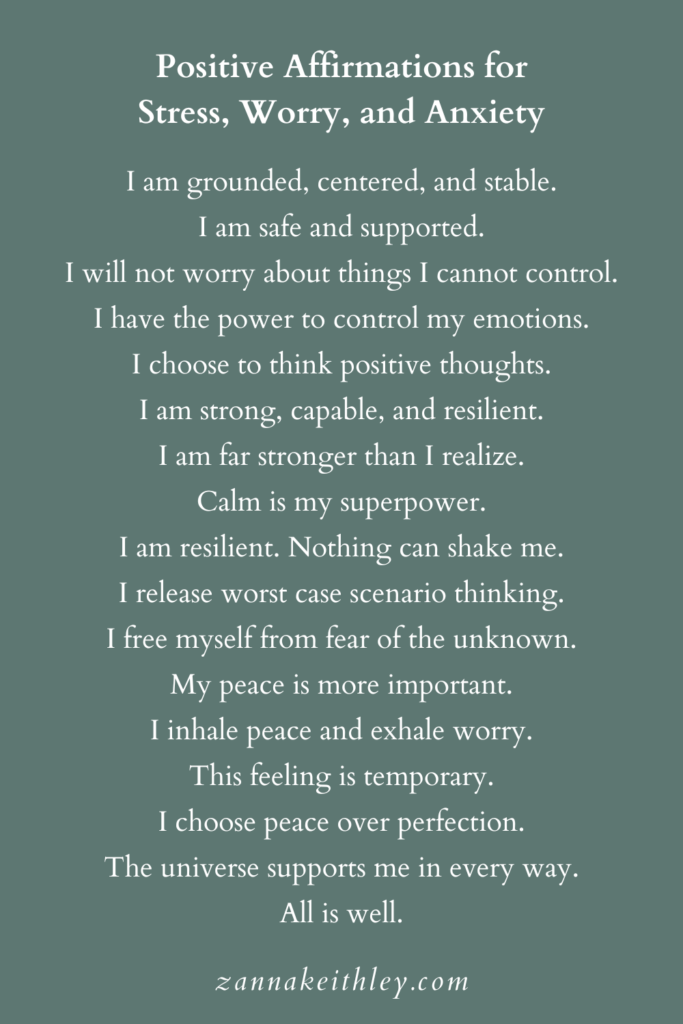
Pin this for later! 44 Positive Affirmations For Stress, Worry, And Anxiety 
Zanna Keithley is an author, poet, and social media content creator who writes short prose dedicated to inspiring readers to follow their dreams, trust their intuition, and create beautiful and fulfilling lives. You can find her original writing on Instagram @zannakeithley.
-
11 Best Mindfulness Books & Journals (for 2024)
In this post, discover 11 of the best mindfulness books and journals to read this year. For beginners and experienced mindfulness practitioners alike, these resources will take you on a profound journey to cultivating mindfulness and inner peace.
Disclaimer: This post contains Amazon links. As an Amazon associate, I earn from qualifying purchases. If you purchase a product using my link, I may receive a small commission at no extra cost to you. You can read my full disclosure policy here.
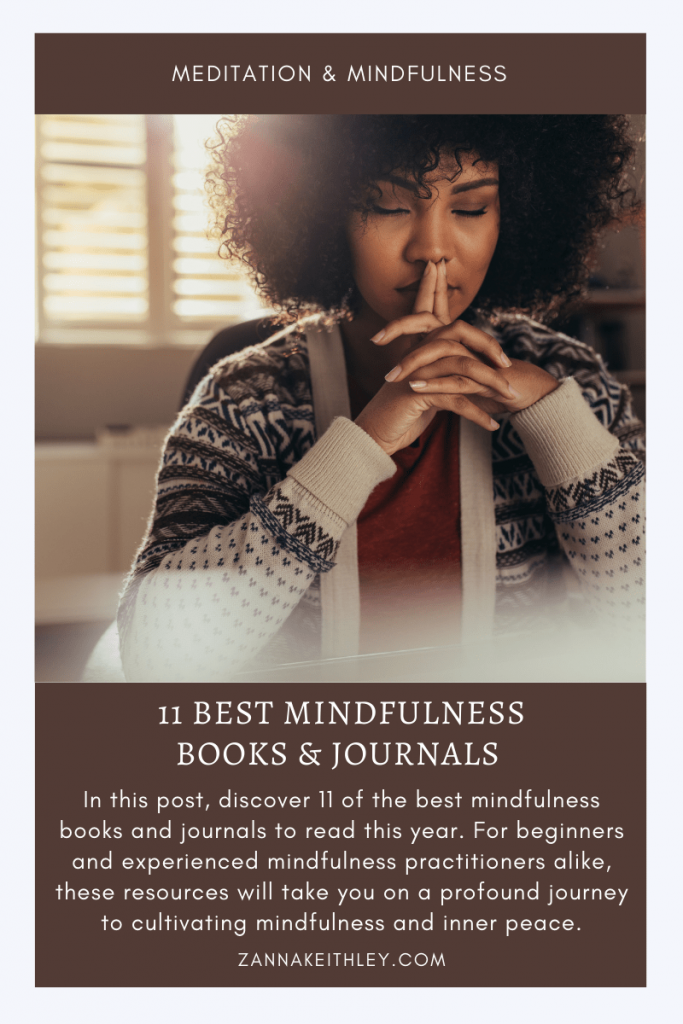
Pin this for later! 11 Best Mindfulness Books & Journals (for 2023) What Is Mindfulness?
Mindfulness is non-judgmental, conscious awareness in the present moment. This means being aware of your own thoughts, feelings, and surroundings in the present moment without putting labels on any of it as right or wrong. Mindfulness is sometimes referred to as the art of noticing, as it doesn’t require anything from you except to simply notice.
Now, if this is still kind of unclear, that’s okay. Let’s break it down a little further.
- Lack of Judgment: As humans, we experience a range of thoughts and emotions throughout our lives. Sometimes, we experience this spectrum in a single day. Anger, fear, sadness, pain, anxiety, and stress are emotions we often call negative. Likewise, we may have thoughts that we deem to be wrong or bad. The key to mindfulness is to not judge ourselves for our thoughts and emotions. Simply observe. If you notice that a thought you’re having doesn’t align with what feels good and true to you, you can take this moment to realign with your truth.
- Conscious Awareness: This means that you recognize your thoughts, words, and actions as you’re thinking, speaking, and acting. This is the opposite of the “autopilot” mode we all fall into once in a while. Conscious awareness is taking a step back, recognizing the autopilot mode, and choosing how to think and feel in this moment. (Again, when you catch yourself in autopilot mode, don’t judge yourself. It’s perfectly normal.)
- Returning to the Present Moment: I think about the past a lot. I also think about the future a lot. And that’s okay. I can also recognize that the only real thing in the world is this moment right now. You can think about the past and future, but don’t live there. Live in this moment. That’s what mindfulness does for us; it allows us to honor and recognize the beauty, value, and importance of this moment right now.
Mindfulness is knowing that nothing about this moment is wrong. Nothing is a mistake. It is exactly as it is. And if you don’t like how you’re feeling or what you’re experiencing in this moment, notice and see if you can realign with something that feels better. But don’t judge yourself for being human.
If you’d like to learn more about what mindfulness is and explore profound mindfulness quotes from top scholars and thinkers, you can learn more about mindfulness here. And in this post, I offer 10 practices to help you cultivate mindfulness today.
Below, you’ll find 11 of the best mindfulness books and journals for beginners and experienced mindfulness practitioners alike. All of the books and journals below will take you on a gentle, profound journey that leads you to the greatest destination of all: back to yourself.
- You May Also Like: 10 Best Manifestation Books to Read This Year
Mindfulness Books & Journals
Practicing Mindfulness: 75 Essential Meditations
If you’re looking to begin your own mindfulness practice, Matthew Sockolov’s Practicing Mindfulness: 75 Essential Meditations will take you on a truly profound and meaningful journey through mindfulness using meditation. Here, you’ll find 75 unique exercises. The early ones can be done in just 5 minutes a day, and as you progress in your journey, so will the meditations. This is a great guide for both beginners and experienced practitioners alike.
Think Like A Monk
Jay Shetty’s Think Like A Monk is an inspiring guide to overcoming your own negative thoughts, accessing your inner peace, and clearing any roadblocks that may be stopping you from tapping into your own power and potential. Shetty takes often complex and abstract ideas and transforms them into accessible exercises and advice that you can use in your own life to reduce stress and increase mindfulness.
Mindfulness: An Eight-Week Plan
Mindfulness: An Eight-Week Plan for Finding Peace in a Frantic World by Mark Williams and Danny Penman provides you with simple yet powerful practices for cultivating mindfulness in your daily life. It promotes true joy and inner peace and helps you to break the cycle of daily stress, anxiety, and exhaustion.
Wherever You Go, There You Are
When you start researching mindfulness, Jon Kabat-Zinn is likely one of the first names that will come up. (And likely, his name will keep appearing over and over again). This book is absolutely a must-have for those new to meditation and mindfulness as well as seasoned practitioners. Wherever You Go, There You Are takes you on a profound journey back home to yourself. It teaches you how to cultivate mindfulness your own way in a gentle yet powerful manner.
Mindfulness For Beginners
And because there can never be too much Jon Kabat-Zinn on a mindfulness list, his book Mindfulness for Beginners: Reclaiming the Present Moment and Your Life is a truly wonderful resource for anyone just starting their mindfulness journey. This book guides you back to yourself and helps you to embody the real and true you. This book is an invitation to transform the way you think, feel, work, and play in a loving, wholehearted manner.
A Year Of Zen
Bonnie Myotai Treace’s A Year of Zen is a 52-week guided journal filled will thought-provoking journal prompts and ample space to explore and reflect upon your own experiences and inner world. (And its simple illustrations are elegant and serene.)
Mindfulness For Beginners In 10 Minutes A Day
Lara Hocheiser’s Mindfulness for Beginners in 10 Minutes a Day is another great resource for those just beginning their mindfulness journey. Hocheiser provides the readers with an explanation of what mindfulness is in an easy-to-grasp way and offers simple yet profound exercises for practicing mindfulness every morning, day, and night.
The Miracle Of Mindfulness
Thich Nhat Hanh is another prominent figure in the meditation and mindfulness space. His book, The Miracle of Mindfulness, is a beautiful and gentle introduction to mindfulness, offering exercises and anecdotes that remind you that each moment holds its own gifts and opportunities for peace.
The Mindfulness Journal
Worthy Stokes’ The Mindfulness Journal: Creative Prompts to Relax, Release, and Explore the Wisdom of You is a wonderful discovery filled with gifts on every page. In addition to prompts, it offers exercises that allow you to explore mindfulness through connecting with your inner artist. This is a beautiful journal that also makes a great gift for friends and loved ones.
Star Wars: The Jedi Mind
Star Wars: The Jedi Mind: Secrets from the Force for Balance and Peace by author Amy Ratcliffe and illustrator Christina Chung pairs lessons from Star Wars with mindfulness lessons relevant to our own galaxy in the 21st century. This is a perfect gift to yourself or the Star Wars fan in your life, offering accessible lessons focused on peace, serenity, and balance.
A Year Of Mindfulness
Jennifer Raye’s A Year of Mindfulness is a 52-week mindfulness journal that includes weekly themes and daily writing prompts that allow you to cultivate mindfulness each day of the year. The simple, easy-to-follow exercises in this journal are designed to help you live in the moment and notice the world around you (and within).
Do you have any favorite mindfulness books or journals? Share your favorites in the comment box below! And for positive affirmations, self-love tools, manifestation inspiration, and spiritual resources, be sure to follow me on Pinterest and Instagram.
Looking for more? Here are a few more posts you might like:
- How To Tap Into Your Intuition (A Complete Guide)
- 500 Things To Be Grateful For Today
- Alternate Nostril Breathing: Benefits & How-To Guide
- 33 Profound Spiritual Healing Quotes To Guide Your Path
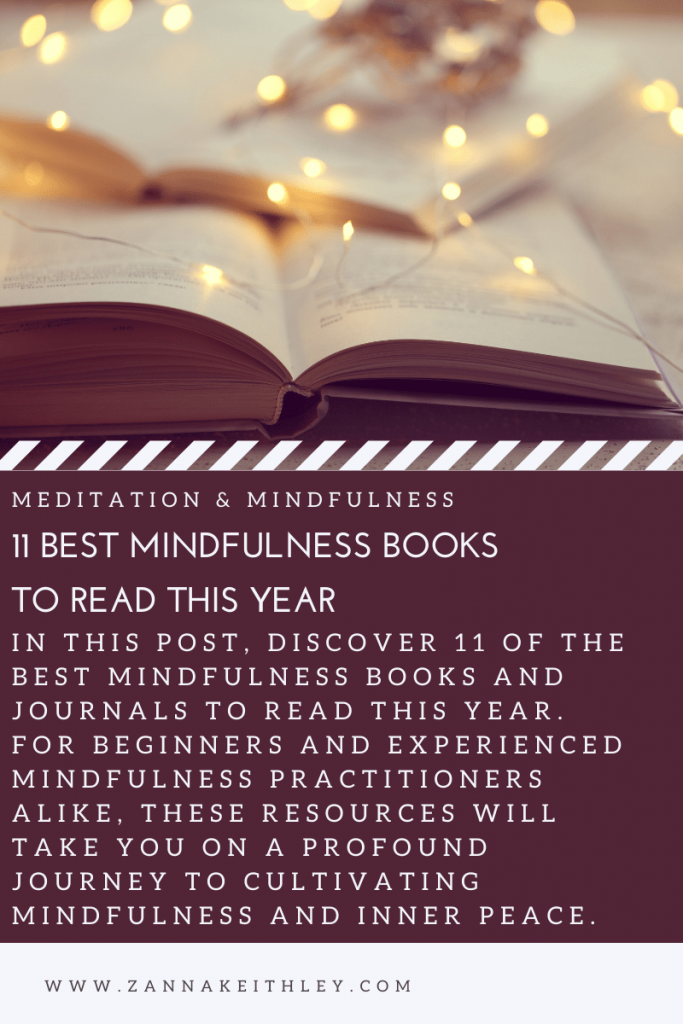
Pin this for later! 11 Best Mindfulness Books & Journals (for 2023) 
Zanna Keithley is an author, poet, and social media content creator who writes short prose dedicated to inspiring readers to follow their dreams, trust their intuition, and create beautiful and fulfilling lives. You can find her original writing on Instagram @zannakeithley.
-
The 12 Laws Of Karma Explained (A Complete Guide)
In this article, discover the true meaning of karma, plus learn what the 12 Laws of Karma are and how you can use them to create a life of genuine joy, purpose, passion, and fulfillment.
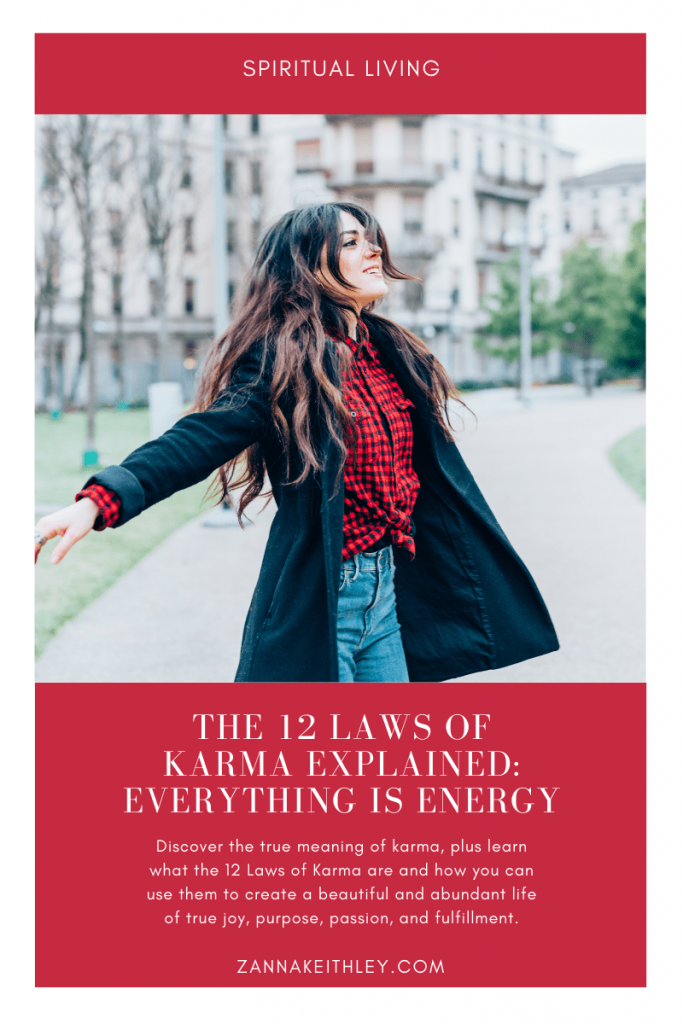
Pin this for later! The 12 Laws of Karma Explained (A Complete Guide) What Is Karma?
What do you think of when you heard the word karma?
For many of us, our first thought is the saying, “What goes around comes around.”
Often, this is said with a negative connotation. When you see or hear about somebody who lies, steals, or treats another with unkindness, you may say, “Karma will come back around and catch up with them.”
While this is one aspect of karma–and the central idea in the First Law of Karma (The Great Law)–there’s actually a lot more to the concept of karma than most of us realize.
In Sanskrit, the word karma means “action.”
When I have a good thought or do a good deed, this goodness has positive effects and ultimately comes back to me. When I have a bad thought or do something that I know is harmful, the negative effects will ultimately come back to me as well.
Good actions beget more goodness; bad actions beget more badness.
But it’s not just about good and bad.
Rather, the important thing is realizing that every action has meaning; everything you do and say contributes to the overall whole.
And most of the time, what we consider to be “good” or “bad” is subjective depending on our perspective and life experience. This is especially important to remember when it comes to events happening in your own life.
When you believe something bad is happening to you, it may be time to take a step back and evaluate your life with gentle and non-judgmental awareness.
What lessons might the universe be trying to teach you? Are you blaming others for what happens in your life, or are you able to take personal responsibility? Could there be any goodness to what you perceive as bad?
Rather than saying, “This bad thing is always happening to me,” you have the opportunity to turn it around and ask, “What can I learn from this experience?”
- You Might Also Like: What Are the 12 Laws of the Universe? (A Complete Guide)
How To Use The 12 Laws Of Karma
You get to decide your personal relationship with these laws and how you’ll use them to guide your own life path.
But I do want to offer this advice:
Don’t view these laws as rules that are meant to tie you down or fit you into a box.
The word “law” may have a negative connotation for some, as you may view it as an unbending rule that prevents you from experiencing true freedom.
But the opposite is true here.
The 12 Laws of Karma are not meant to limit or constrict you; through their very nature, they’re meant to lead you to a life of joy, freedom, passion, purpose, and love.
These laws are designed to show you the road map to a beautiful and fulfilling life. They help you to live in the present moment and find joy in this moment right now, no matter what your external world may look like.
And they show you the way to creating meaningful change and living the life you’ve always desired: the beautiful and abundant life of your dreams.
So as you read through the 12 Laws of Karma, allow yourself to gently explore them with an open heart, receiving them as a loving gift from the universe. These laws are not meant to hinder you but rather to show you the path to true freedom and to a life filled with love, fulfillment, and abundance.
The 12 Laws Of Karma
The Great Law
The Great Law, also known as The Law of Cause and Effect, fits what most of us traditionally think of when we hear the word karma. Anyone familiar with manifestation and the Law of Attraction will also be familiar with the concepts presented in this law.
The foundation of the Great Law is the idea that whatever we put out into the world is what we get back. While you may think of this in terms of actions (i.e. if you see someone drop their wallet and pick it up to give back to them, this kindness will come back to you), it’s also important to view it in terms of energy.
The energy you put out into the world is what comes back to you, whether you’re conscious of it or not.
Say you wake up every morning feeling frustrated and annoyed that you have to go to work again today. The shower water is never hot enough, the other cars on your commute are always driving too slow, and everyone else seems to be getting raises and promotions but not you.
You have a scarcity mindset; no matter how much you have, it’s never enough. Because of this, you emit negative energy into the universe. And even though you don’t want to receive more negativity, that’s what you keep getting: more scarcity, more lack, more lukewarm showers and slow commutes.
But what if you changed your perspective? What if you stepped into the shower feeling grateful for the running water that keeps you clean? What if you focus on the fact that you have reliable transportation to get you to work? What if every time one of your coworkers got a raise or promotion, you cheered them on?
Things change once you start viewing your world from the perspective of gratitude and appreciation; you emit positivity into the world, and thus, you receive more positive energy in return.
Do you want abundance in your life? Become the embodiment of abundance. Do you want love? Start with showing yourself unconditional love, then share that love with the world around you. If you want something, become the embodiment of that thing, then watch as more of it flows into your life in beautiful and miraculous ways.
- You Might Also Like: How To Practice Gratitude (For Law Of Attraction)
The Law of Creation
The first law flows effortlessly into this second law, and it’s likely you’ll quickly see how all of these laws are intertwined.
The Law of Creation states that you must take action to create the life you desire. You are a powerful creator, and you have the power to co-create your life along with the universe. But too often, we sit back, hoping things will work out but not actively doing anything about it. You must become an active participant in your story.
This doesn’t mean trying to control outcomes, forcing things to happen, or stubbornly staying on a path that doesn’t truly feel right for you.
Rather, it goes back to the idea of putting out the energy you want to receive. And it also means taking inspired action when your intuition leads you in a certain direction.
If you want to create abundance, first become abundance. Then, when you feel that nudge to take action, do so in a state of effortless flow. This is what co-creating is: setting an intention, telling the universe what you want, become the embodiment of what you want, and trusting the universe to lead you where you’re meant to go.
The Law of Humility
Are you able to accept responsibility for your past and current reality? For instance, let’s go back to the “hate your job” scenario. Let’s say that you’re in a position you don’t enjoy, and you haven’t received the promotion or raise you think you deserve. You enter the office with a bad attitude and leave with an even worse one.
Do you blame your boss or your coworkers for your unhappiness?
Is there someone else a few cubicles away who seems to be getting all of the rewards you want, and you blame his or her success for your failure?
The Law of Humility is all about accepting that you have created your current reality through actions, choices, and the energy you’ve emitted. It’s about not blaming others for everything that’s seemingly going wrong in your life but taking responsibility for your current place in life.
In order to change something, you must first accept it. So in order to change the circumstances of the job you don’t like, you must accept the role you’ve played in creating your current experience; through acceptance, you remove your blinders, embrace the truth, and are able to see what must change in order to create a life that you love.
The Law of Growth
Do you consider yourself a fixer? Do you good-intentionally try to change the people in your life in order to help them? When things are going badly, do you first try to change your external world (places, people, things) before looking internally?
The Law of Growth says that there is only one thing you truly have control over: yourself. If you want to make a positive mark on the world, don’t start with what you can do externally; start with what you can do internally. To change the world, start with changing yourself.
This doesn’t mean you have to become a different person. In fact, the opposite is true. The hardest part of growth often comes from removing everything that prevents you from connecting with the truest, most authentic you.
This also means that you may have to accept that you can’t change everything or everyone, even if you believe it would be in their highest good. Trust that if you focus on your own growth and your own path, you’ll illuminate the way for others. But it has to be their choice.
The Law of Responsibility
The Law of Responsibility links closely to the Law of Humility (and, in fact, all the laws I’ve discussed above).
Can you take responsibility for your current life circumstances, good and bad?
The Law of Responsibility states that rather than looking for external reasons and excuses for why something might be wrong in your life, you must look internally. Because it doesn’t start out there; it starts in here. In me. In you. In all of us.
It’s important to truly evaluate your life from a place of non-judgmental, conscious awareness. What’s going right? What’s going wrong?
Instead of looking outward for reasons why something might be going right or wrong, look inward. Know that this isn’t about judging or criticizing yourself. (In fact, I encourage you not to judge, berate, or criticize yourself.) It’s about taking responsibility for the choices you make, whether that be an action you’ve chosen to take or an energy you’ve chosen to emit.
The Law of Connection
The Law of Connection states that everything in the universe, and everything in your life, is connected: your past, present, and future.
No action or decision is insignificant because every action effects who you become. Your actions yesterday affect the person you are today, and your actions today affect the person you are tomorrow.
When I think of the Law of Connection, I like to think of the affirmation, “Every small step I take makes a big difference.”
I can use this website itself as an example. There are a lot of daily actions I take to maintain this website. There are also certain things I had to do only once or twice, like installing a certain plugin or uploading a picture for my author bio. I write and edit multiple blog posts a week and create dozens of Pinterest pins for my blog posts. I’ve changed the overall layout of the site several times, which is a task that can take a lot of time depending on the extent of my changes.
So is writing a blog post more important than installing a plugin? Is changing the layout more important than uploading an author bio picture?
According to the Law of Connection, no. Each step leads to the next step, and no step is more important than the other because they’re all connected. This is true for everything in our lives.
And this is true in terms of yourself, as well. You may think of some of your past days as being more important and consequential than others, but every single day you’ve experienced has created the person you are today. Everything is connected. Everything is important. Your past, present, and future are all intertwined and deeply connected to one another.
The Law of Focus
The Law of Focus states that you should focus on one thing at a time, and if your focus is on spiritual values, you will not have space in your life to focus on lesser feelings such as greed, jealousy, and anger.
What are spiritual values? They’re feelings and beliefs stemmed in love, peace, compassion, trust, and kindness: positive thoughts and emotions that welcome more of these positive feelings into your world. Ultimately, you decide your highest spiritual values and what feels true and right for you.
When you focus on feelings that allow you to be spiritually aligned, you have no room in your mind or heart for negative energy that doesn’t serve your mind, body, or spirit.
The Law of Giving & Hospitality
What do you believe in? What do you want most for the world? Do you have a vision of a world that is filled with peace and love? Do you believe in selfless kindness and generosity? Do you believe in connection over division and compassion over judgment?
This law is essentially the practice what you preach law. The Law of Giving & Hospitality calls on you to demonstrate what you believe in and become the embodiment of your genuine desires for this world.
If you envision a world filled with peace and love, give peace and love to yourself and others.
If you believe in selfless kindness and generosity, be selflessly kind and generous to all.
If you want to see a world connected in compassion and love, give this love and compassion and become connected to all.
Let your actions reflect your deepest and truest beliefs. If you want to see change in the world, become the change by giving what you seek.
The Law of Here and Now
The only thing that truly exists is this moment right now. The past is gone, and the future is not here. True inner peace comes from embracing the present moment.
The Law of Here and Now states that true peace of mind comes from living in the present moment, and you cannot embrace the present moment if you’re always looking back into the past or ahead into the future. Reliving the past prevents you from engaging with your life just as it is right now. And when you’re constantly focusing on the old, you’re unable to create the new.
When you find yourself replaying events of the past or worrying about the future, gently bring yourself back to the present moment. Use all of your senses to discover the world that exists right now. You might have a grounding mantra that helps, such as, “In this moment, I have everything I need.”
The Law of Change
Have you ever heard the phrase, “History repeats itself”? That concept is at the core of the Law of Change, which states that history will continue to repeat itself until you’ve learned the lessons you’re meant to learn and have taken actionable steps to change the pattern.
You might see this play out in all different parts of your life: relationships, career, and your own personal relationship with yourself. If you’re continually seeing the same cycles repeat themselves in your life, it’s worth stepping back and asking—what is the universe trying to teach me? Are there attachments, connections, beliefs, or old stories I’m not letting go of? Is there an intuitive knowing deep inside me that I keep ignoring?
Change can be scary sometimes, but when you embrace change and start on a new path, you open yourself to experiencing genuine joy, fulfillment, and growth.
The Law of Patience and Reward
The Law of Patience and Reward is rooted in the belief that consistency, patience, and continuing to show up day after day, even when you don’t see the rewards today, will bring true joy, peace, and fulfillment.
I think of this as the law of no overnight successes.
To help myself in moments when I begin to feel impatient, I think back to my marathon training program. When I signed up for my first marathon, I knew I wouldn’t be able to suddenly run 26.2 miles overnight. So I created a training program in which I ran 4 days a week with 3 rest days.
Each week, over the course of 14 weeks, I slightly increased my long runs and overall mileage by a mile or two. On the day of the marathon, I trusted that my consistency, effort, and patience in the process would pay off. And you know what? It did. Four hours and thirty-two minutes later, I crossed the finish line, my first full marathon complete.
Now, this can be a little different from other scenarios that require consistency and patience. While I had an exact date to work toward for my marathon, you might be working on a goal in which you have no idea when you’ll see the rewards of your effort. And that’s okay. Just know that showing up for yourself day after day and being consistent in your efforts is always worth it.
Meanwhile, don’t wait for all of your dreams to manifest in your reality before you allow yourself to experience true joy. Feel joyful now knowing that you are on the path, aligned with your purpose and passion, and exactly where you’re meant to be in this moment.
The Law of Significance and Inspiration
You matter. Your voice matters. Your presence matters. You were born with specific goals and talents that only you possess. Only you have lived your unique experiences. And that dream that’s in your heart? It’s there for a reason.
The Law of Significance and Inspiration states that every single one of us contributes to the greater whole. We all play a part in contributing to the highest good of the world.
And what you’re doing? It matters. When you put your heart into something and contribute your gifts and talents with wholehearted love, you are creating a ripple effect that you probably can’t even see.
You’re lifting up others and inspiring others to follow their hearts, too.
And the more positive energy and loving intentions you put into your contribution, the more you’re not only contributing to the highest good for all, but to yourself as well. You will get back all of this positive energy in ways you can’t even imagine.
So know that everything you do matters. Your purpose and your gift matter.
You matter. More than you know.
What’s your relationship with the 12 Laws of Karma? Do any of these laws feel especially meaningful to your life experiences? I’d love to hear about your experiences in the comment box below.
And for more resources on spirituality, meditation, manifestation, and all things self-love, be sure to connect with me on Instagram and Pinterest, where I’m posting positive affirmations and empowering messages daily.
You May Also Like:
- 33 Profound Spiritual Healing Quotes To Guide Your Path
- 30 Journal Prompts For Self Growth (& Deeper Self-Love)
- Vision Board Ideas To Visualize Your Ideal Future (With Examples)
- 9 Powerful Guided Meditations For Manifesting Your Dreams
- How To Protect Your Energy (7 Essential Practices)
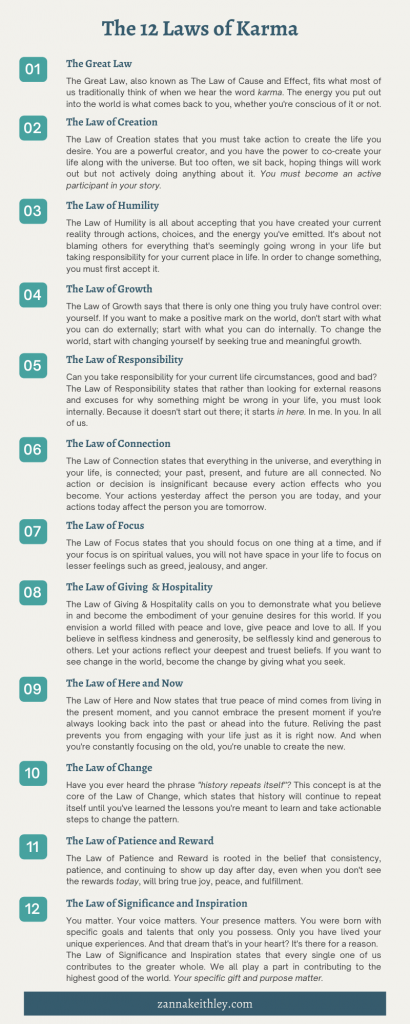
Pin this for later! The 12 Laws of Karma Explained (A Complete Guide) 
Zanna Keithley is an author, poet, and social media content creator who writes short prose dedicated to inspiring readers to follow their dreams, trust their intuition, and create beautiful and fulfilling lives. You can find her original writing on Instagram @zannakeithley.
-
What Are Mala Beads? (A How-To Guide)
What are mala beads and how are they used? In this article, you’ll get the complete guide to using mala beads in meditation, manifestation, gratitude practices, and more. Plus get my recommendations for beautiful mala beads you can purchase today.
Disclaimer: This post contains affiliate links. If you purchase a product using my link, I may receive a small commission at no extra cost to you. As an Amazon associate, I earn from qualifying purchases. You can read my full disclosure policy here.
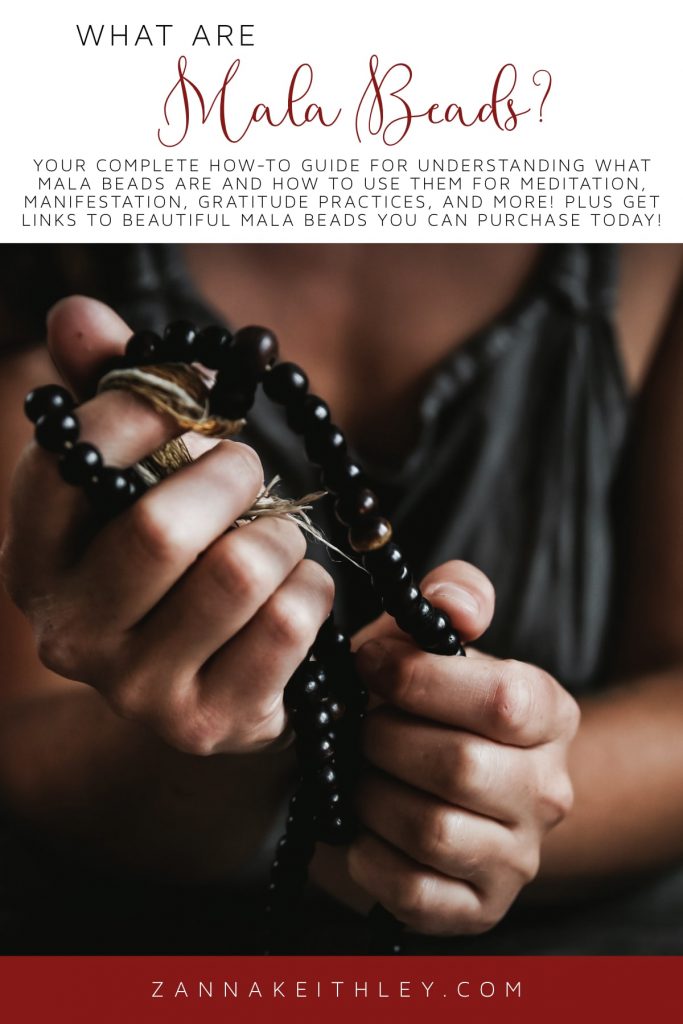
Pin this for later! What Are Mala Beads? A Complete How-To Guide What Are Mala Beads?
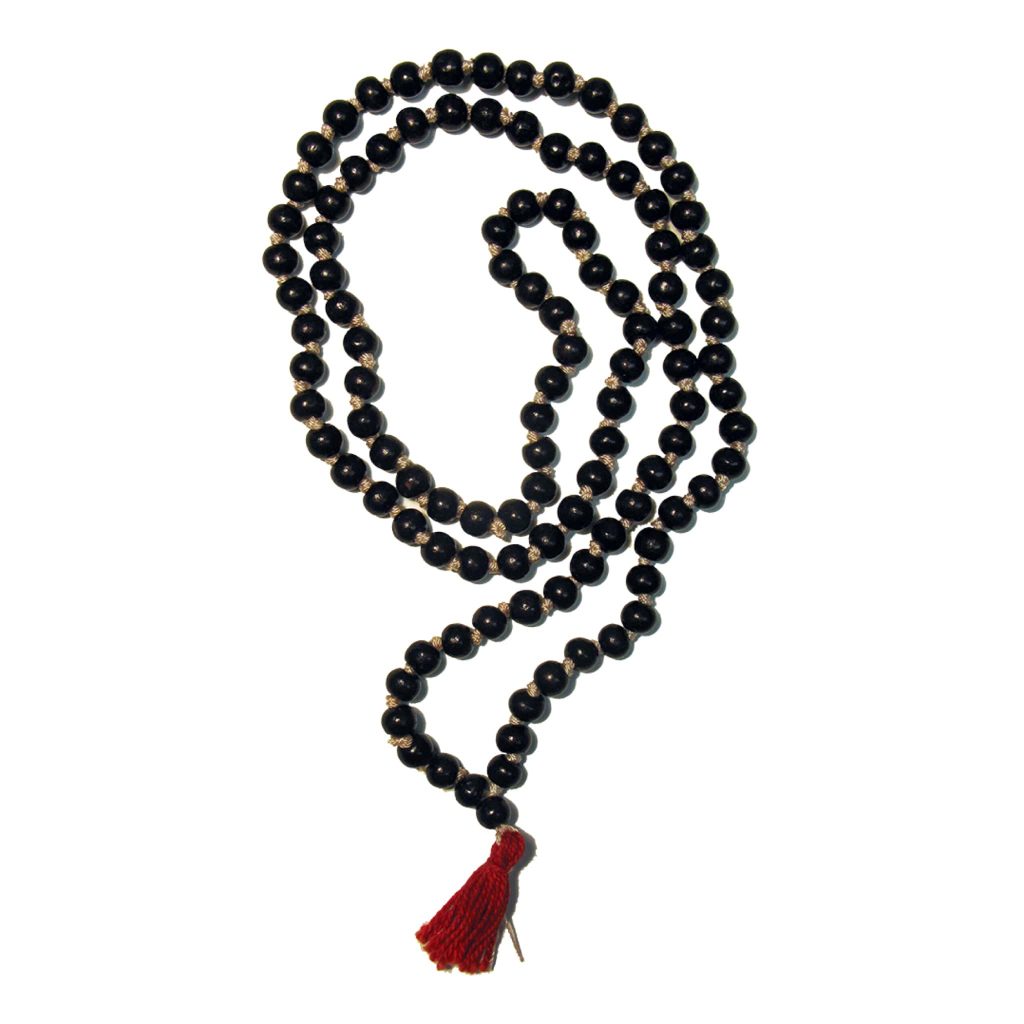
For centuries, many different religions have been using prayer beads as part of their spiritual practice. My grandpa was Catholic, and growing up, I remember seeing him pray with his rosary set between his fingers at least once a day. At his funeral, there were multiple stories told of my Grandpa Moose and his rosary, and there was also a service in which loved ones honored his memory by reciting the Holy Rosary as they held rosary beads.
Mala beads have been used as part of a spiritual practice for over 3,000 years, most prominently associated with Hinduism and Buddhism. However, they have gained widespread acceptance among people of various spiritual backgrounds, and in many cultures, they’re used as part of a non-religious affiliated meditation practice.
So what exactly are mala beads?
Mala beads are a string of beads used as a meditation and mindfulness aid. Typically, they have 108 beads, and while each necklace or bracelet is unique, they generally all have the same standard components, such as the Guru Bead, the Tassel, Marker Beads, and Spacer Beads. We’ll define the function of these different components below.
The most common use of mala beads is to recite a mantra during meditation. They’re also often used as a mindful breathing tool, and you can even use them as part of your manifestation practice. Many people who have a difficult time sitting still during meditation find that incorporating mala beads into their practice helps them to relax and cultivate a greater sense of mindfulness as they meditate.
Below, you’ll learn about the various components of mala beads, how to use them, and how to choose the best mala beads for you.
In This Article
- Common Components Of Mala Beads
- How To Choose Mala Beads
- Benefits Of Using Mala Beads
- How To Use Mala Beads
- Mala Beads To Purchase
Common Components Of Mala Beads
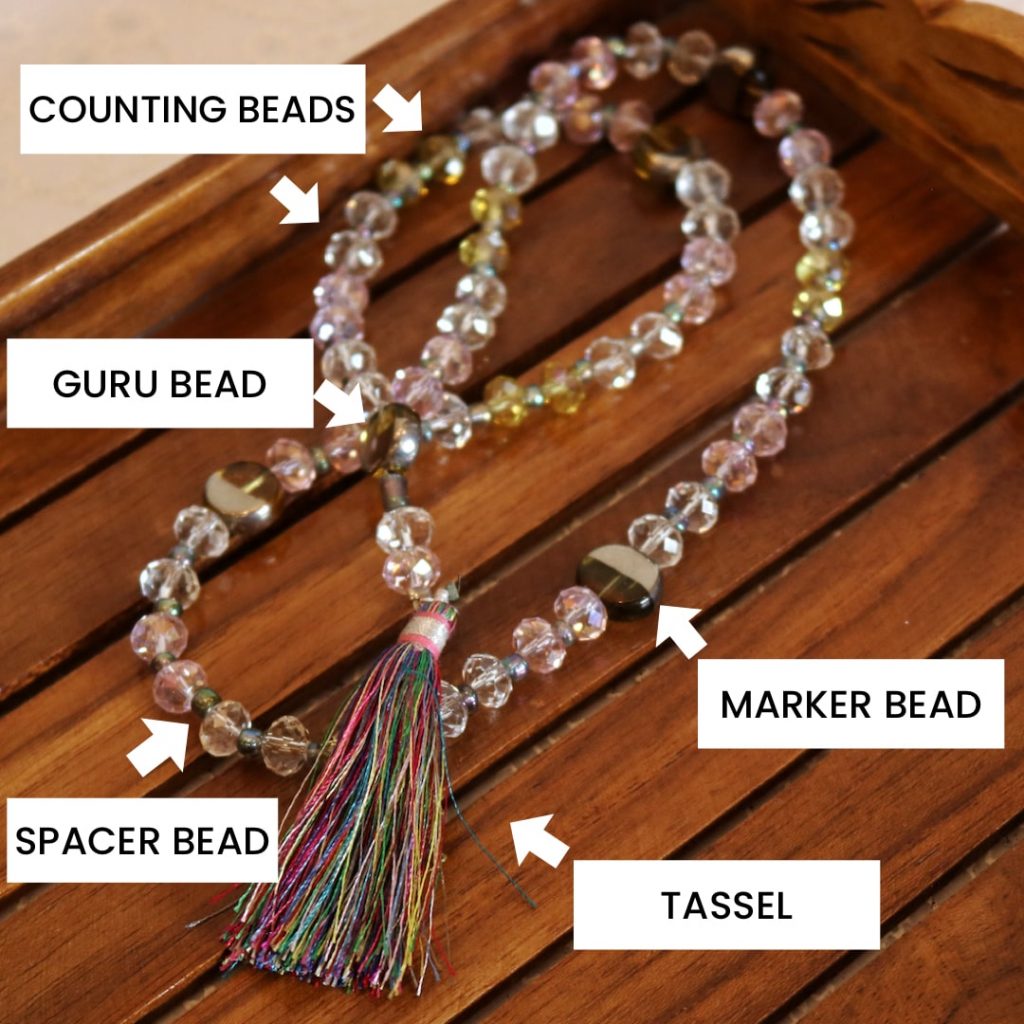
As mentioned above, the common components you’ll see in a mala bead necklace are the following:
- 108 Counting Beads
- Guru Bead
- Marker Beads
- Spacer or Decorative Beads
- Knots
- Charm
- Tassel
Here’s the function of each of these components:
108 Counting Beads
Each mala necklace typically has 108 identical counting or primary beads, though some have less, which is okay. In meditation, it’s typical to hold the mala beads with one hand, draped across your fingers, and touch each counting bead with the thumb and middle finger one at a time, working your way through the entire necklace. You’ll complete one full inhale and exhale with each bead before moving to the next. (More on this practice in the How-To section below.)
Guru Bead
The Guru Bead is your starting point. It is typically bigger and has a distinct look from the other beads on the mala necklace or bracelet, though sometimes it’ll be the same type of bead as the marker beads. You’ll usually find this bead attached to the tassel.
Marker Beads
You’ll typically find four marker beads on a mala necklace, spaced at every 27th bead. These marker beads are usually slightly bigger than the counting beads and often a different color. The marker beads are a way to help you come back to your meditation if your mind has strayed. When you come across a marker bead, it reminds you to return to the present moment. In essence, this is a beautiful mindfulness tool. (Note that not all malas have marker beads.)
Spacer/Decorative Beads
The spacer beads are typically smaller (and often flatter) beads placed between larger beads. Depending on the unique necklace, you may see these in different sections, such as between the Guru bead and counting beads or before and after every marker bead. Note that not all mala necklaces have spacer beads. You do not count the spacer beads during your meditation.
Knots
In a typical mala necklace, you’ll find a small knot between each bead. The knot ensures that if the string breaks, the beads will not be lost. This makes your mala stronger, and the knots can also help with the movement of the mala during your meditation.
Charm
Your mala may or may not have a charm on the end, often in place of the tassel. The charm is typically ornamental, though you may choose one that has special meaning to you, such as a lotus flower or chakra symbol.
Tassel
While the tassel may seem at first appearance to be decorative, it’s actually steeped in deep spiritual symbolism. The strings of the mala loop through all of the beads, coming together through the Guru bead and finishing in the tassel. Some view this coming together of the strings to be symbolic of oneness, both with the Universe and each other. It can also be viewed as one’s desire to reach enlightenment. While I didn’t list it here, you can also view the string or thread that the beads are threaded on to be an important component of the mala, as it’s the link that brings everything together.
Want to create your own mala beads? Check out Alice Peck’s Mindful Beads: 20 Inspiring Ideas for Stringing and Personalizing Your Own Mala Prayer Beads, Plus Their Meanings. This book includes the stories and meanings behind 20 types of beads, plus how to instill your own beads with significance, protection, and promise as you string them.
How To Choose Mala Beads
There isn’t a science to choosing your mala, which is a good thing if you’re like me and tend to follow your intuition when making decisions.
Choosing the right mala beads for you is truly an intuitive practice. As you start searching for the right one for you, you’ll find mala bead necklaces that come in all different colors and often are made of different materials. Some of these materials might include gemstones, pearls, wood, and lotus seeds.
This is one of the most important questions to ask yourself as you’re searching for mala beads:
“Do I find it beautiful?”
It truly is that simple. Find the one that speaks to you. If you’re browsing through mala beads and one nudges your heart, it’s very likely you’ve found the perfect mala necklace for you.
I know from personal experience, however, that it’s easy to get stuck in your own head when making these types of decisions. I have a history of over-analyzing my shopping choices, from what yearly planner I should purchase to what pint of ice cream I want to buy (and promptly consume). I love to follow my heart, but sometimes my heart wants mint chocolate chip and cookies n’ cream.
If you’re having trouble choosing, I find it helpful to step back and ask myself, “What are my intentions?” Do I want to use these mala beads to help me cultivate spirituality? Do I want to feel a connection with a higher power? Do I want to improve my meditations? Is this a way for me to feel more calm and relaxation?
Once you’ve established your intentions, you may have a clearer picture of which mala beads you want to purchase.
Finally, if you’re in a physical store, it’s always helpful to pick up the mala beads and get a feel for them within your fingers. Since you’re going to be holding these beads for an extended amount of time, you want to make sure you choose ones that feel good to you.
- You Might Also Like: How to Create a Meditation Table (A Complete How-To Guide)
Benefits of Using Mala Beads
So why use mala beads? We’ve touched upon this a little bit above, but let’s dive into all the reasons mala beads can be beneficial to you:
- Promotes Mindfulness: As you take conscious inhales and exhales with each bead before moving onto the next, you’re more likely to remain in the present moment throughout your meditation. And if your thoughts do drift, you’ll eventually reach one of the marker beads, which will gently bring you back to the here and now.
- Can Improve Your Meditation: This is especially true if you have a hard time sitting still for extended amounts of time. If you find yourself wanting to move around and fidget while meditating, mala beads are the perfect tool for you to incorporate into your practice. It’s, in a sense, mindful fidgeting. (Kind of?)
- Helps Improve Your Breathwork: I tend to be pretty good at consciously paying attention to my inhales and exhales while meditating . . . at least during the first few minutes. I’ve found that mala beads empower me to be more conscious of my breathing throughout my meditation. And to circle back to the two bulletpoints above, this helps to promote mindfulness and improves my meditation.
- Connection With a Higher Power: The mala is more than just its individual components; it’s an entire unit brought together by the thread that links together the counting beads with the marker beads with the Guru bead with the tassel. This unity represents our own unity: unity with our higher selves, unity with each other, and unity with a higher power.
How To Use Mala Beads
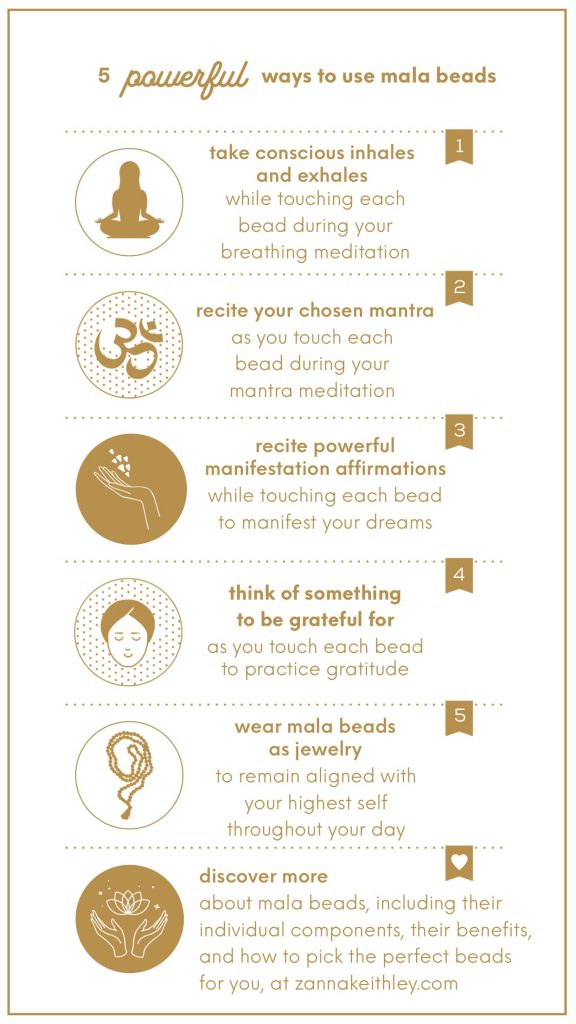
Meditation
While using mala beads in meditation may seem overwhelming at first, it’s actually an extremely simple and effective way to meditate that requires little to no technical ability.
Before using mala beads in meditation, I want you to give yourself permission to be imperfect, especially as you’re first learning. It’s okay if you don’t follow all of the steps perfectly when you’re just starting. The most important thing is intention. If your heart is in the right place, and your intentions are positive, this is far more important than perfection.
Furthermore, you can use your imperfections as a way to practice mindfulness, non-judgmental awareness, and compassion. Were you holding your mala beads with the incorrect fingers? Was your mind so distracted, you missed the marker beads? Notice, accept, and keep going.
Here’s your step-by-step directions for how to use mala beads in meditation. I’ll discuss some alternative uses below.
Breathing Meditation
- Find a quiet spot where you won’t be disturbed. If you already have an ongoing meditation practice, you may already have a time and space that works for you. If you use the full 108 beads, this practice typically takes 30 minutes. If you decide not to use the full 108 beads, that’s okay. You can choose to stop at one of the marker beads instead.
- Drape your mala beads over your non-dominant hand. Make sure you feel comfortable and that the beads will be easy to move. With your thumb and middle finger of your dominant hand, gently touch the Guru bead. You typically do not use the index finger in this practice, as the index finger is connected to the Ego.
- Touch the first counting bead, and take one full inhale and exhale. Then, move to the second bead. Continue this process, inhaling and exhaling once per bead. You’ll stop when you make your way around back to the Guru bead.
- As mentioned above, you can choose to shorten your meditation by stopping at one of the marker beads. Alternatively, if you wish to extend your meditation, you can turn the mala around and start again. Note that it’s common practice not to jump over the Guru bead. So if you’re extending your meditation, rather than jumping over it to start back at the first counting bead, you’d turn the mala around and go in reverse.
Mantra Meditation
I was first introduced to using mala beads in meditation through the practice of mantra meditations. A mantra meditation is one in which you repeat a specific mantra throughout the meditation (traditionally, 108 times). This form of meditation is also known as japa meditation.
Your chosen mantra should be something that resonates with you. It can be a sacred word, affirmation, divine name, or simply a word such as love or peace.
Here are a few examples of possible mantras you could use:
- Aum or Om (This has many rich and deep meanings. It is known as the word of God, the sacred sound of the Universe, and the union of the mind, body, and spirit.)
- Om Shanti Om (Universal Peace)
- Om Shanti Shanti Shanti (Peace of Mind, Body, and Speech)
- Love
- Peace
- I am love.
- I am peace.
- I am worthy.
- I am enough.
- Love guides me.
To perform a mantra meditation using mala beads, you’ll essentially take the same steps you do with the breathing meditation. However, in place of the conscious inhales and exhales, you’ll repeat your chosen mantra as you touch each bead. You can repeat your mantra either internally, at a whisper under your breath, or out loud. Do what makes you feel most comfortable.
Finally, here’s great 5-minute tutorial on how to hold and use your mala beads.
Alternative Uses
While meditation is the most common way to use mala beads, it’s not the only way. Here are a few other practices for using mala beads:
- Wear Your Beads: Wearing your mala beads is more than just a fashion statement; it’s a profound practice to connect you to your highest self and cultivate mindfulness in your life. When you wear your beads, you can set the intention to remember the same peace and serenity you feel when you’re meditating. The most common ways to wear your beads are as a necklace or wrapped around your wrist as a bracelet.
- Manifestation: The most powerful way to use mala beads for manifestation is to recite affirmations for manifestation as you touch each bead. To do this, you’d follow the same steps I wrote above for the breathing meditation, but in place of the conscious inhales and exhales, you’d recite a positive affirmation. As you do this, consciously make sure to feel the positive energy of the affirmation flowing through you. It’s up to you whether you’d like to recite different affirmations or repeat the same affirmations throughout. For some ideas of affirmations to use, here are some Law of Attraction affirmations and manifestation affirmations to get you started.
- Gratitude Practice: This has become one of my personal favorite ways to use mala beads. Again, you’ll follow the same instructions as above for the breathing meditation, but here, you’ll think of one thing you’re grateful for as you touch each bead. I know it may seem like 108 things is a lot, but it actually becomes pretty easy once you get going. For instance, you can think about each individual part of your body, from your eyes to your lips to your lungs, arms, stomach, legs, and feet (and everything in-between). You can also think about individual people, memories, and luxuries we often take for granted, like air conditioning and running water.
- You May Also Like: 9 Guided Meditations For Manifesting Your Desires
Mala Beads to Purchase
If you’re looking for beautiful mala beads to incorporate into your meditation practice, check out the links below! Note that most of the selections below have more color and stone options when you click on the link.
And that’s it! Have you ever used mala beads in your meditation practice? Or do you have questions about how they’re used? Share your tips and questions in the comment box below.
And for more resources on spirituality, meditation, manifestation, and all things self-love, be sure to connect with me on Instagram and Pinterest, where I’m posting positive affirmations and empowering messages daily.
More Articles You May Like
- How To Use Affirmation Cards (A Complete Guide)
- 500 Beautiful Things To Be Grateful For Today
- Vision Board Ideas To Visualize Your Ideal Future (With Examples)
- 9 Powerful Guided Meditations For Manifesting Your Dreams
- 11 Beautiful Poetry Books About Self-Love & Acceptance
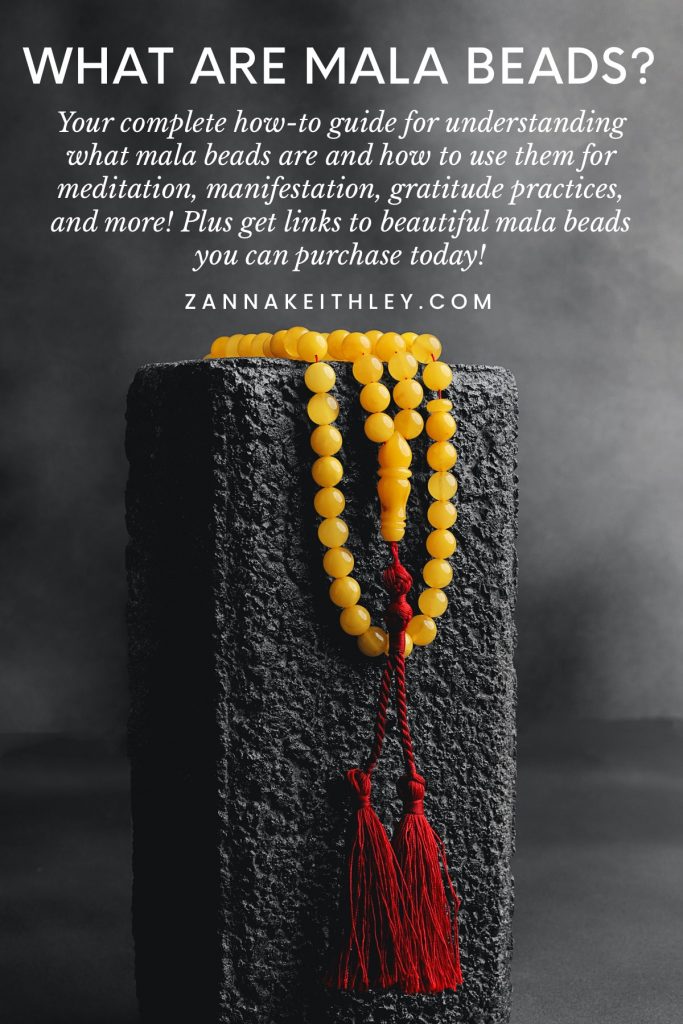
Pin this for later! What Are Mala Beads? A Complete How-To Guide 
Zanna Keithley is an author, poet, and social media content creator who writes short prose dedicated to inspiring readers to follow their dreams, trust their intuition, and create beautiful and fulfilling lives. You can find her original writing on Instagram @zannakeithley.
-
9 Guided Meditations For Manifesting Your Desires
In this article, discover nine powerful guided meditations for manifesting love, abundance, success, and so much more. (With links to each meditation so you can begin your manifesting journey today.)

Pin this for later! 9 Guided Meditations For Manifesting Your Desires Getting Started: Guided Meditations For Manifesting
Meditation is a profound way to connect to your heart’s deepest dreams and desires. Not only can meditation help you to cultivate inner peace, tap into your intuition, and lean a little deeper into gratitude, but it can also be a powerful way to visualize and align with the thoughts, feelings, and images of having your desires in this present moment.
And guided manifestation meditations are a powerful place to start.
First, what exactly is a manifestation meditation?
A manifestation meditation is a meditation specifically designed to help you align with the positive thoughts and emotions of your dreams and desires, lifting your vibrations so that you become a magnet for all of your deepest dreams.
Guided meditations for manifesting can be an easy yet profound way to help you set intentions, cultivate gratitude, lift your vibration, and visualize the truest, most beautiful life you can imagine for yourself.
And the best part? They don’t actually have to take very much time.
As you’ll see, most of the guided meditations below are only about ten minutes long, yet they’re filled with tools to help you embody the vibration of already having your dreams and desires in this present moment.
While you can do these meditations any time of the day, I especially love to listen to them in the morning shortly after I wake up. I’ve found that by starting my day with a meditation, I set a positive foundation for the day ahead.
And when you specifically listen to a guided meditation for manifesting your desires in the morning, you can carry that positive energy from the meditation with you throughout the day.
Below, I’ve linked to nine of my favorite guided manifestations for manifesting love, abundance, and more. You’ll notice that all of these meditations are available for free through Insight Timer. I have no affiliations with Insight Timer and don’t receive anything for these links. I’ve been using Insight Timer for years, and it’s by far my favorite app on my phone. I’m including it here because I wholeheartedly recommend it.
If you want to download the app, you should be able to find it on your device’s app store. You can also check out their website to learn more about what they offer.
I sincerely hope these guided meditations for manifesting your dreams can serve and support you on your path as you move forward in creating a life that feels good and true to you.
And know that it doesn’t matter if you’re new to meditation or an experienced meditator; these meditations will serve you throughout your entire journey. (I’ve been meditating for years, and I still come back to many of these same meditations repeatedly.)
Guided Meditations For Manifesting
Manifesting A Positive Day
Liza Colpa’s entire catalog of guided meditations is a treasure chest filled with beautiful and profound tracks dedicated to helping you set intentions, cultivate gratitude, and release what no longer serves you to make space for more love, peace, and abundance to come into your life. Her voice is effortless and soothing, and I find myself coming back to her meditations multiple times a week. With over 425k plays, her 10-minute Manifesting A Positive Day is her most popular track – for good reason. In this track, Liza gently guides you through a series of affirmations as well as a visualization practice designed to help you envision your best possible day. When you’re finished with this track, you’ll be ready to step forward feeling a sense of confidence, contentment, trust, and groundedness that will remain with you throughout your day.
Attracting All That You Desire
Carrie Suwal is another Insight Timer teacher who has an effortlessly gentle and soothing voice that will help you to feel relaxed and at peace as you follow her soft yet powerful guidance. Her Attracting All That You Desire meditation uses practices rooted in visualization, gratitude, affirmations, and positive vibrations to help you connect to your goals and dreams. This is a beautiful meditation for beginners and experienced meditators alike. If you’re like me, you’ll want to bookmark it and repeat it over and over again.
Being In The Energy of Millions, Billions, Trillions
If you’re looking to manifest financial wealth and prosperity, Hayley Carr’s Being In The Energy Of Millions, Billions, Trillions is the perfect guided meditation to help you vibrate at the frequency of unlimited abundance. In this powerful meditation, Hayley guides you to visualize receiving your desired amount of money (no amount is too big) as you feel all the wonderful feelings of having that amount of money right now. Hayley’s voice and words are pure magic. This is another one you’ll want to save and play on repeat.
Achieve Your Greatest Desires
Vanessa Michele’s Achieve Your Greatest Desires is another powerful manifestation meditation that takes you on a journey of envisioning your ideal life. Before diving into the visualization, Vanessa does a wonderful job of helping you to relax, soften your muscles, and breathe intentionally and effortlessly. She then helps you to notice your current vibration and gently guides you to raise your vibration through visualizing your deepest dreams and desires surrounding you right now. Vanessa’s calm guidance will leave you feeling grounded, centered, and ready to create the beautiful, abundant life of your dreams.
Believe
If you’re feeling uncertain about your ability to manifest the life you want, Annemaree Rowley’s Believe is the perfect meditation to help you realign with your true power. As she states, positive thoughts will bear positive fruit, and negative thoughts will bear negative fruit. But there’s no fake positivity here. Through her calm yet strong guidance, Annemaree gently guides you to a place of deep trust, knowing, and belief in your power and your path.
Manifest An Abundant Life
Amanda Sellers’ Manifest An Abundant Life is another profound guided meditation that uses the power of visualization to help you vibrate at the frequency of having your desires right now. What I love about this meditation is that Amanda begins by guiding you to harness the power of your breath to ground you in this moment. She then reminds you that the first step in manifesting is being grateful for all that you already have. Through gratitude, visualization, and positive vibrations, this guided meditation for manifesting an abundant life will help you walk into your day feeling inspired and empowered.
Live Your Desire Now
Lucy Love’s Live Your Desire Now is all about knowing what you want and focusing your energy on the presence of it as if it’s already yours – the perfect recipe for manifestation. Lucy gently guides you from living externally to living internally, focusing on your own inner world. In a calm and relaxed space, you’re called to think about something specific that you authentically desire and begin imagining what it would look and feel like to have your desire today. This short and sweet track is the perfect meditation for living your desired manifestation today.
New Moon Meditation
This one’s a little different, as it is specifically created for manifesting with the energy of the New Moon. In her New Moon Meditation, Camilla Sacre-Dallerup guides you through the process of setting intentions that align with what you truly want in life. I especially love the calming visualization experience she takes you on, as you connect with the energy of the New Moon and the new beginnings it represents. This is a quiet, soft, gentle guided meditation that helps you to focus on what truly matters in life – what you want to give your attention to, what you want more of, what’s worth giving your energy to – and release all the rest.
Manifest Love – Creative Visualization
No matter where you are in your life journey, Sharon Kirstin’s Manifest Love meditation is a powerful reminder that love has never left you. Sharon gently reminds you that the key to manifesting the love you desire isn’t outside of you; it’s within. I love all the wisdom Sharon shares, especially the gentle reminder that we must take intuitive action to manifest what we truly want in life. Sharon takes you on a powerful visualization journey where you see yourself connected to and wrapped in love at all times. By vibrating at the frequency of unconditional love, you invite even more love to come into your life – thus becoming a magnet for everything you desire.
What are your favorite meditation apps? Do you have any favorite guided meditations for manifesting love, abundance, and more? Share your favorites in the comment box below!
And for more manifesting tips, daily affirmations, and lots of positive vibrations, be sure to follow me on Pinterest and Instagram.
More Manifestation Resources
- The Importance Of Taking Small Steps (For Manifestation)
- How To Manifest On Paper In 5 Easy Steps
- Morning Routine Checklist For Manifestation (Free Printable PDF)
- Manifestation Challenge: Free 30-Day Manifestation Calendar
- Candle Colors For Manifestation (A Complete Guide)


Zanna Keithley is an author, poet, and social media content creator who writes short prose dedicated to inspiring readers to follow their dreams, trust their intuition, and create beautiful and fulfilling lives. You can find her original writing on Instagram @zannakeithley.
-
50 Meditation Affirmations to Feel Grounded & Secure
In this post, discover 50 meditation affirmations to help you feel grounded, peaceful, and secure, no matter what’s going on in your external world. These affirmations can also be used in your daily life to cultivate a sense of deep inner peace and harmony as you continue through your day.
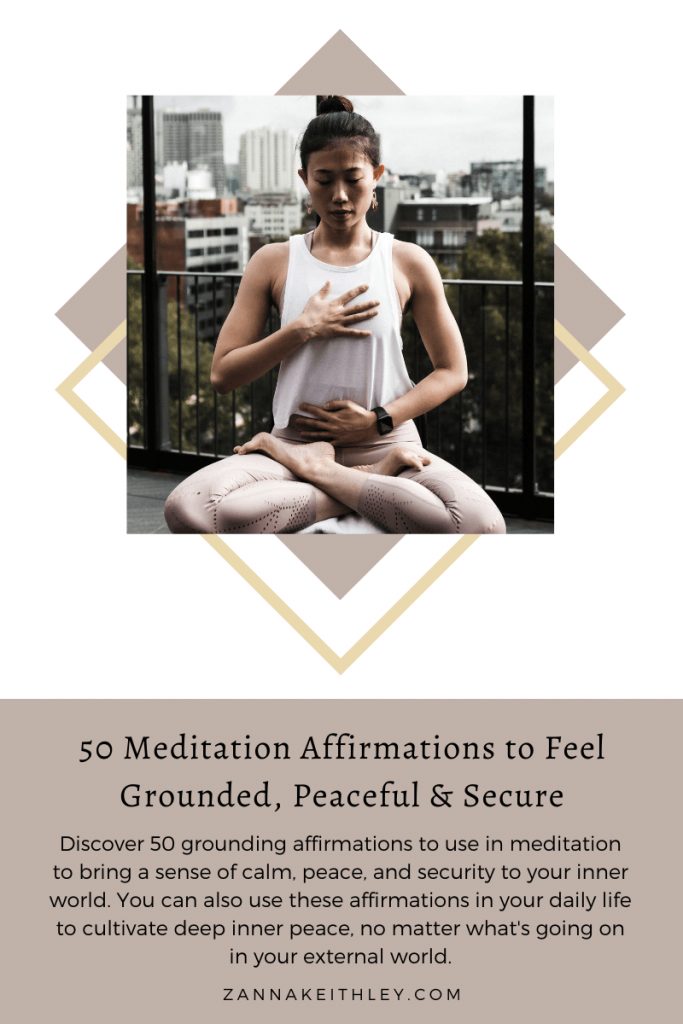
Pin this for later! 50 Meditation Affirmations to Feel Grounded, Peaceful & Secure How to Use Meditation Affirmations
An affirmation is any statement you make about yourself and/or the world that you affirm to be true. Positive affirmations, specifically, are present-tense statements that are designed to uplift and encourage while boosting self-belief and supporting your overall well-being.
If you meditate regularly, you may already incorporate affirmations in your meditation in some capacity. When I first started meditating, I solely focused on my breathing during meditations. It wasn’t until I started listening to guided meditations that I began incorporating affirmations, as well as other practices such as visualization, in my daily meditations.
So what exactly are meditation affirmations, and how do you use them?
Truly, a meditation affirmation can be anything. For instance, if you want to connect with your creativity, you might recite affirmations for creativity during your meditation. Or if you want to create more prosperity in your life, you can use affirmations to manifest abundance.
Personally, when I think about meditation affirmations, I tend to think about affirmations that invite a sense of calm, stability, and inner peace into my world. I like to use meditation affirmations that help me to feel centered and grounded, no matter what’s going on in my external world.
There are no hard rules for using meditation affirmations. You can incorporate them as a small part of your meditation, or you can center your entire meditation around using calming and/or empowering affirmations. It’s also okay to say your affirmations either in your head, at a whisper, or aloud; it just depends on what feels most comfortable for you.
Below are 50 meditation affirmations to help you feel grounded, peaceful, and secure. Most of these affirmations are fairly short and easy to remember, so you can choose to memorize the ones that resonate most or keep a list of affirmations nearby during your meditation. You can also choose to focus on just one affirmation during your meditation or cycle through several at a time. Do what feels most comfortable and best supports your mind, body, and spirit.
Meditation Affirmations
- I am love.
- I am light.
- I am peace.
- I am calm.
- I am eternal.
- I am infinite.
- I am whole.
- I am grounded.
- I am breathing in. I am breathing out.
- Love guides me.
- Love flows to and through me.
- I am loved, loving, and lovable.
- I know deep inner peace.
- I inhale love. I exhale suffering.
- I inhale peace. I exhale worry.
- I am pure, positive energy.
- I feel safe in my body.
- I feel strong in my body.
- My body is a powerful healer.
- I am strong in mind, body, and spirit.
- I own my power and strength.
- My heart is grateful and my mind is at peace.
- I feel peaceful, grounded, and secure.
- Eternal peace flows to and through me.
- This moment is exactly as it’s meant to be.
- I am exactly where I’m meant to be.
- I surrender my worries.
- All is well with my soul.
- Today is a miracle.
- I love myself fully now as I continue to evolve.
- I am true to myself, always.
- I accept all of myself.
- I choose to love my imperfect self perfectly.
- I am enough, just as I am.
- I hold space for myself and honor my needs.
- I honor my truth.
- I love all parts of me equally.
- Love is my anchor.
- Love is my natural state.
- I am connected, protected, and whole.
- I am grateful for the breath that flows through my lungs.
- My heart is strong. My mind is healthy. My spirit is radiant.
- Every cell of my body is aligned with gratitude and love.
- I lead with love.
- I live in love.
- In love, I am whole.
- With each breath, I feel more at peace.
- I am aligned with my highest self.
- In this moment, I have everything I need.
- Life is beautiful. I have time. All is well.



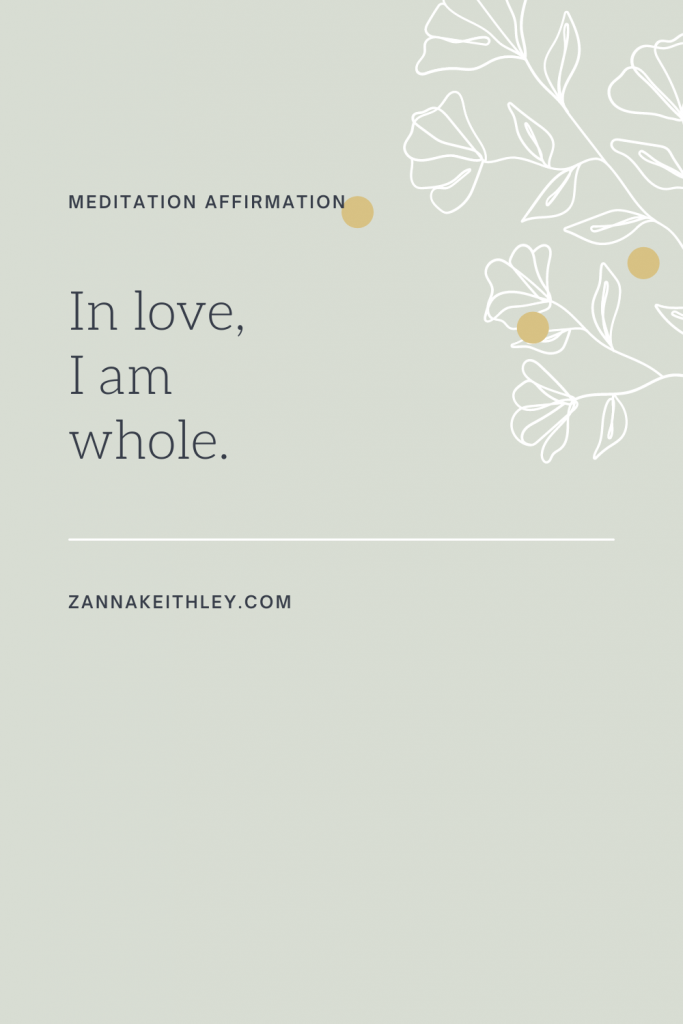



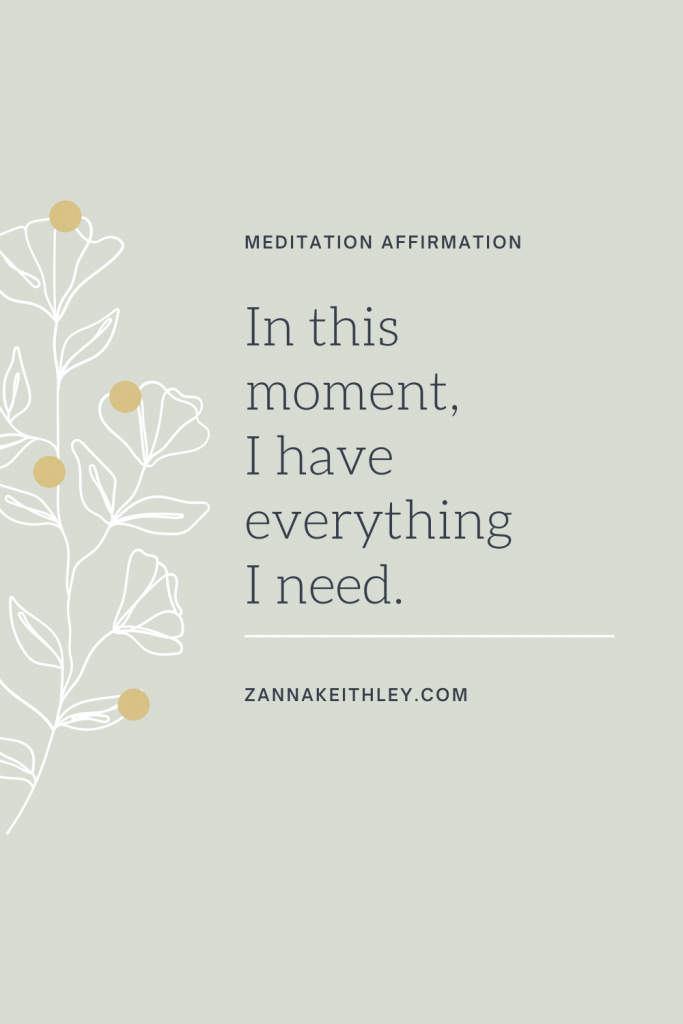
For more mindfulness tips and self-care ideas, plus lots of gentle nudges and loving words, be sure to follow me on Pinterest and Instagram!
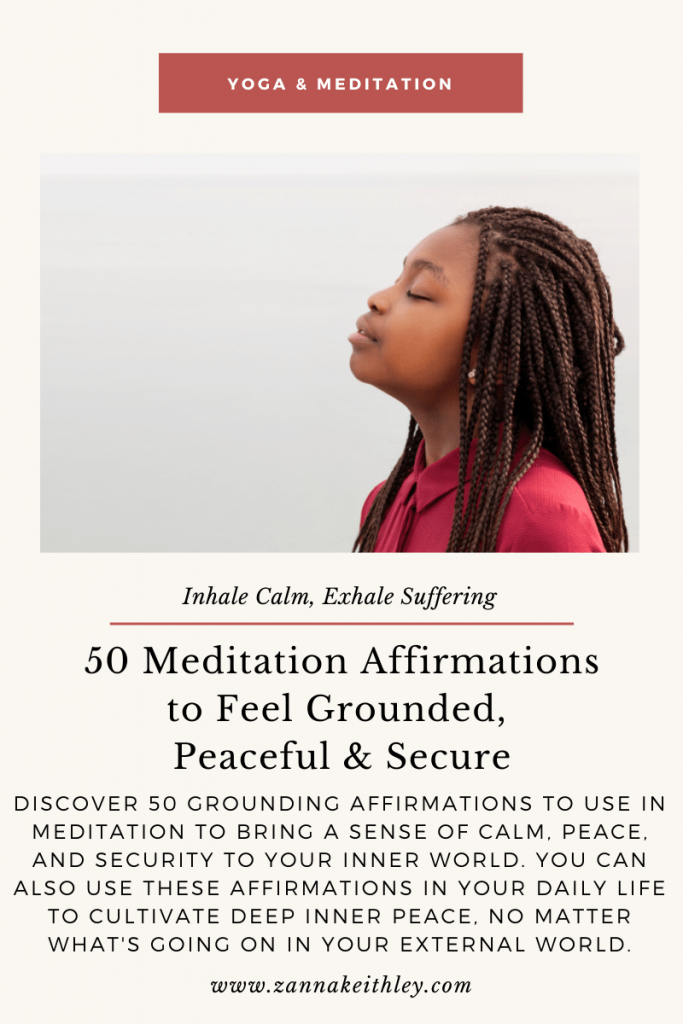

Zanna Keithley is an author, poet, and social media content creator who writes short prose dedicated to inspiring readers to follow their dreams, trust their intuition, and create beautiful and fulfilling lives. You can find her original writing on Instagram @zannakeithley.

